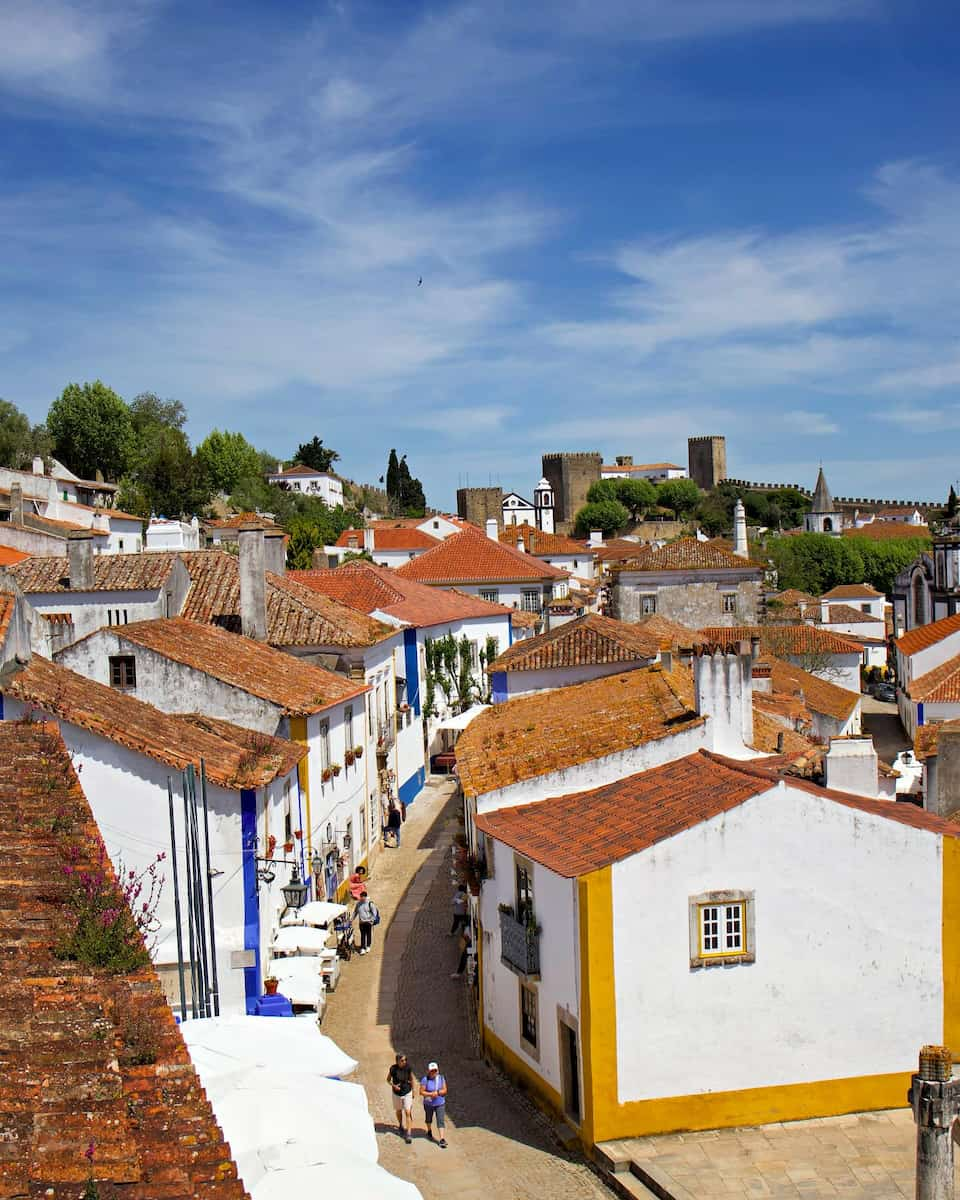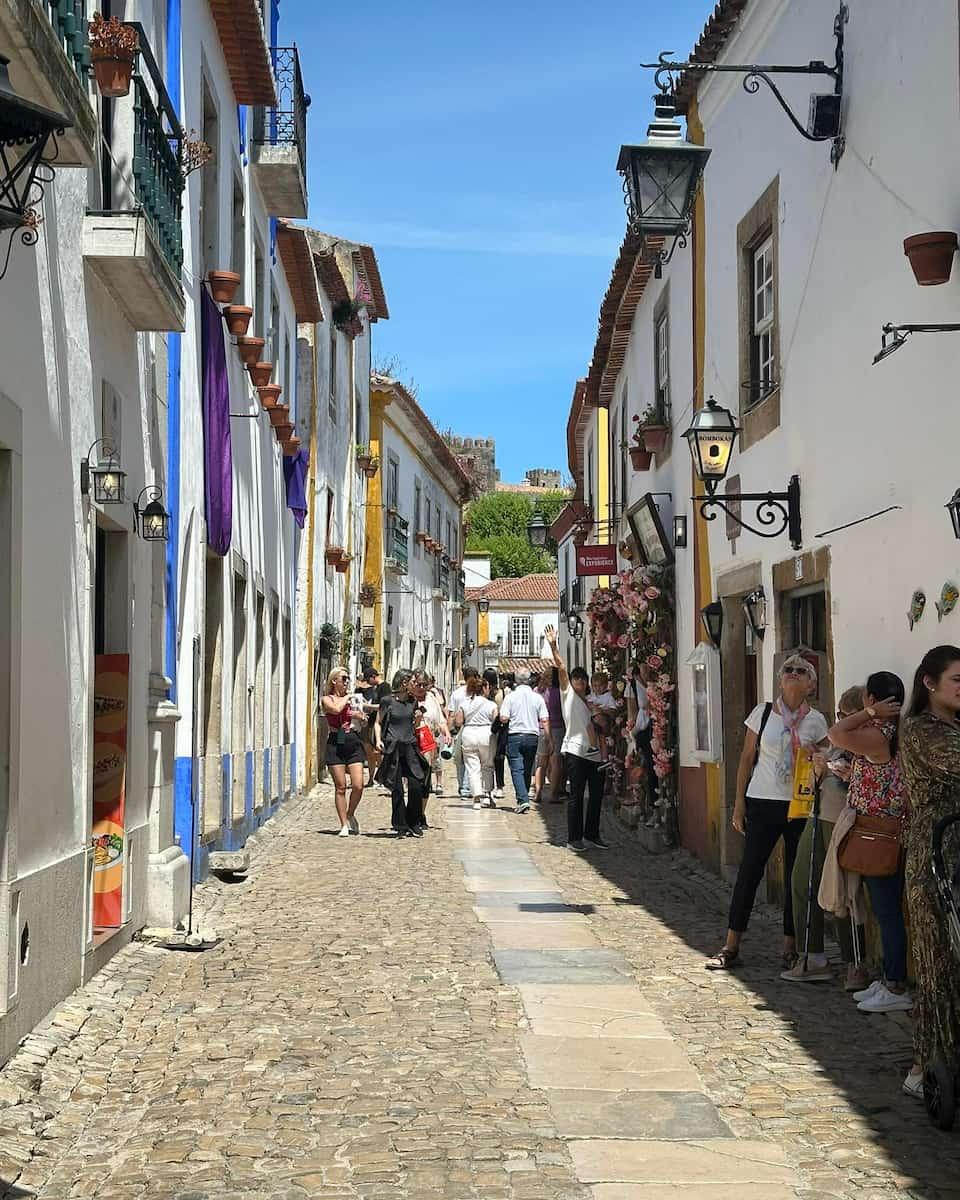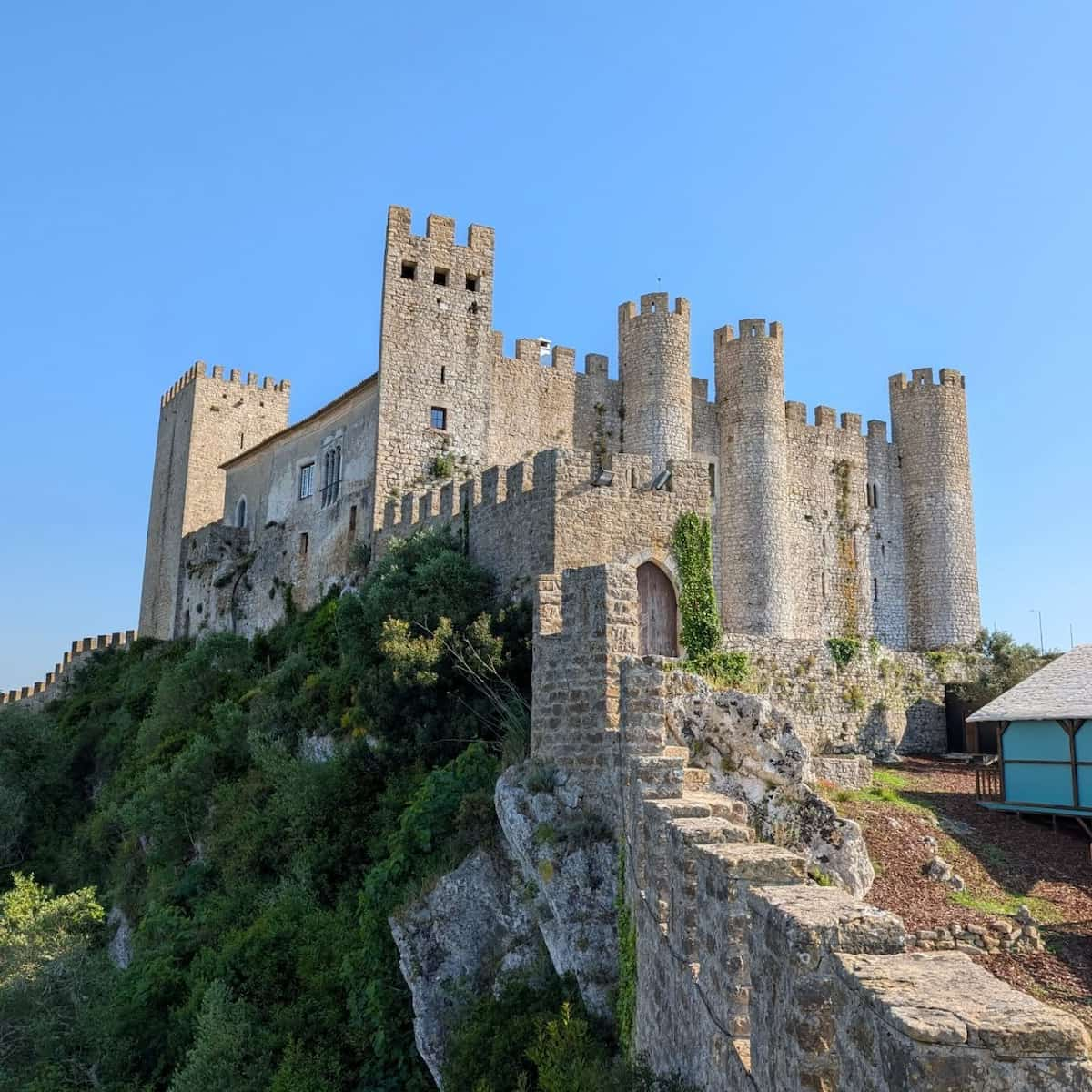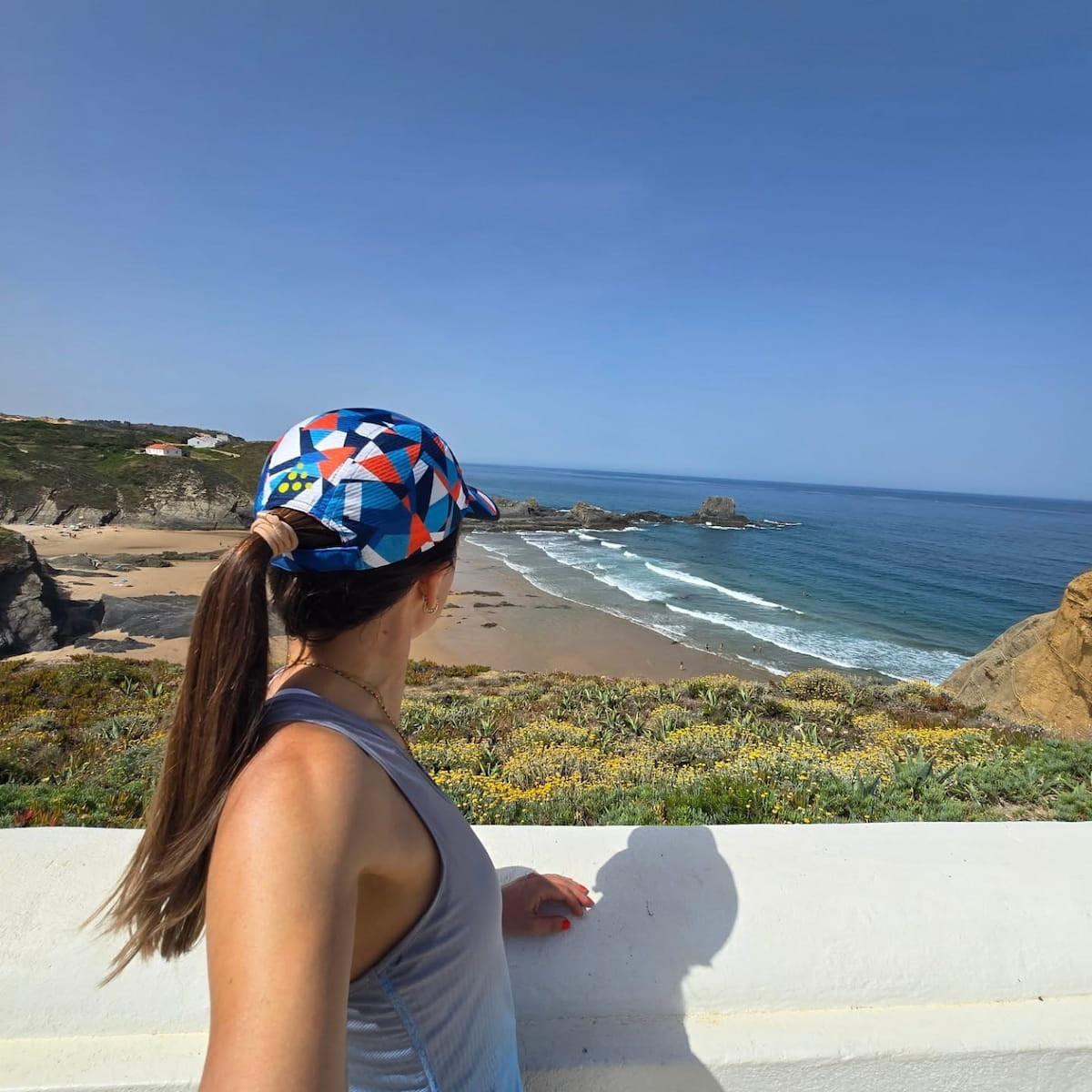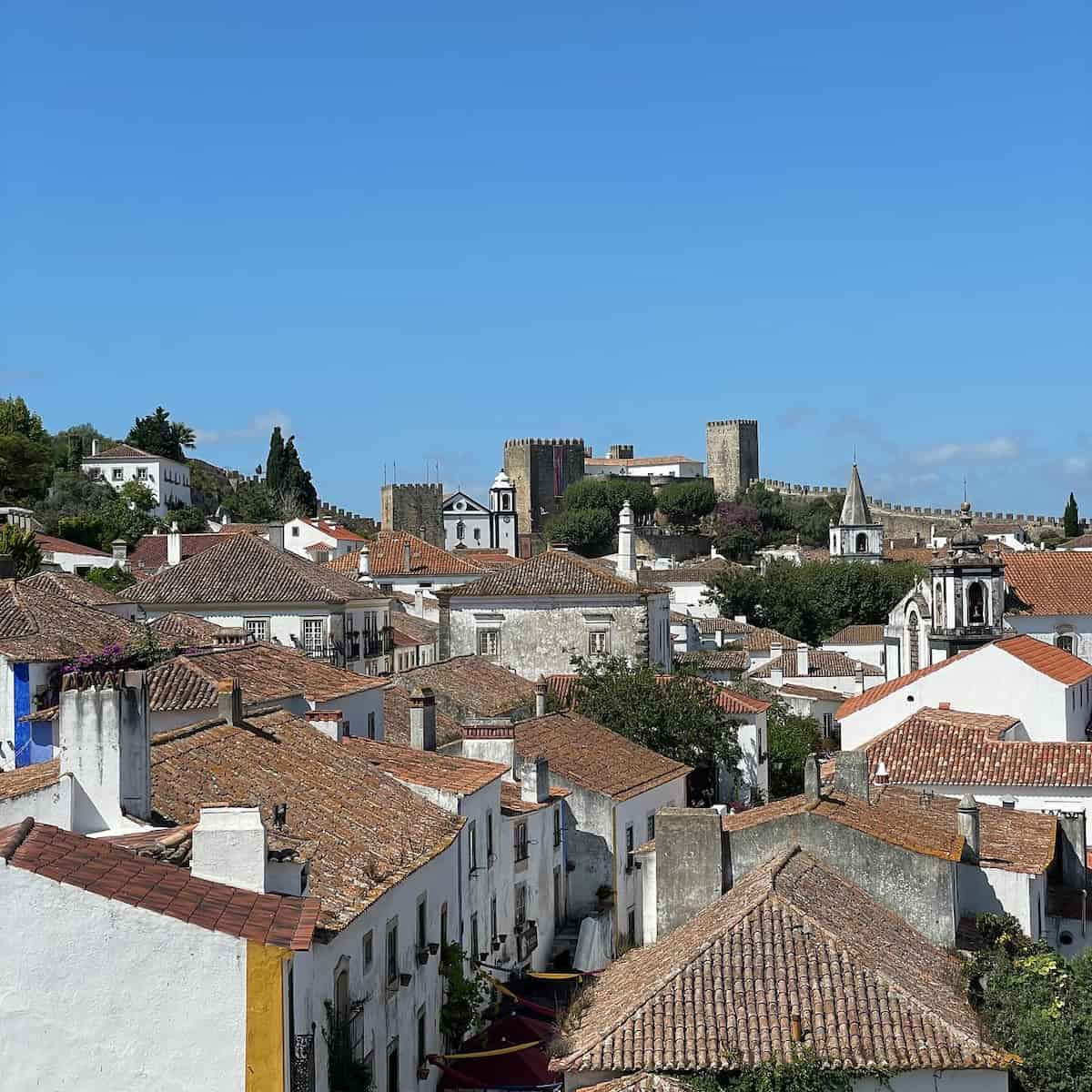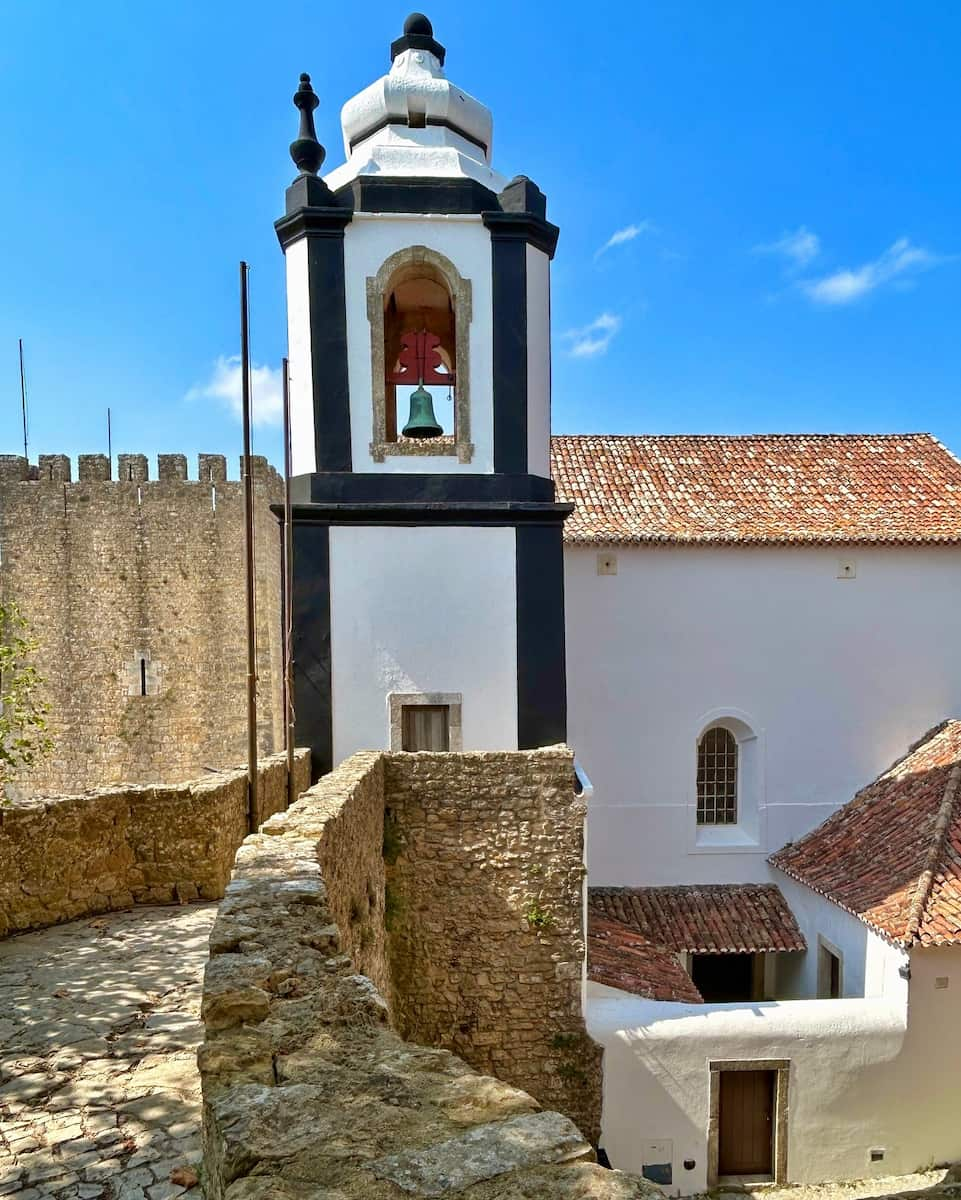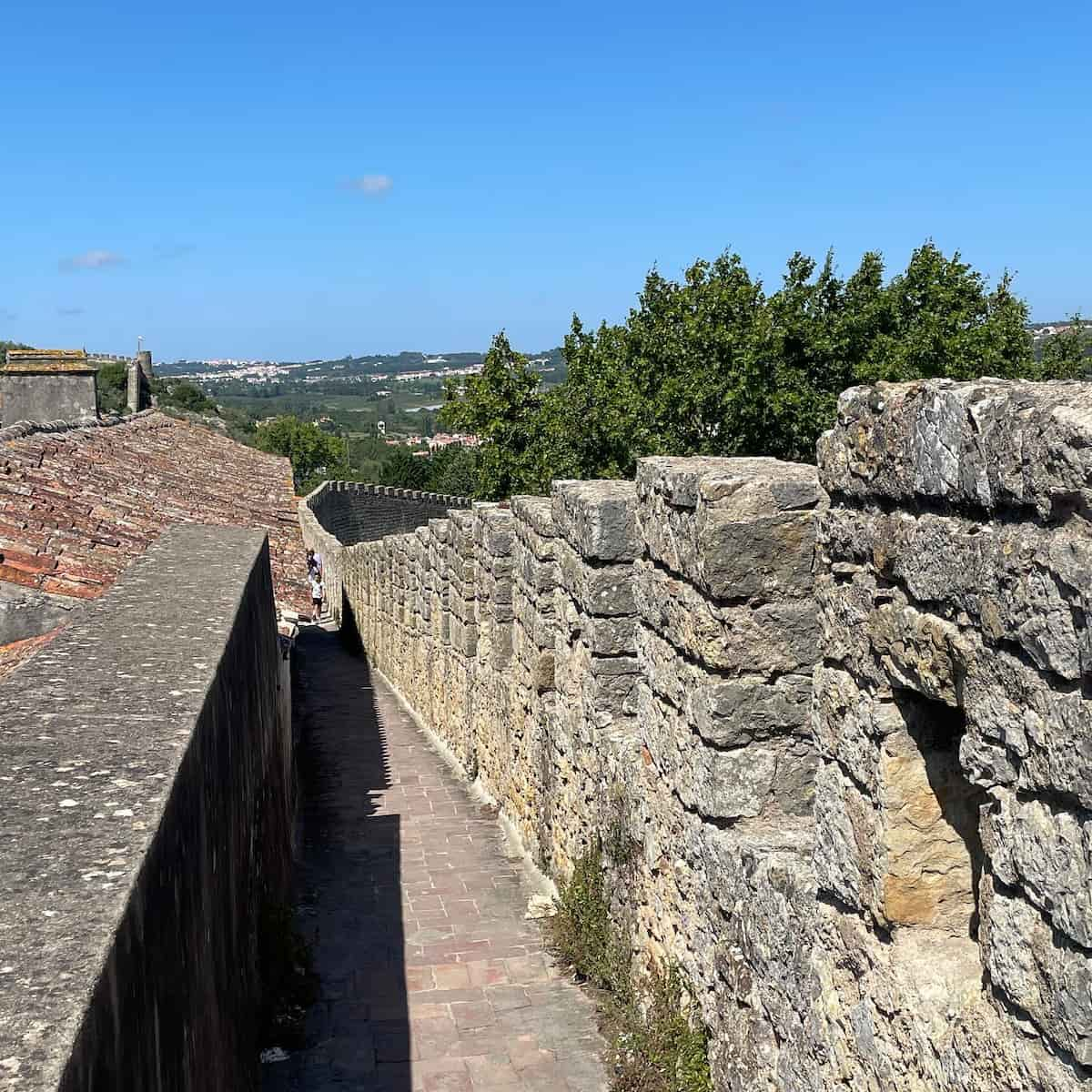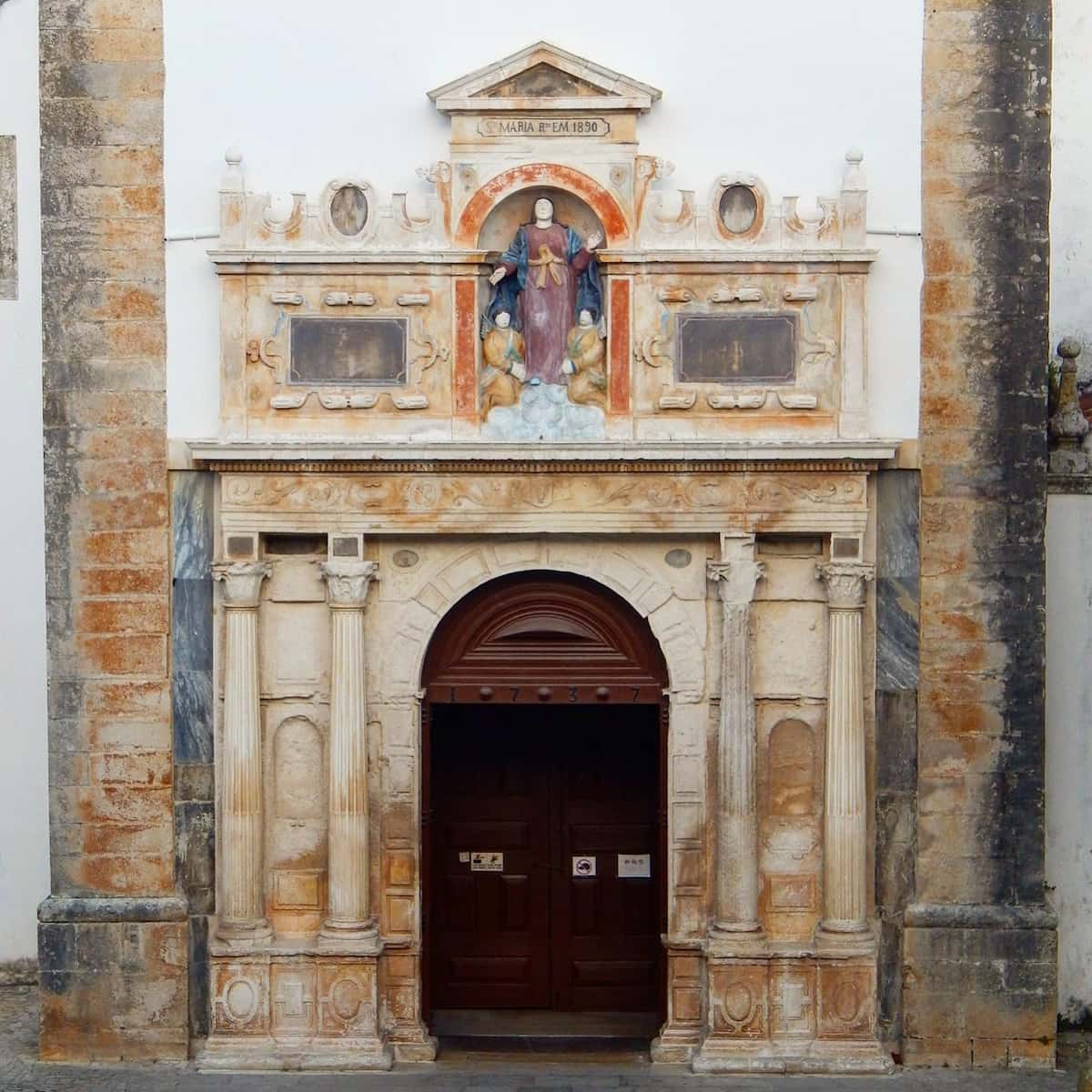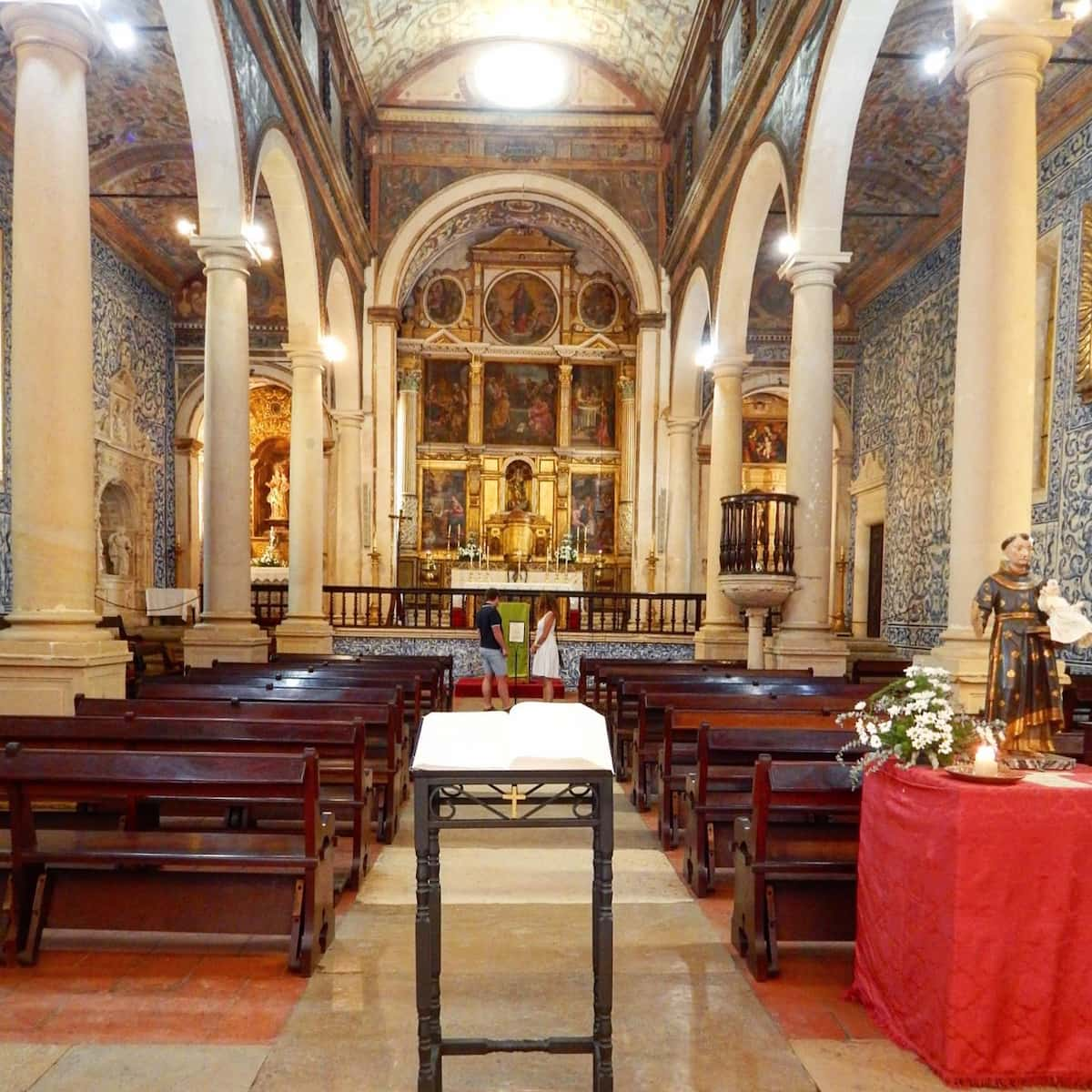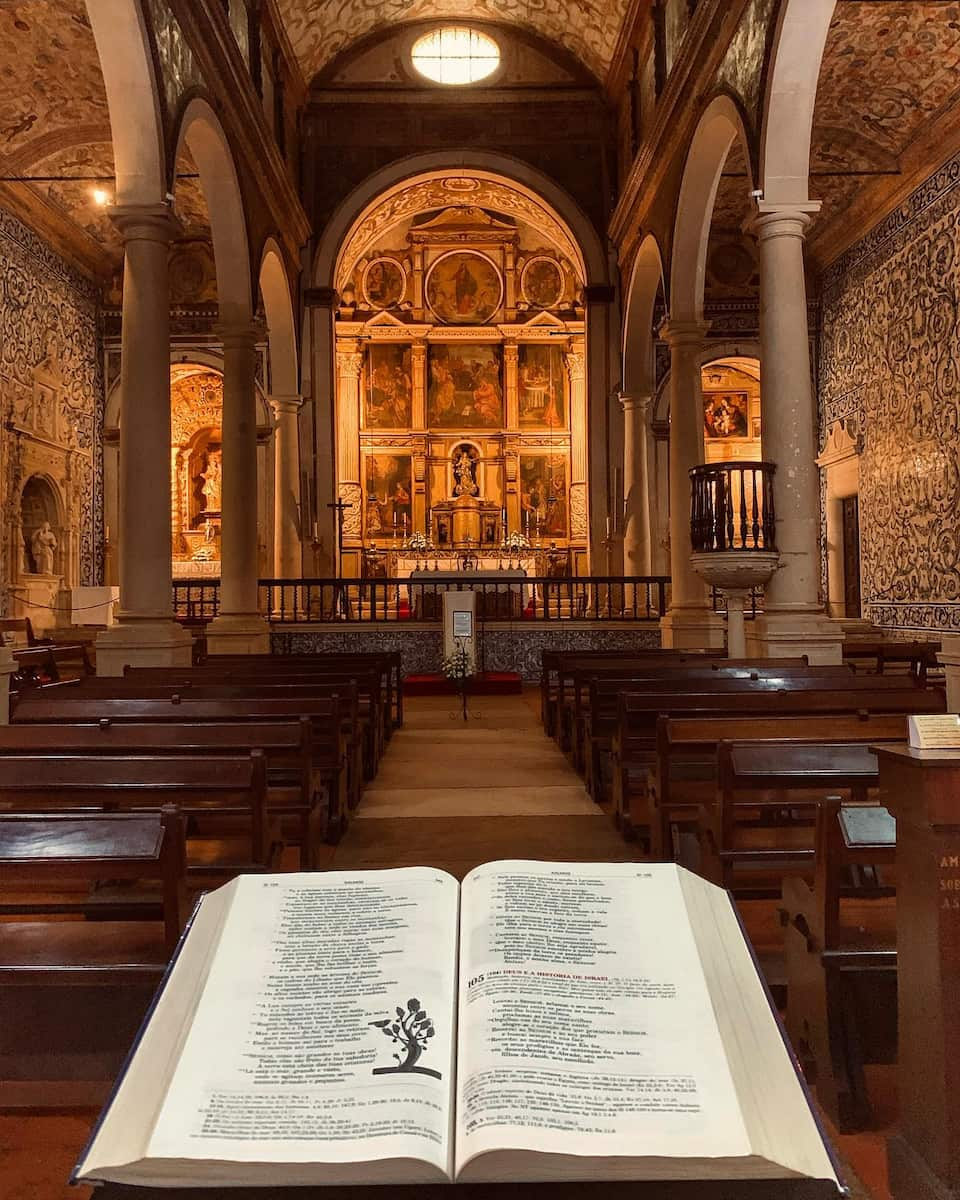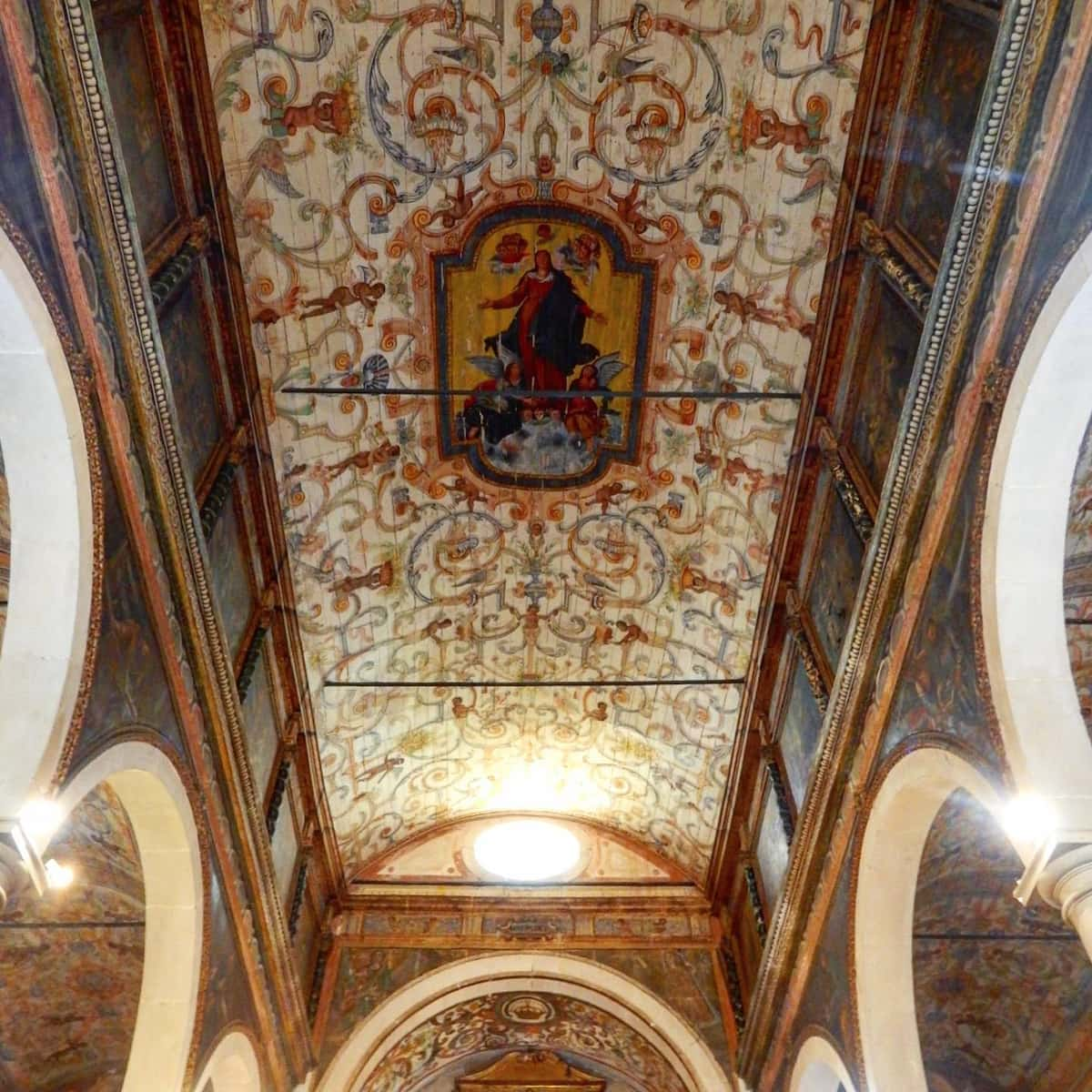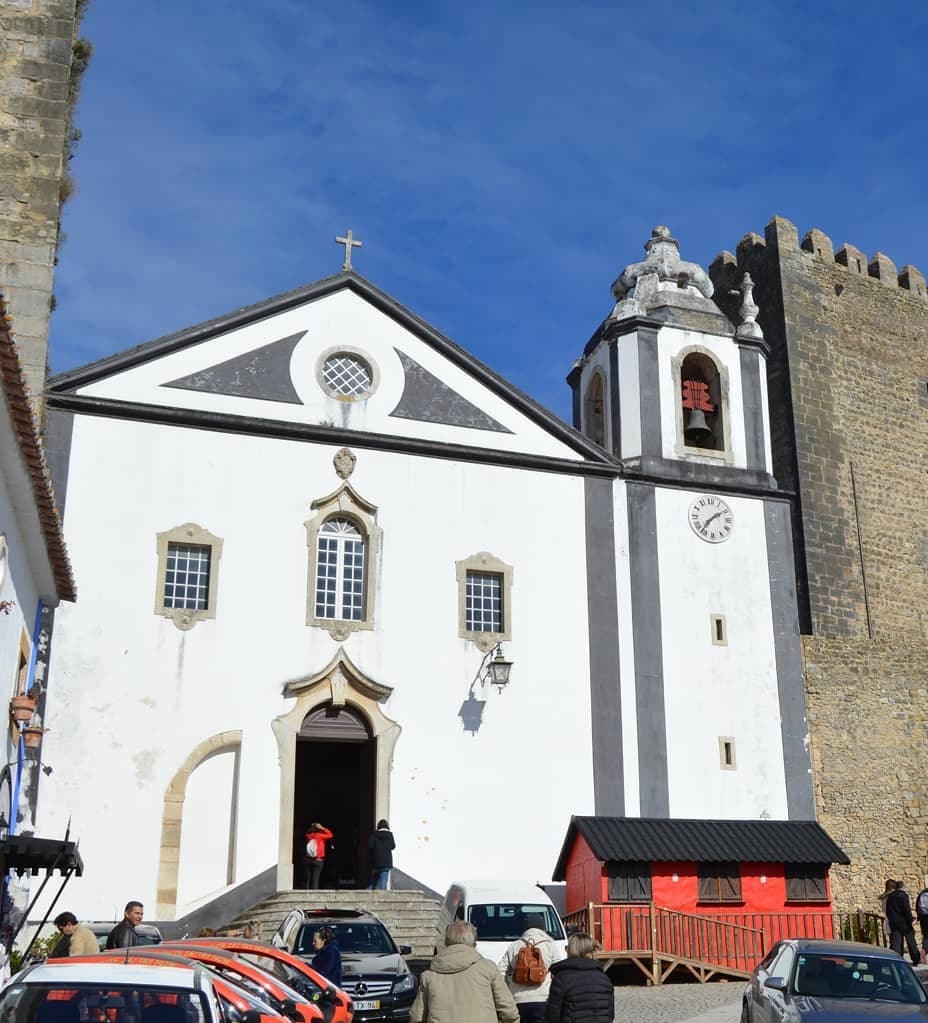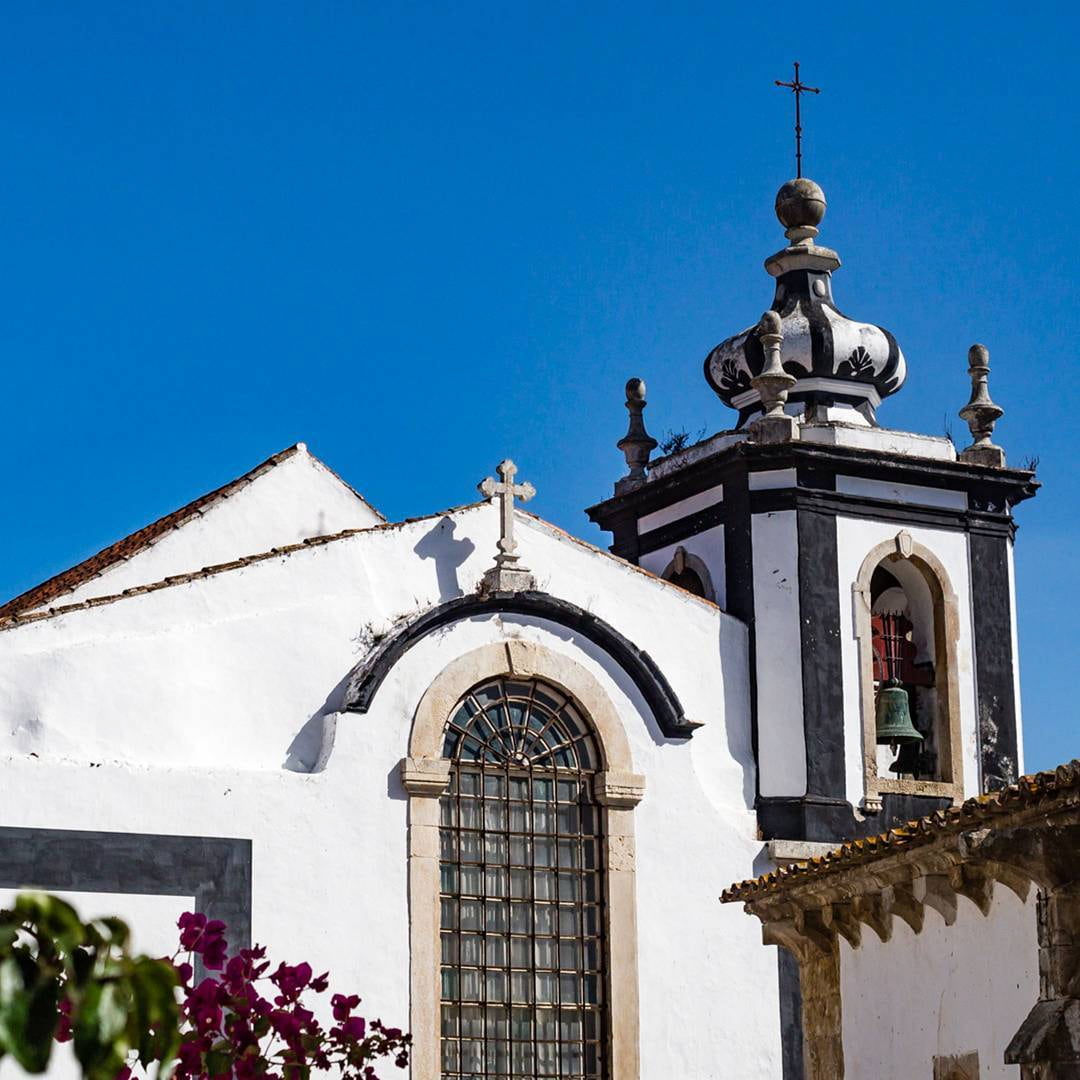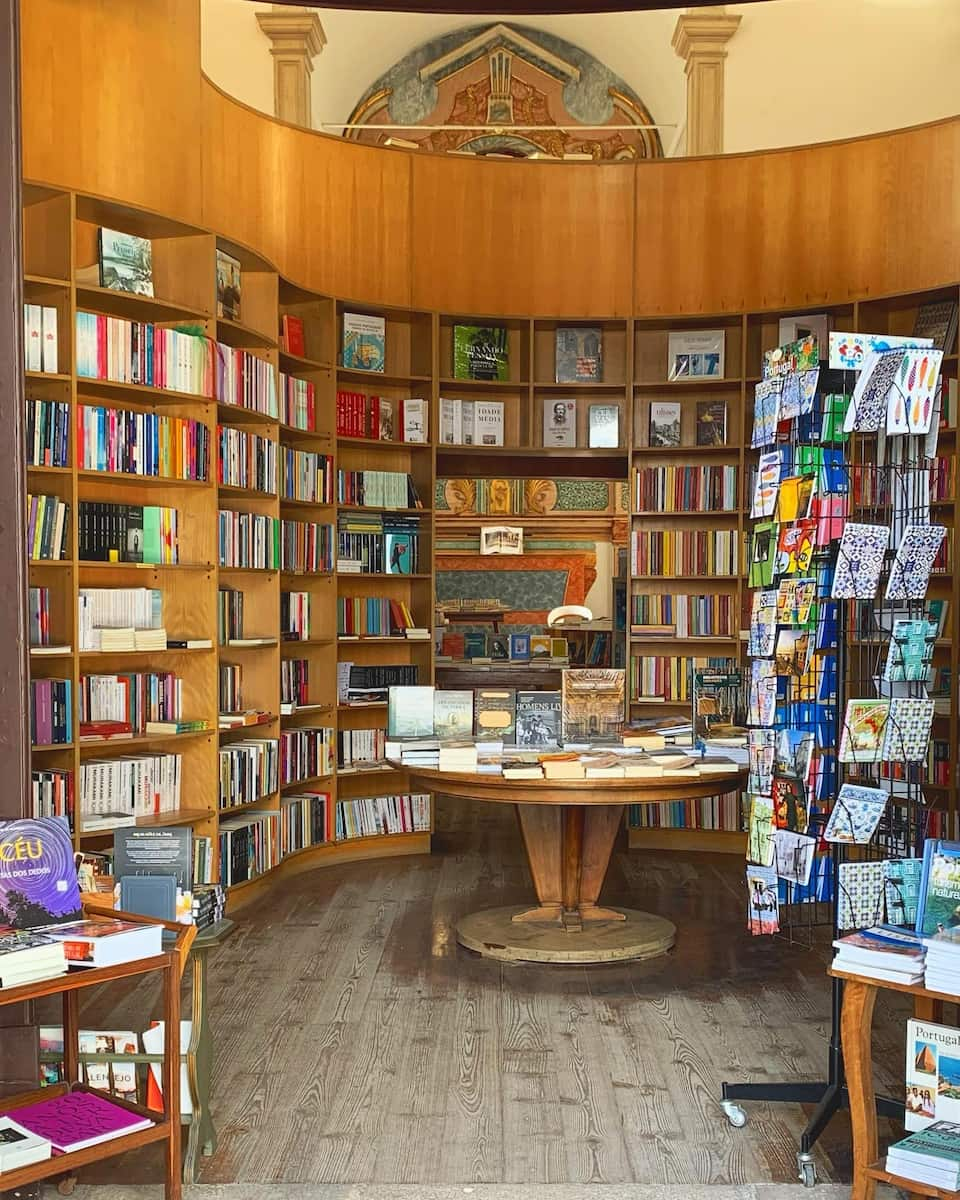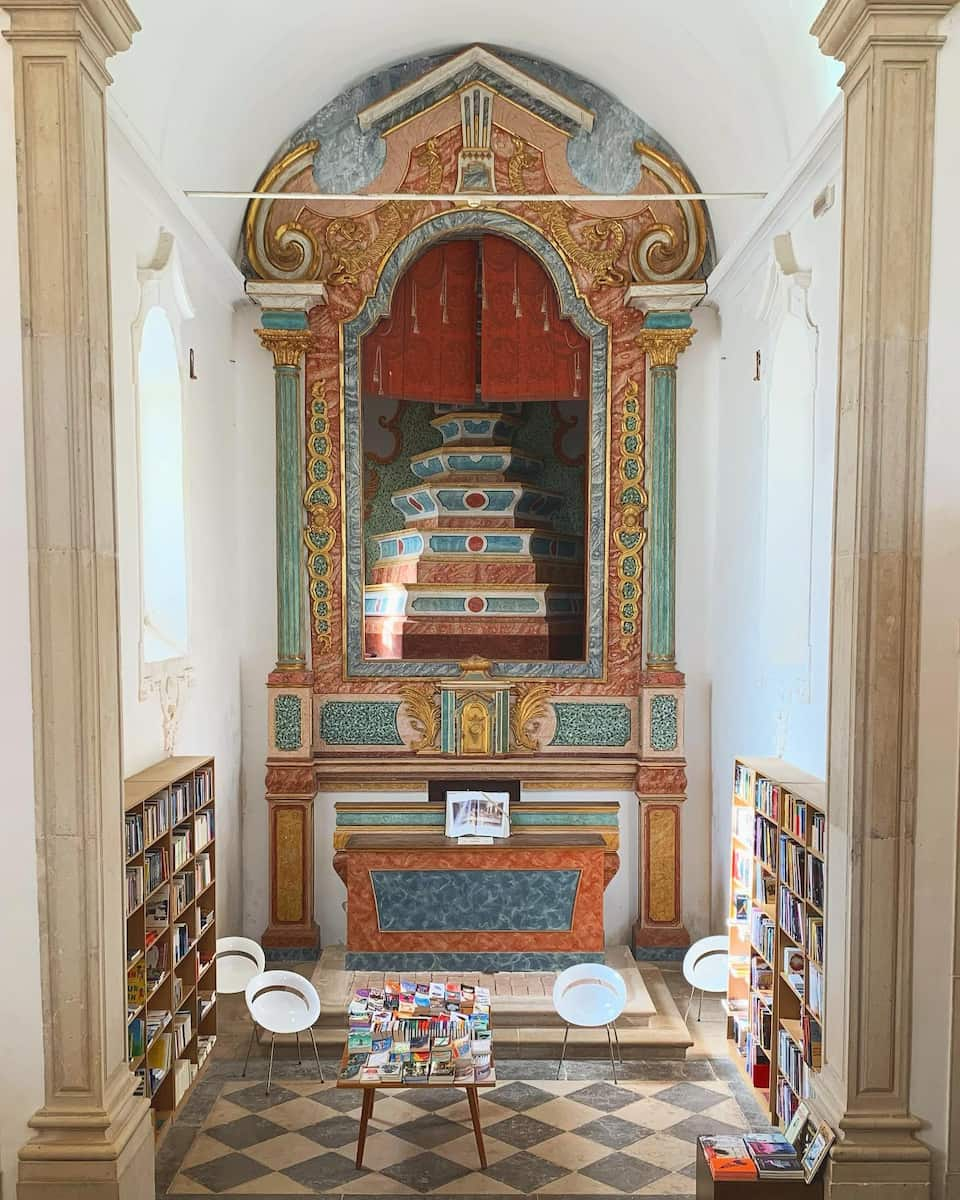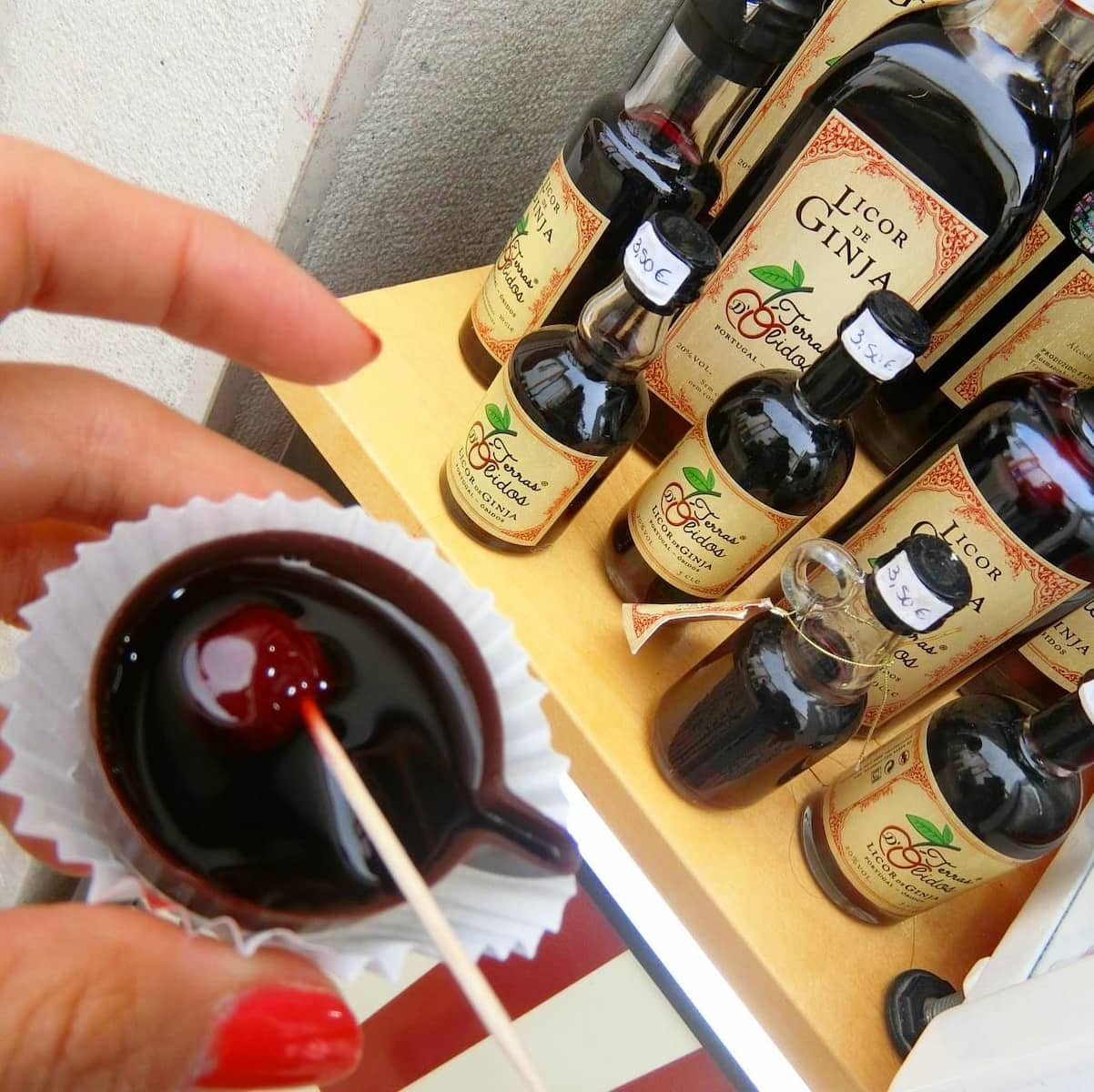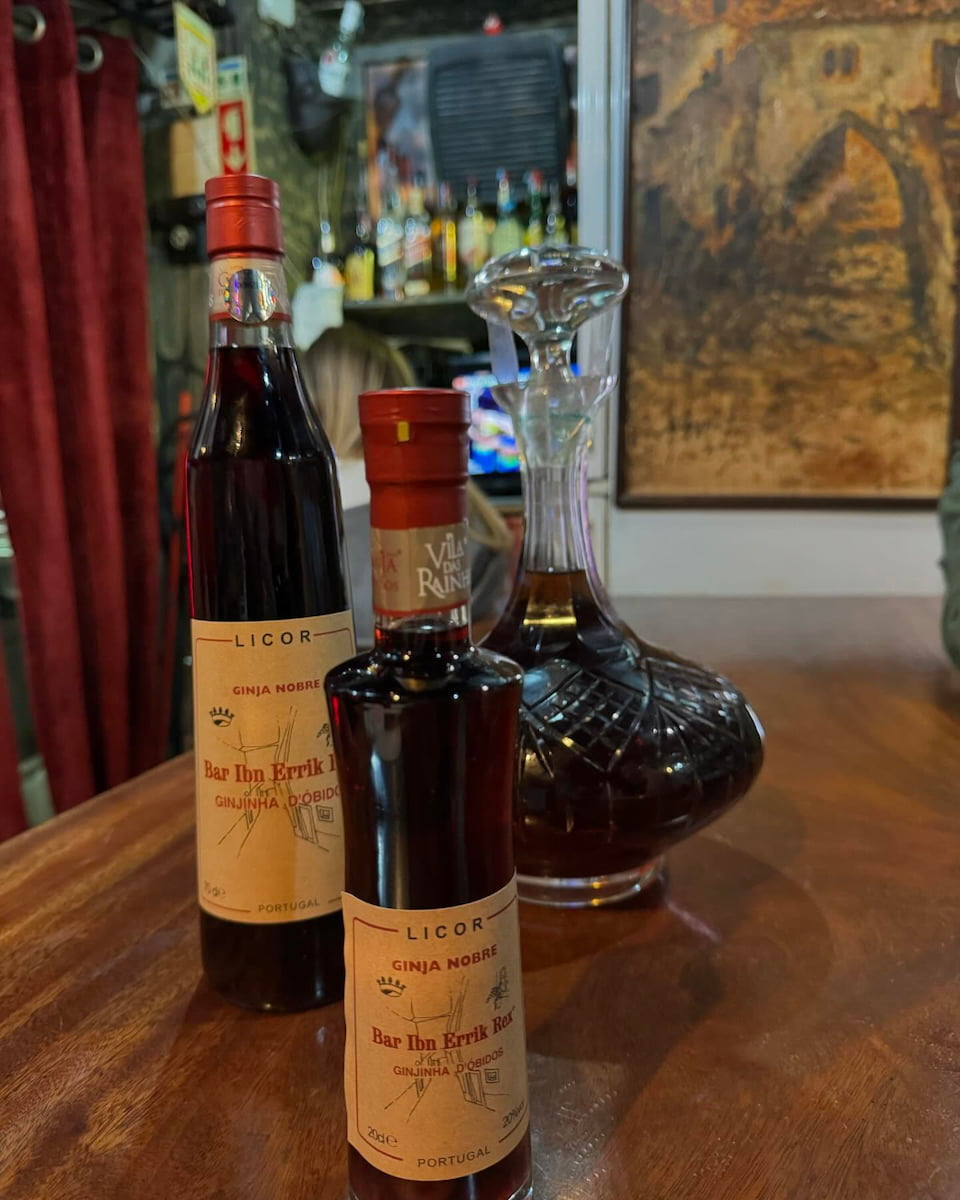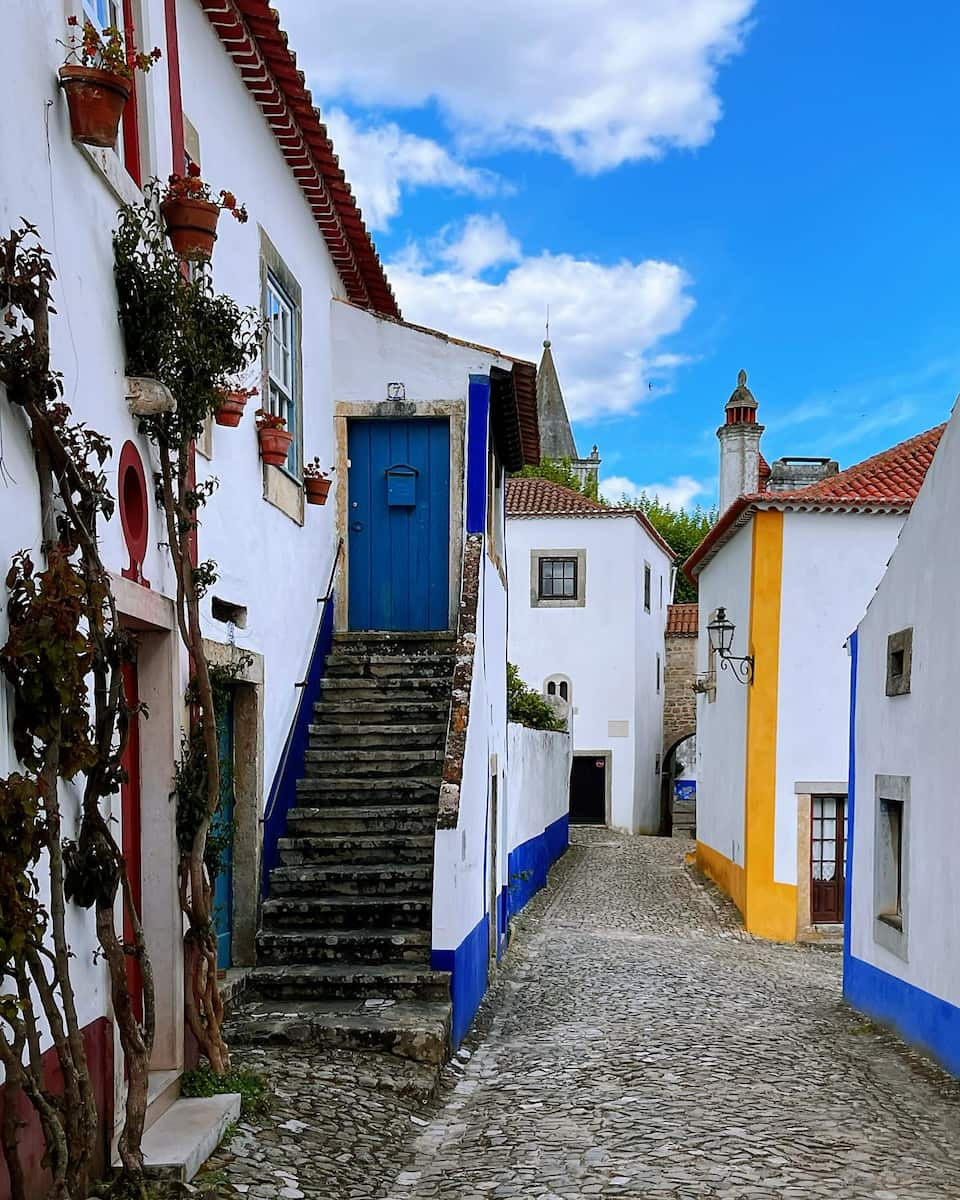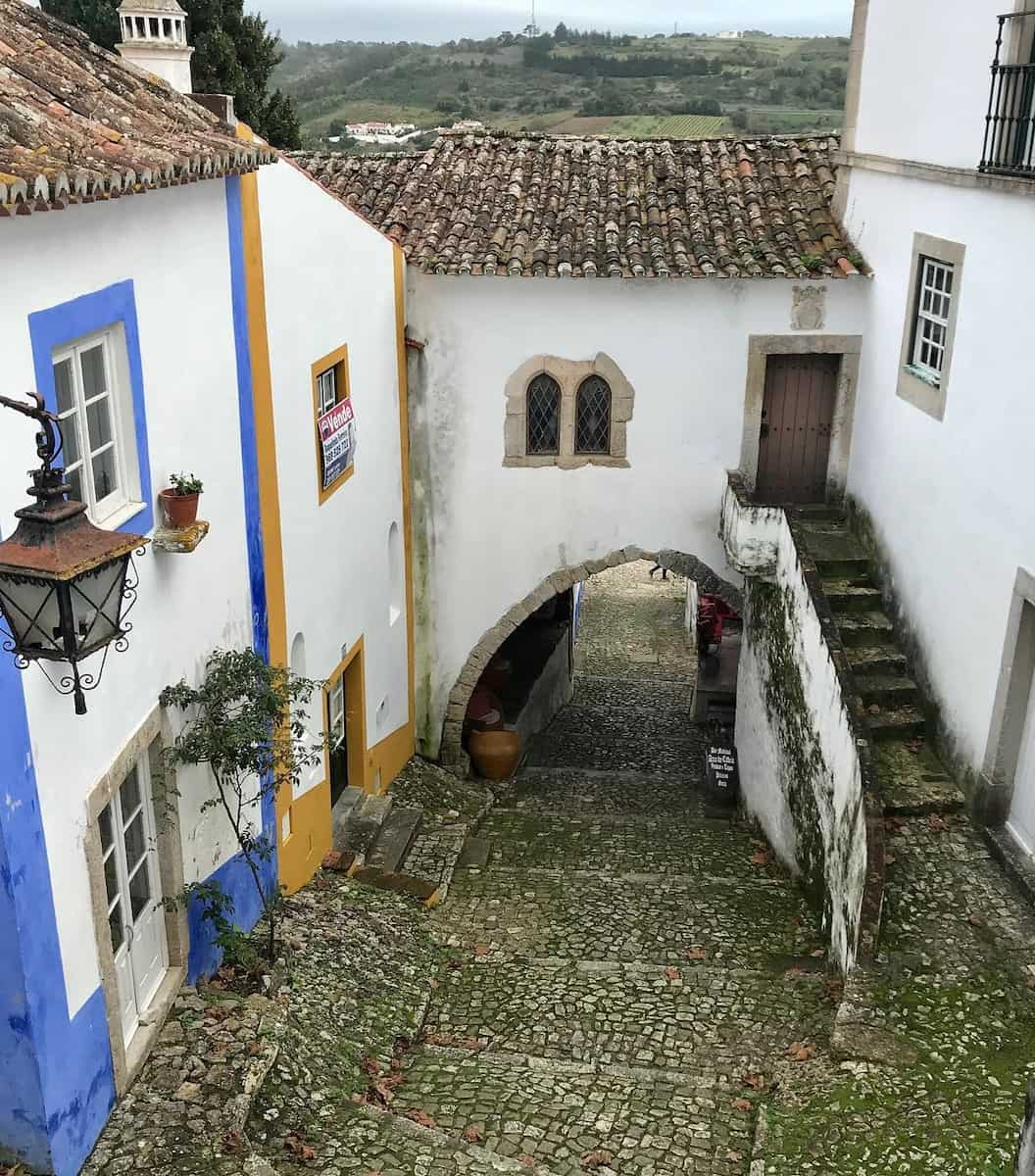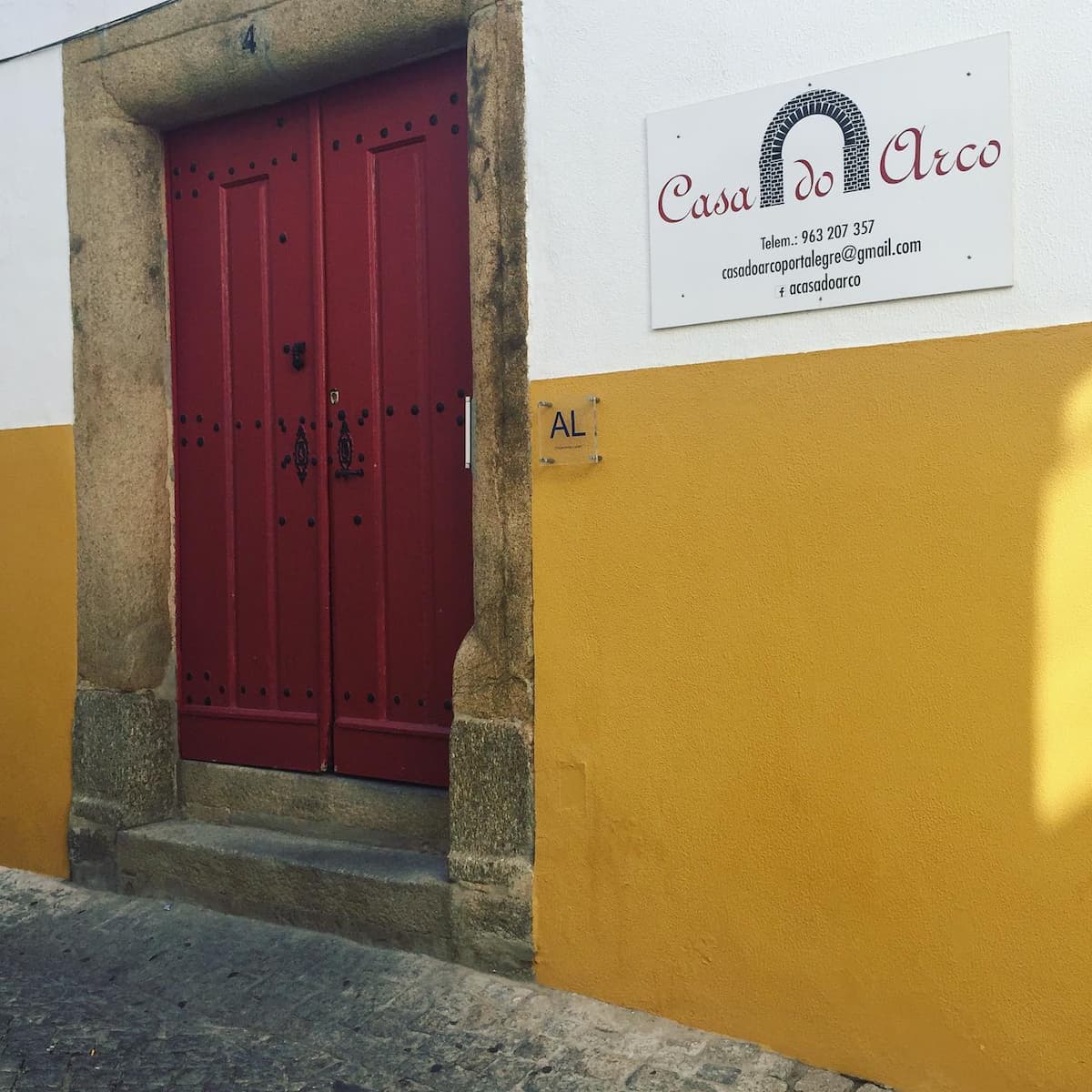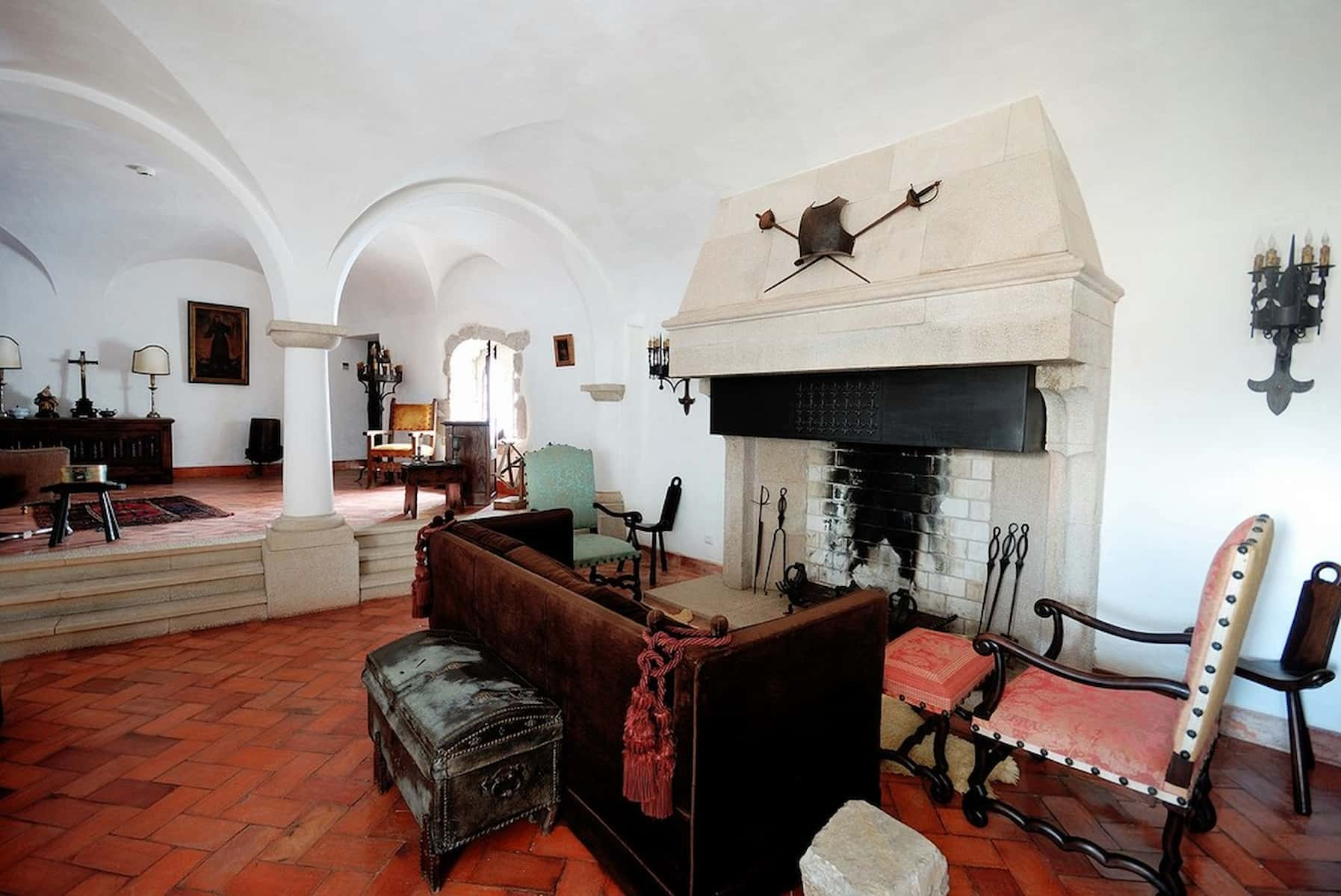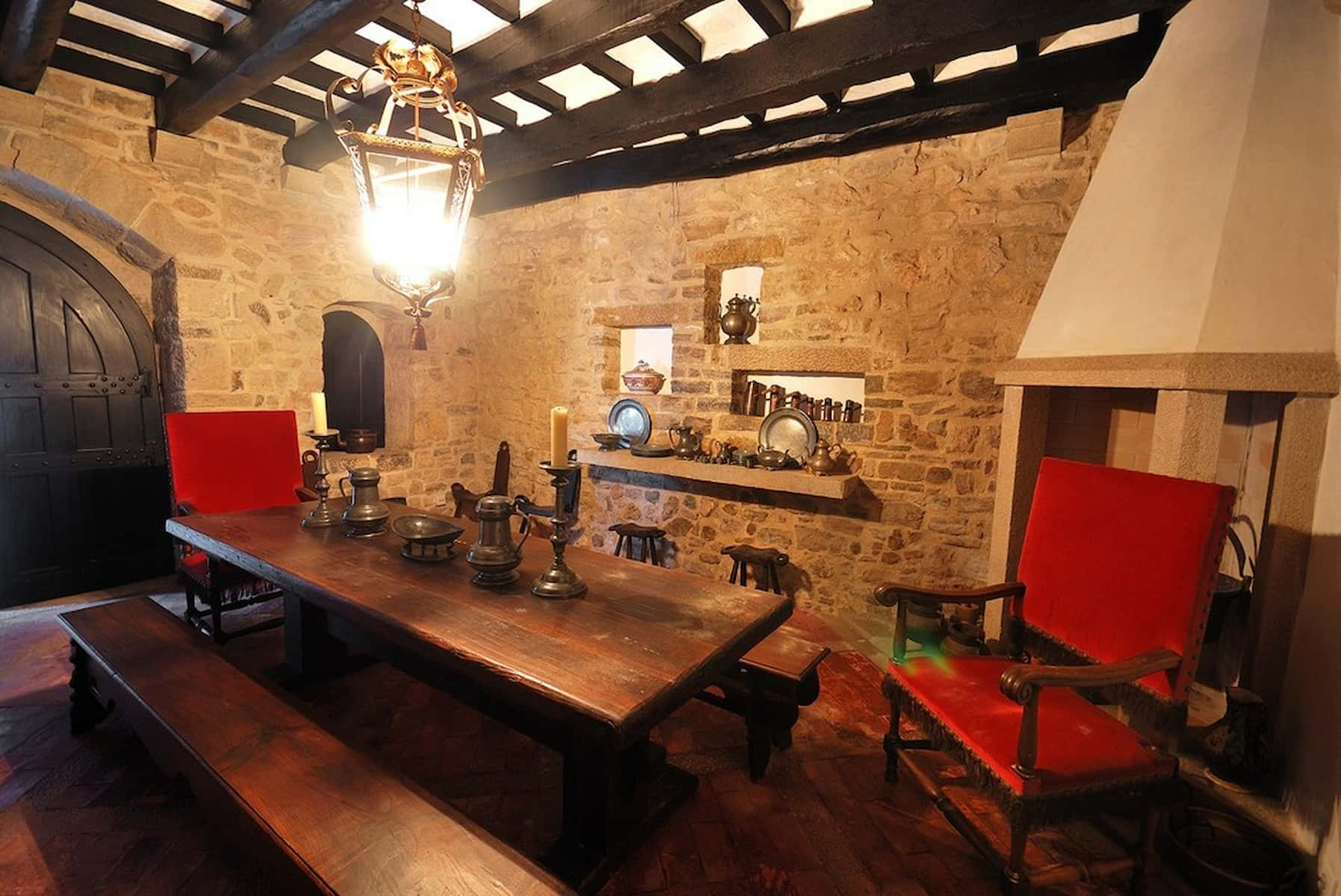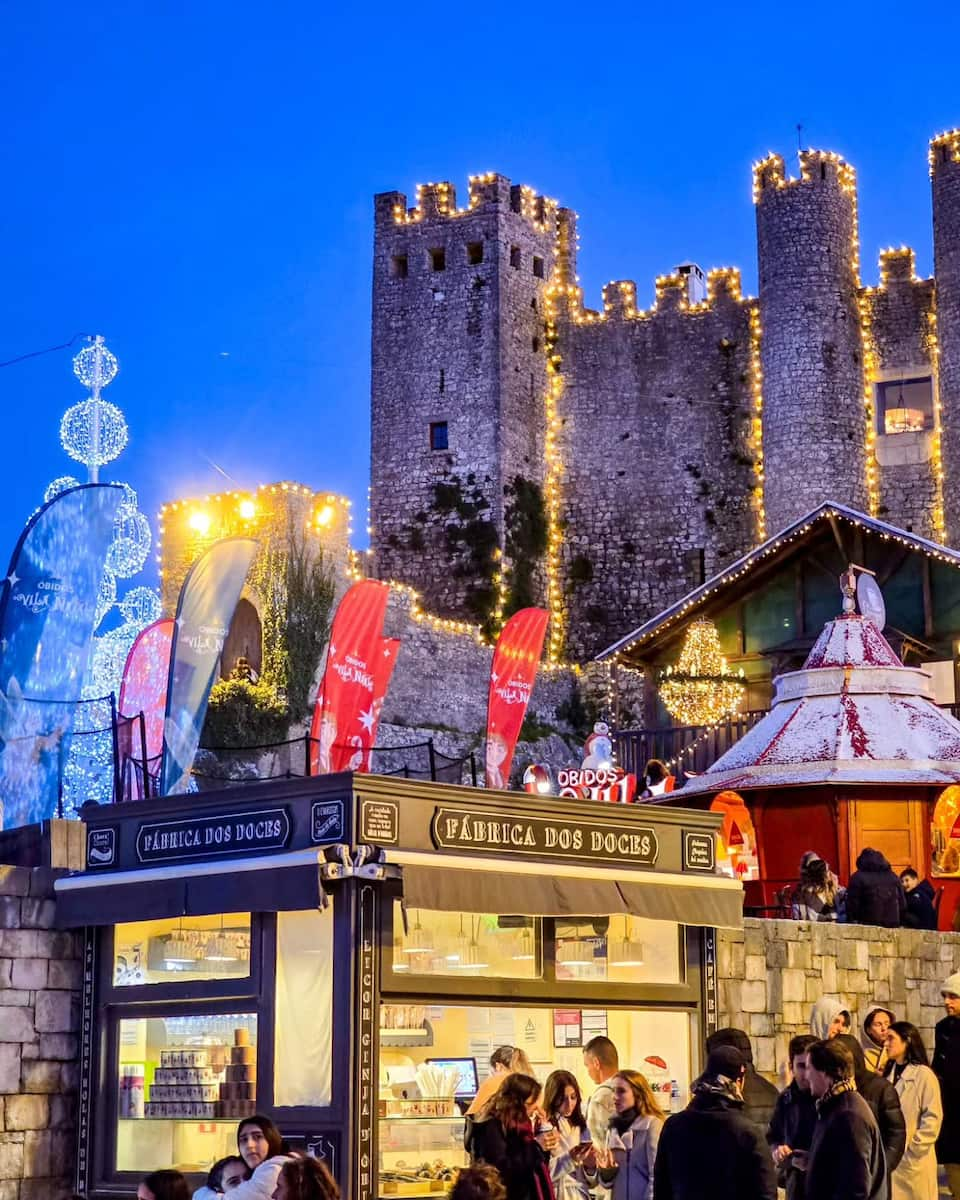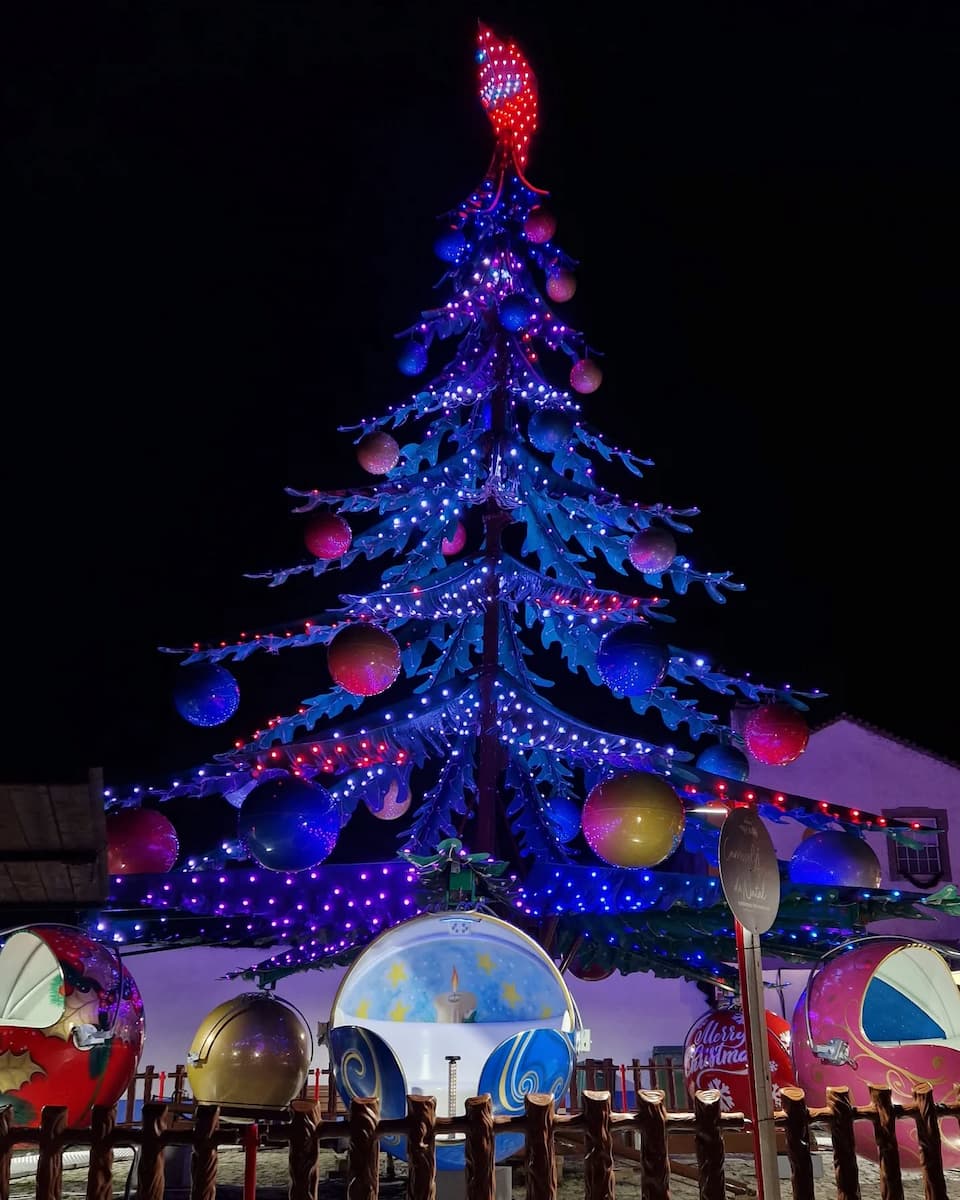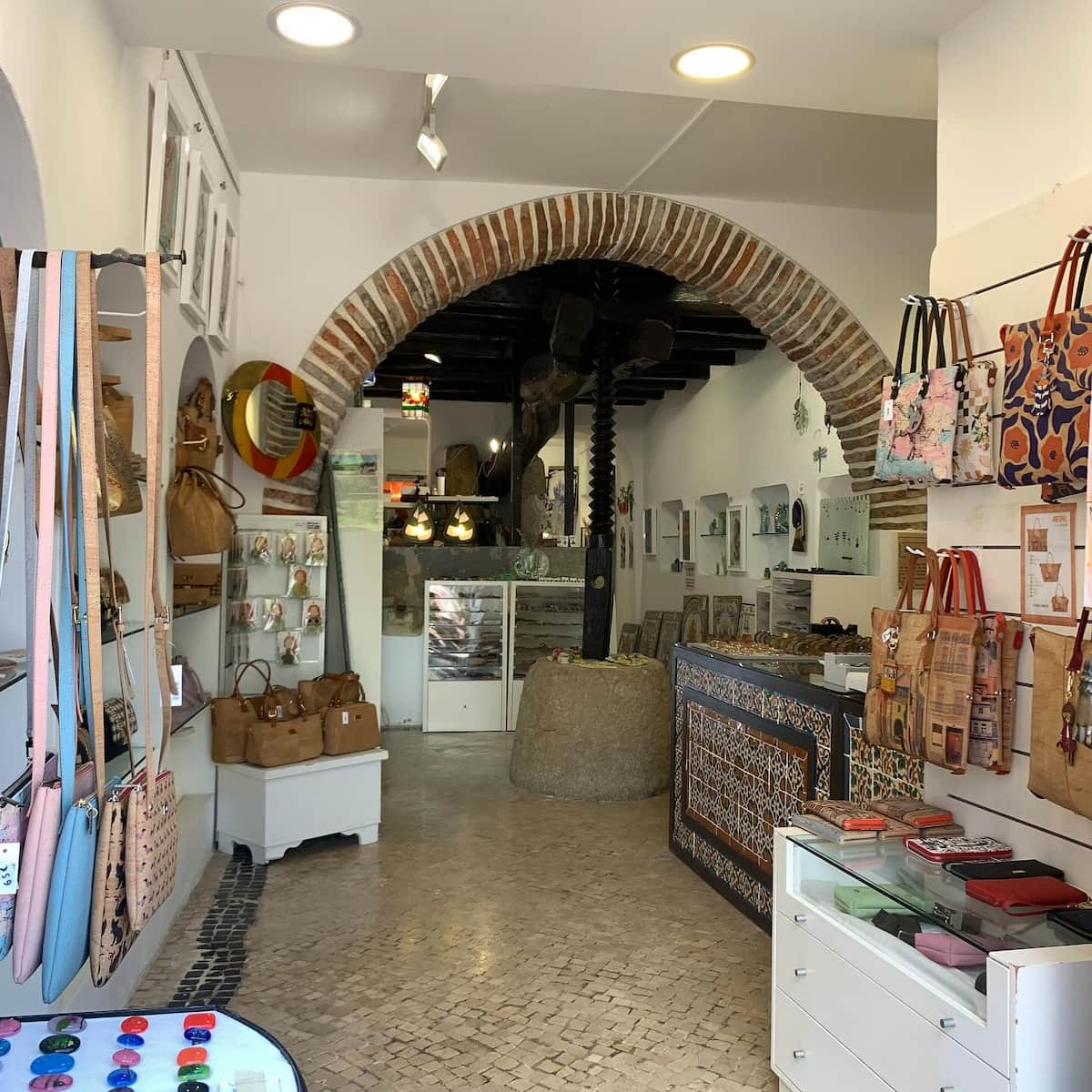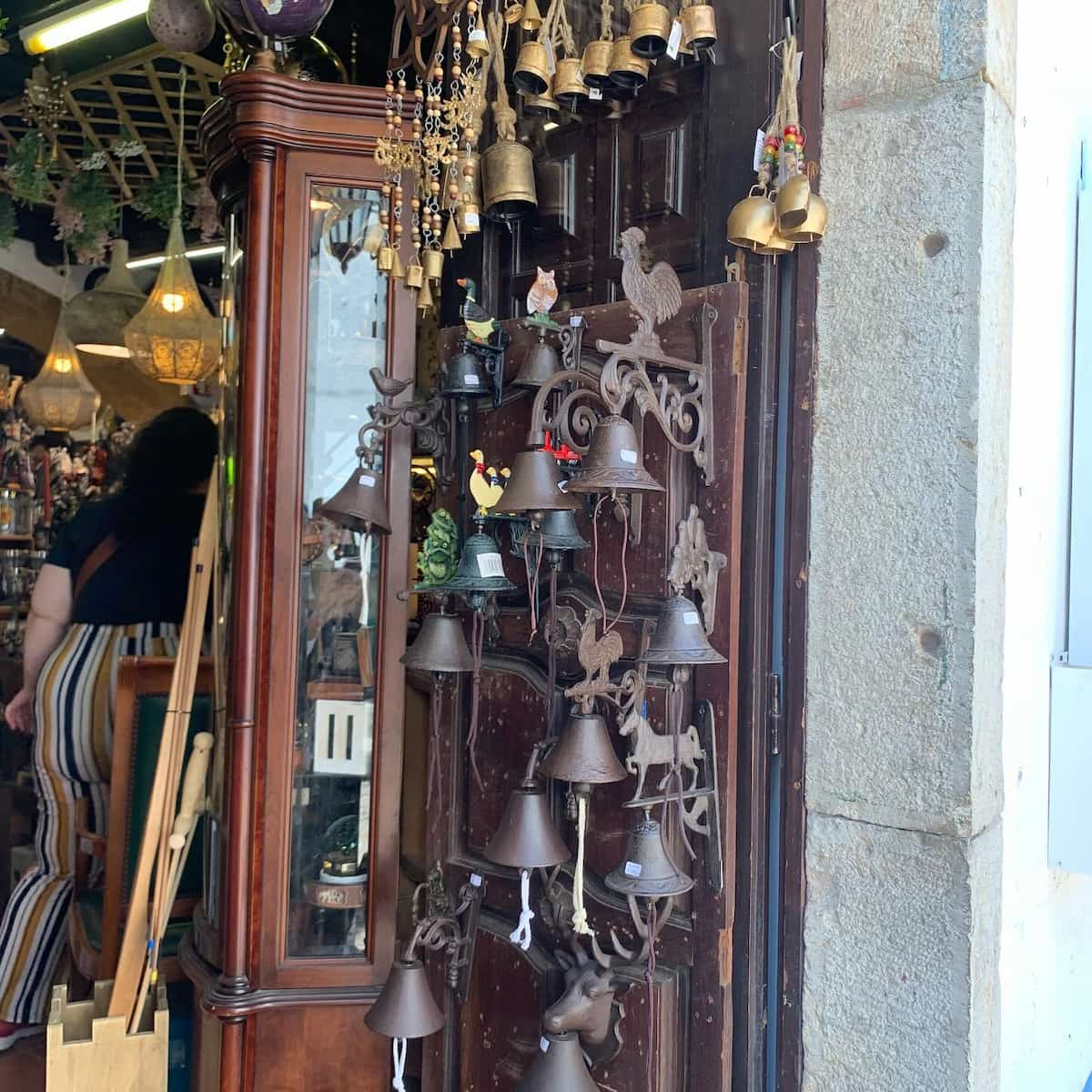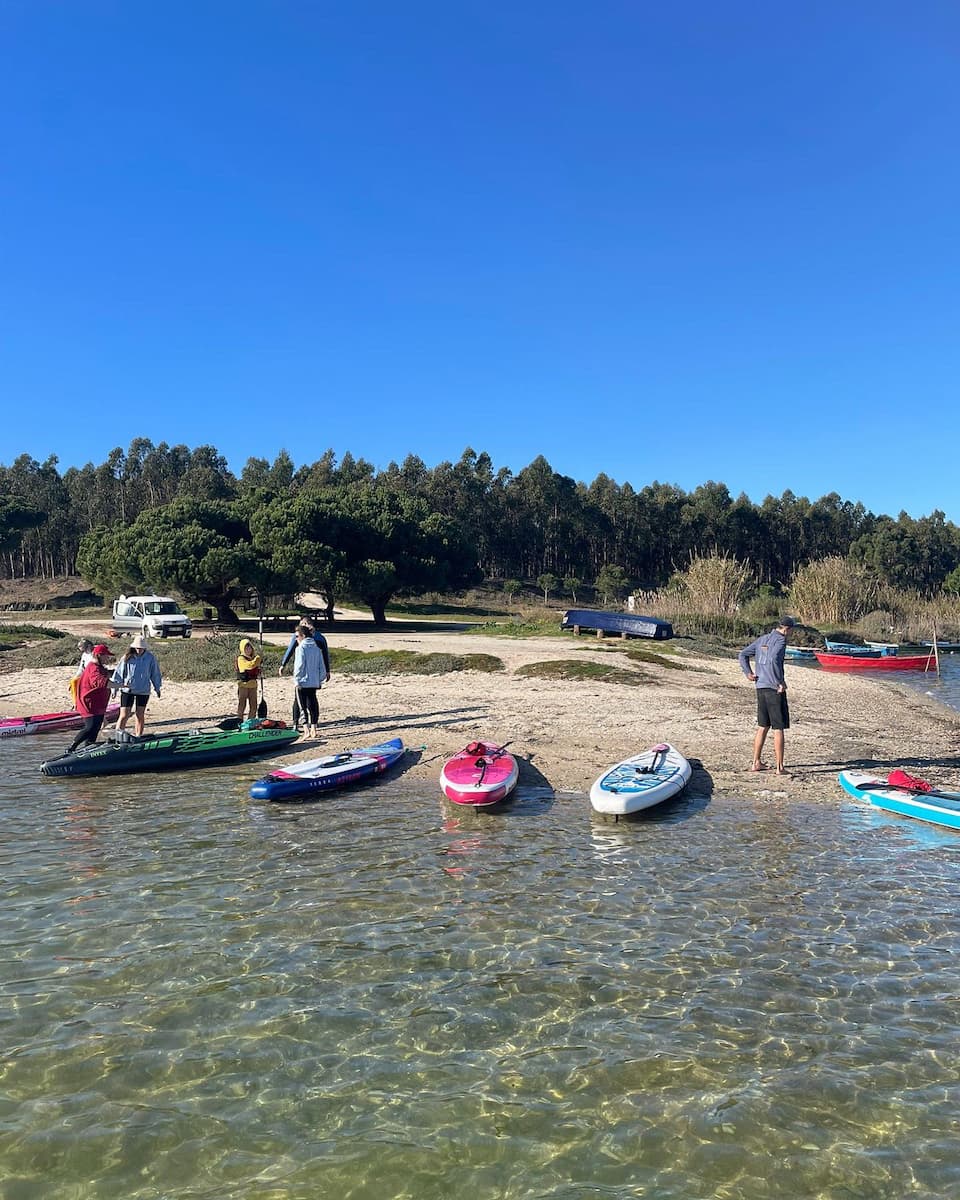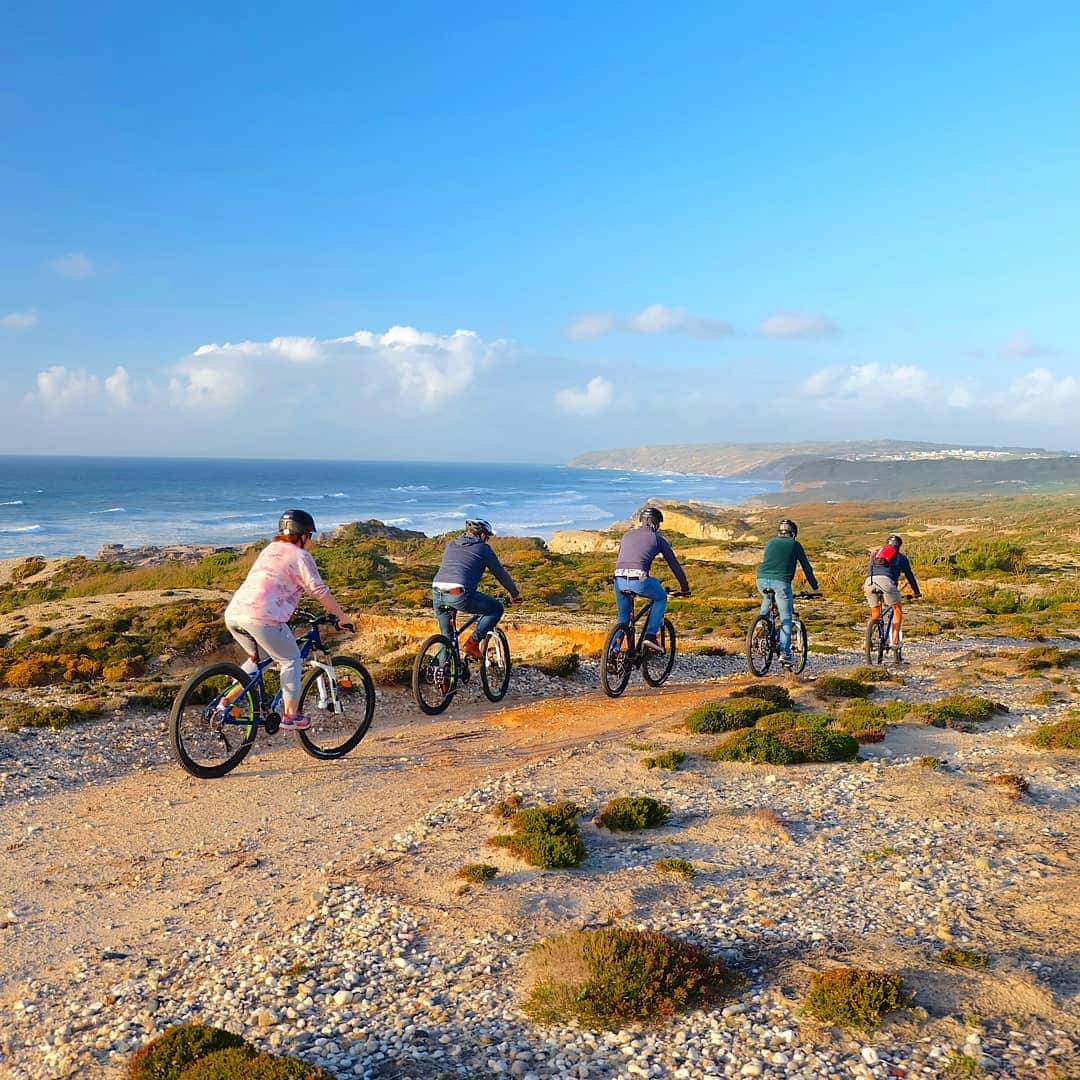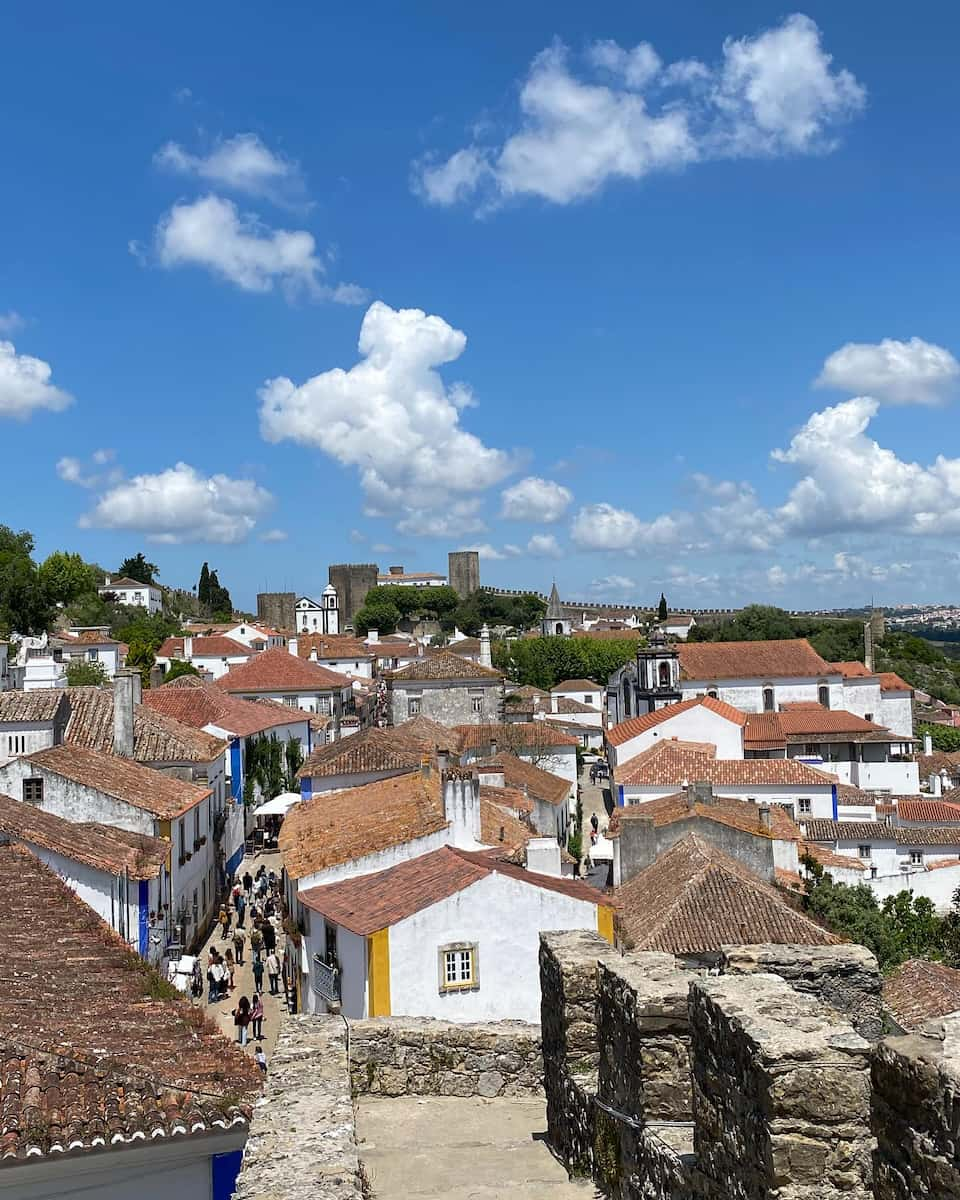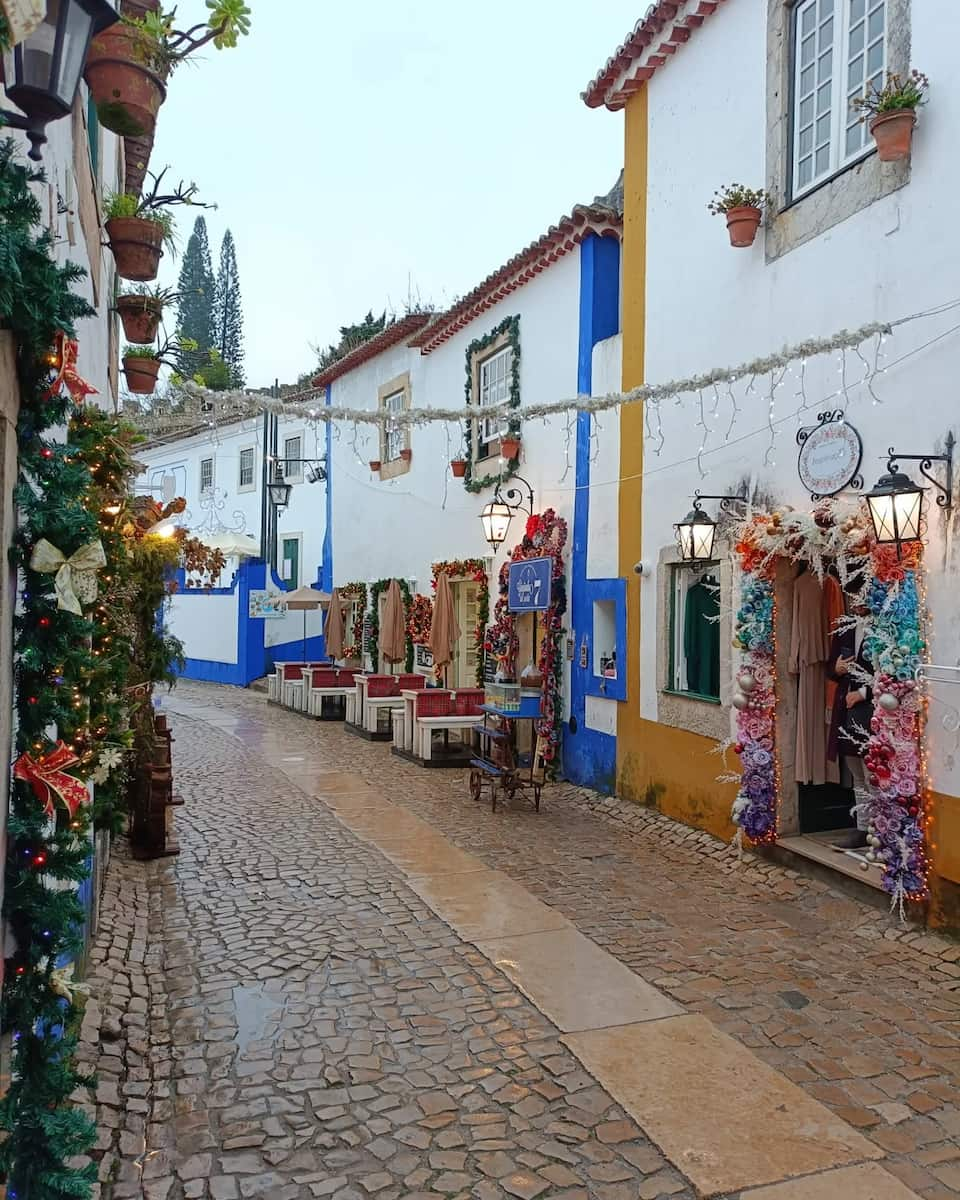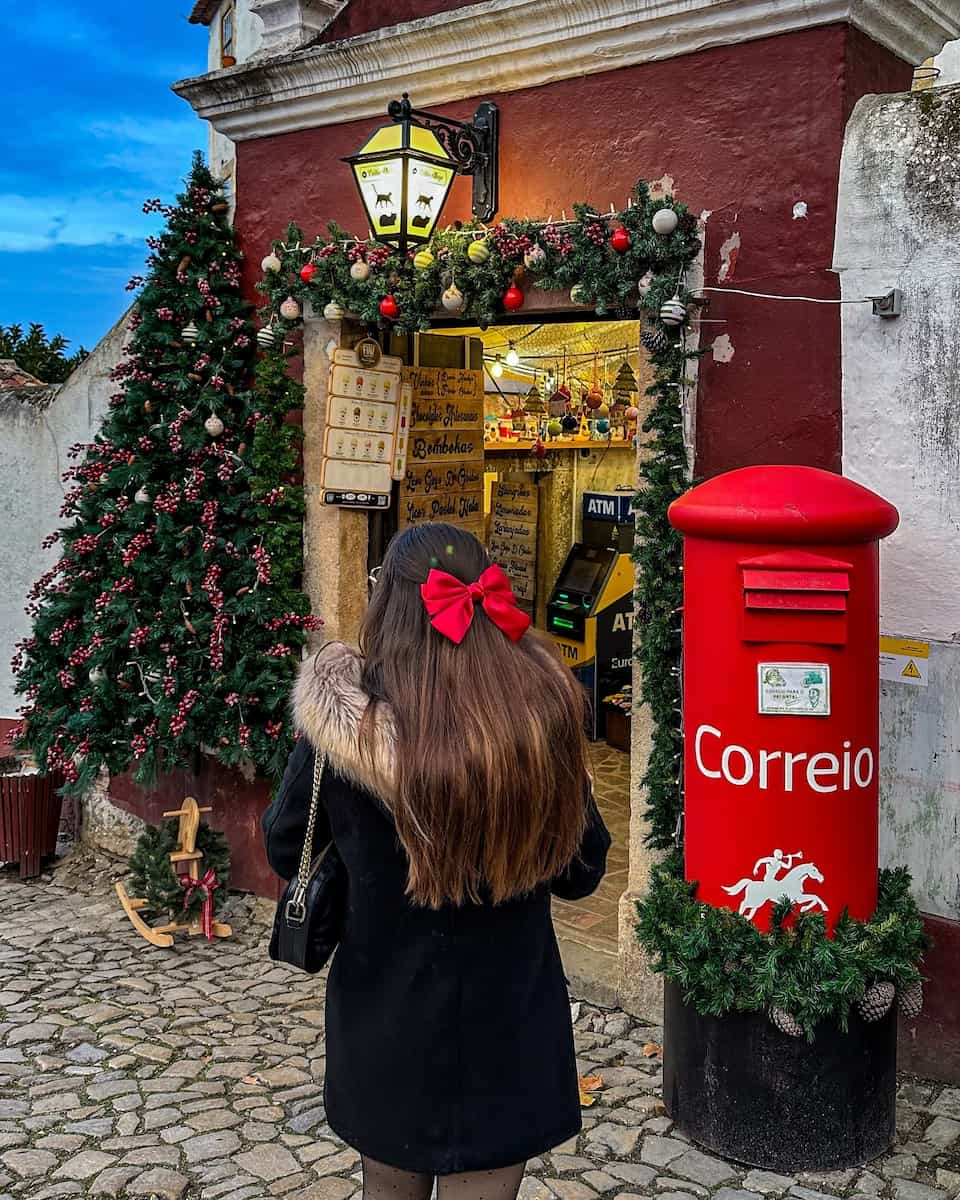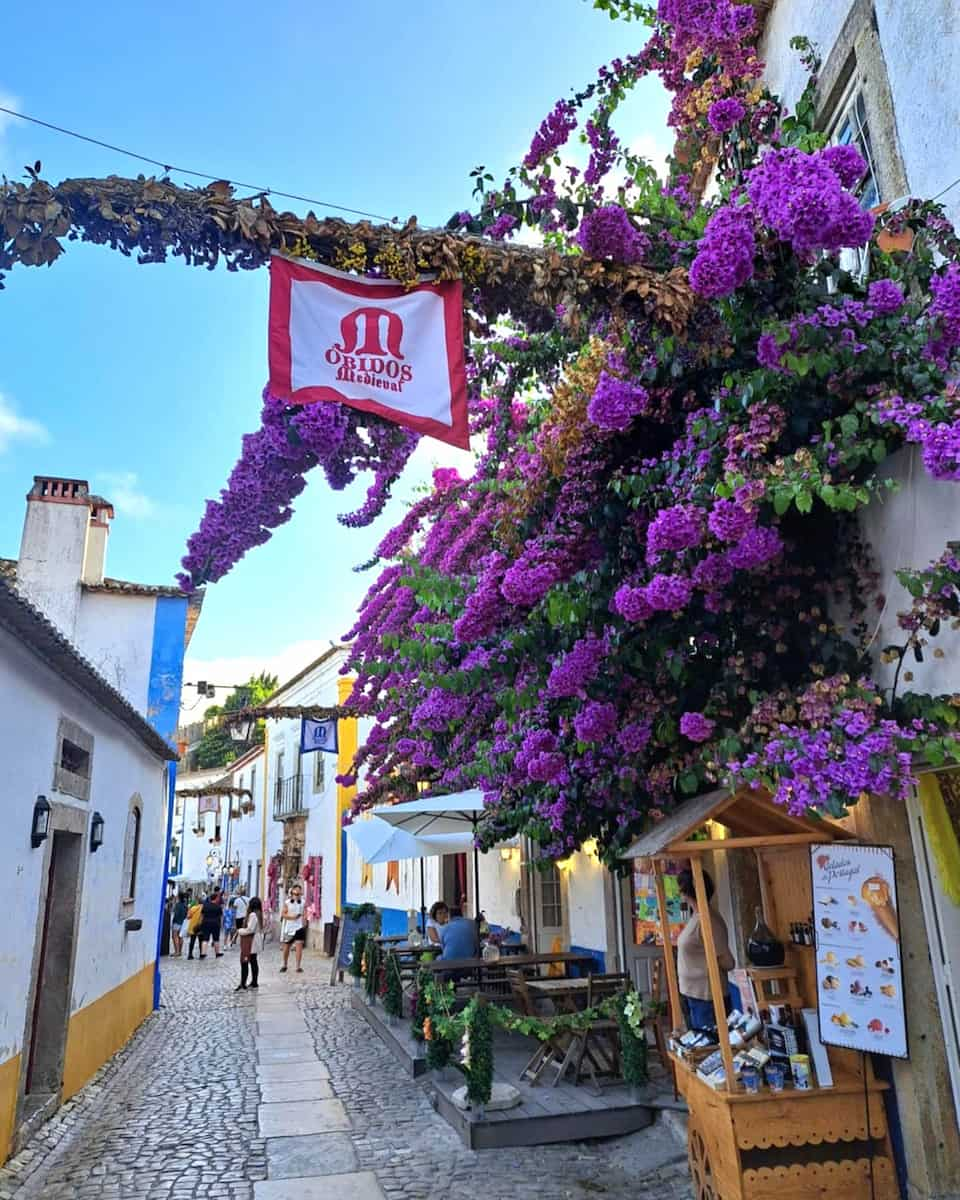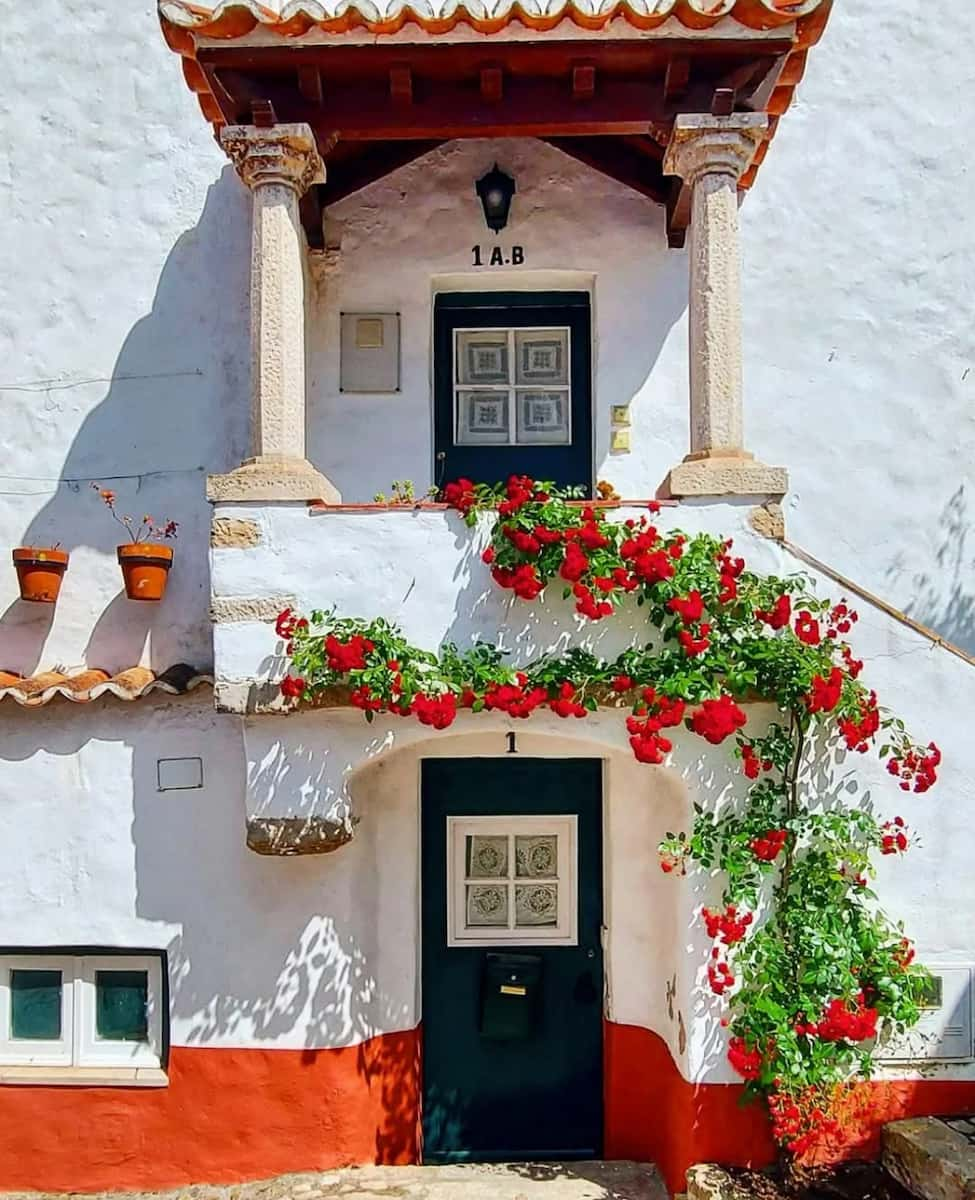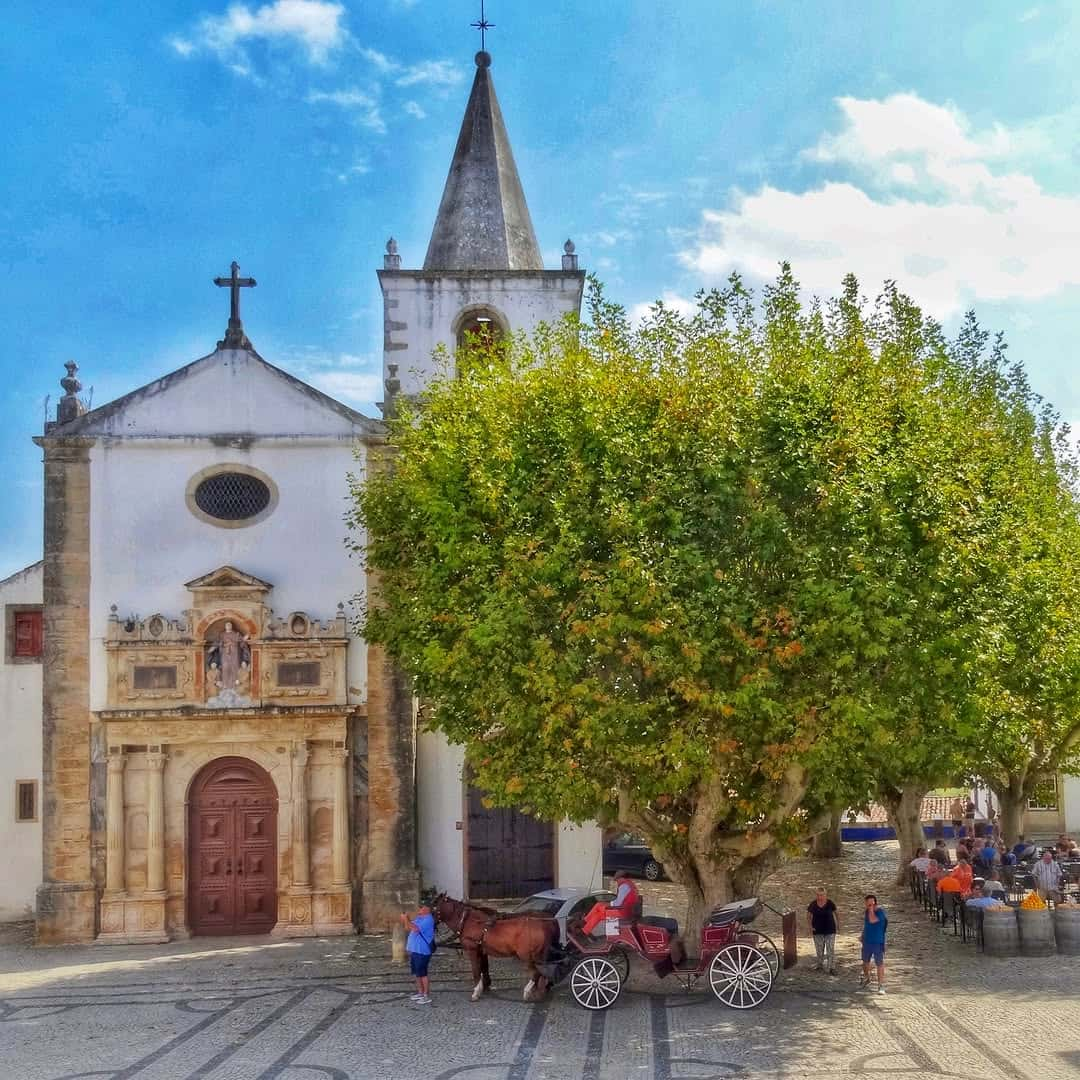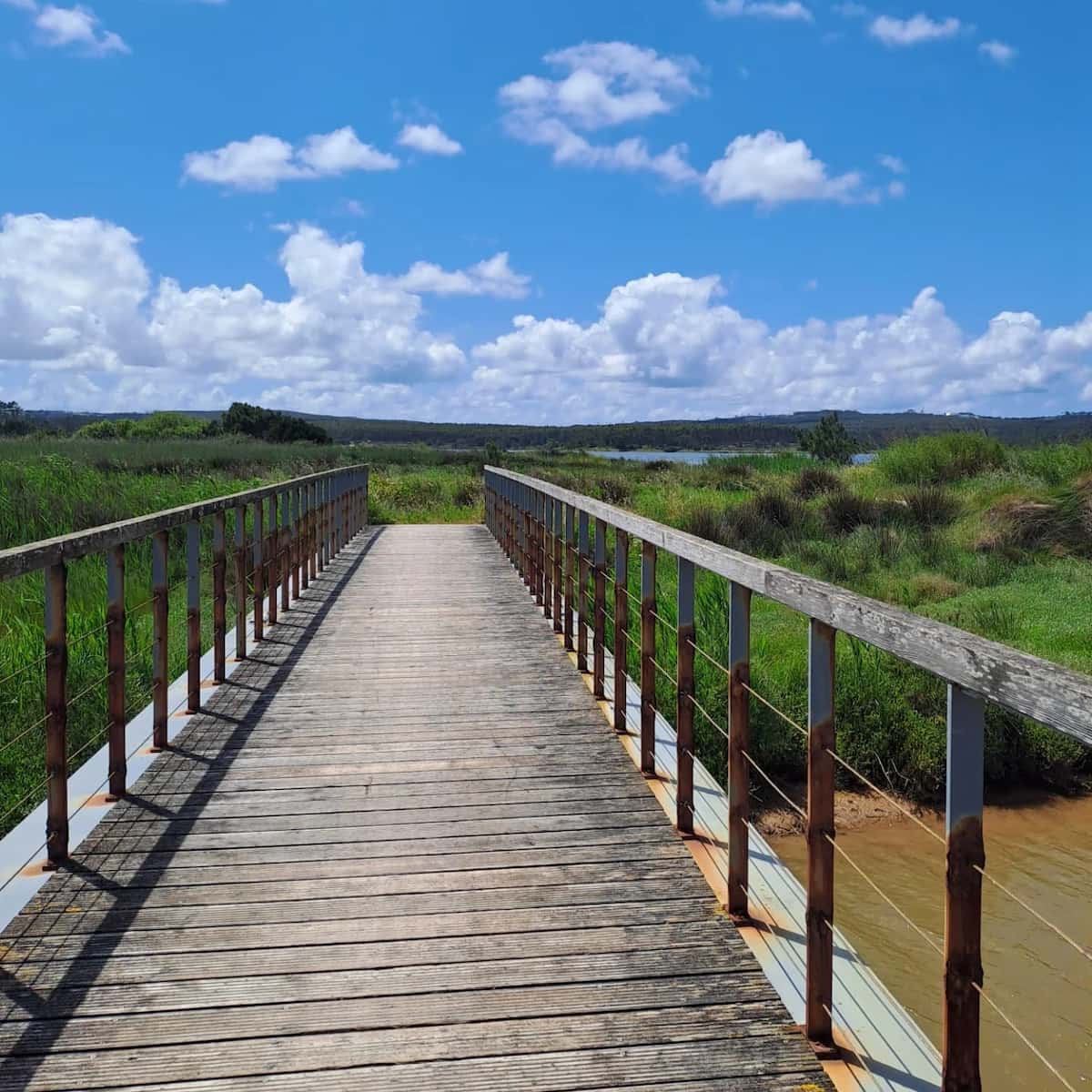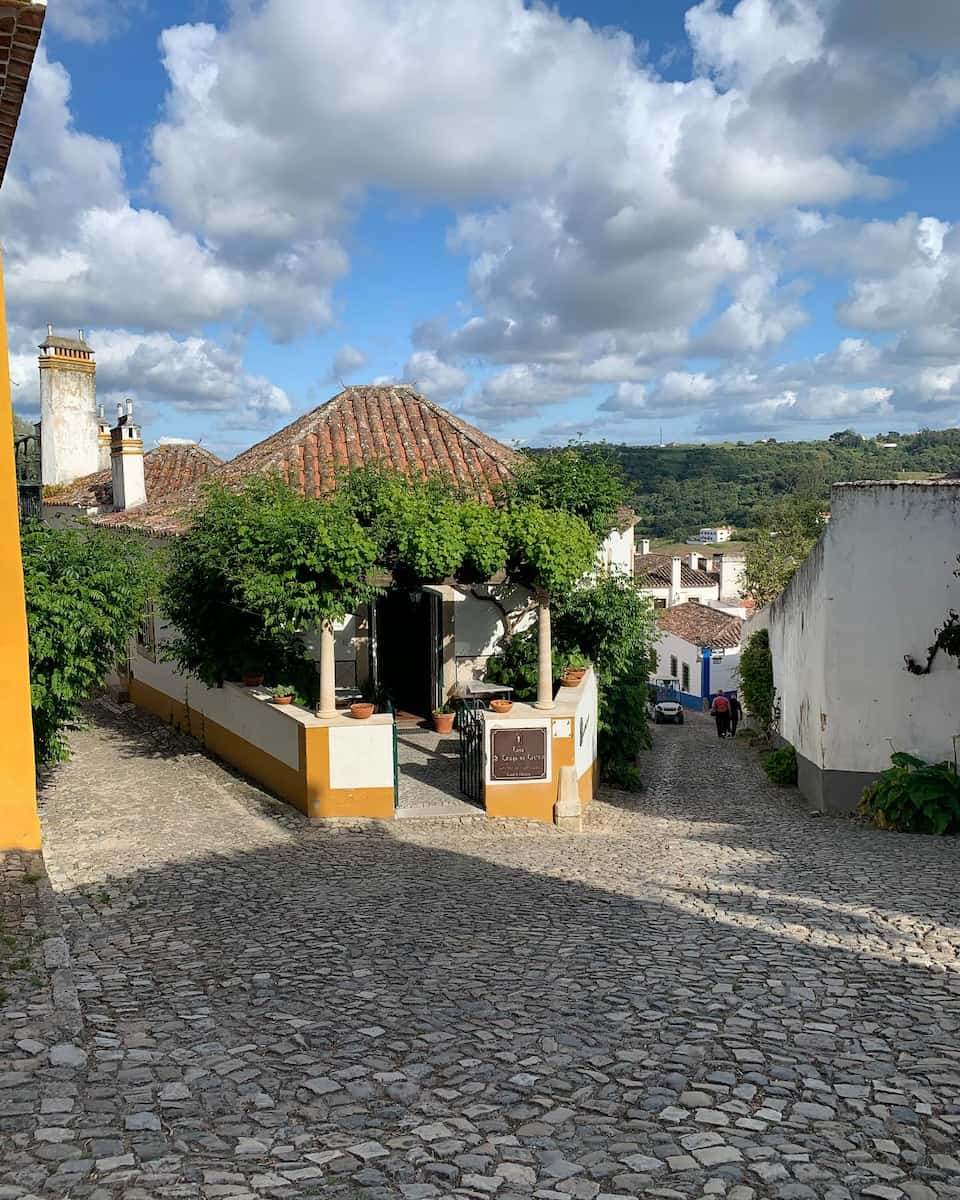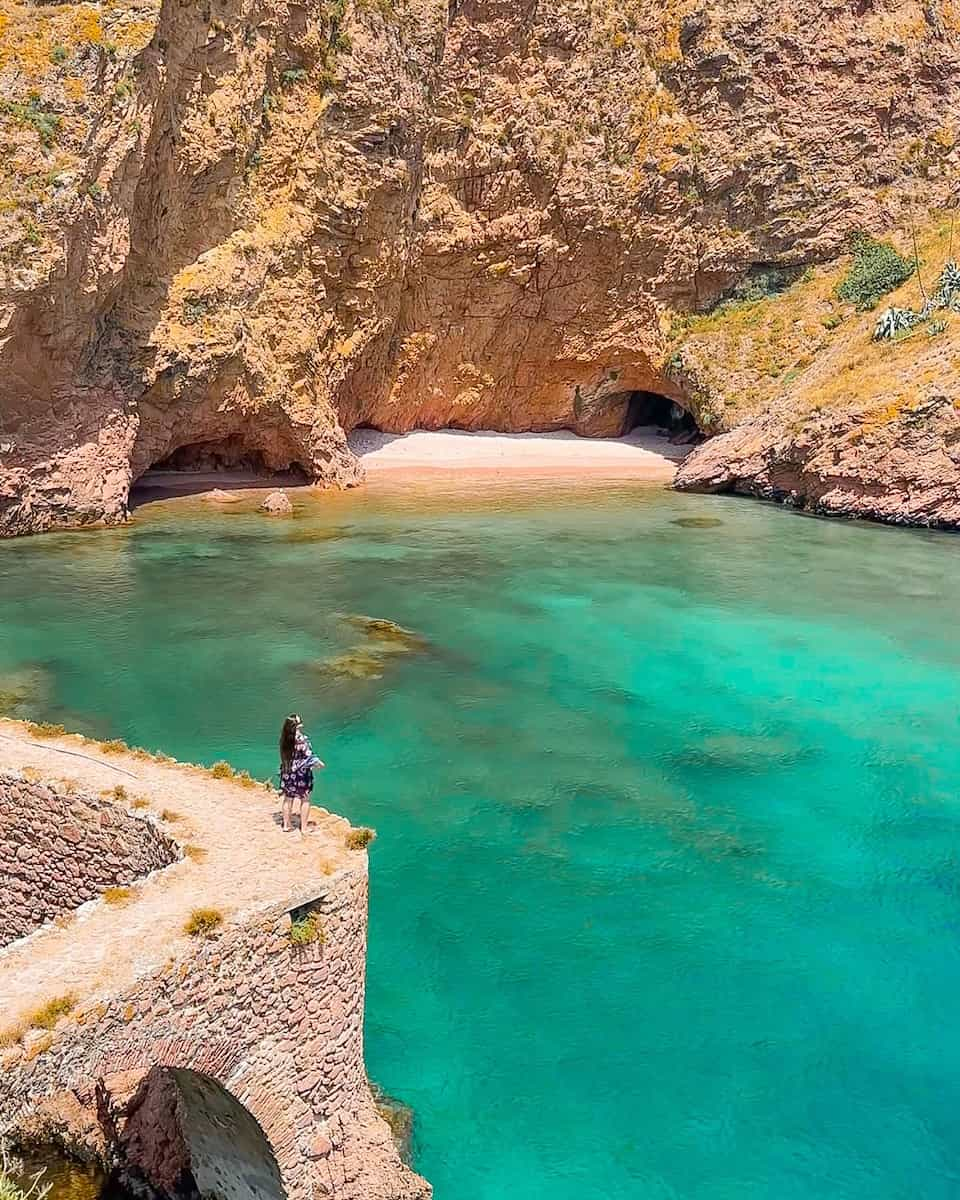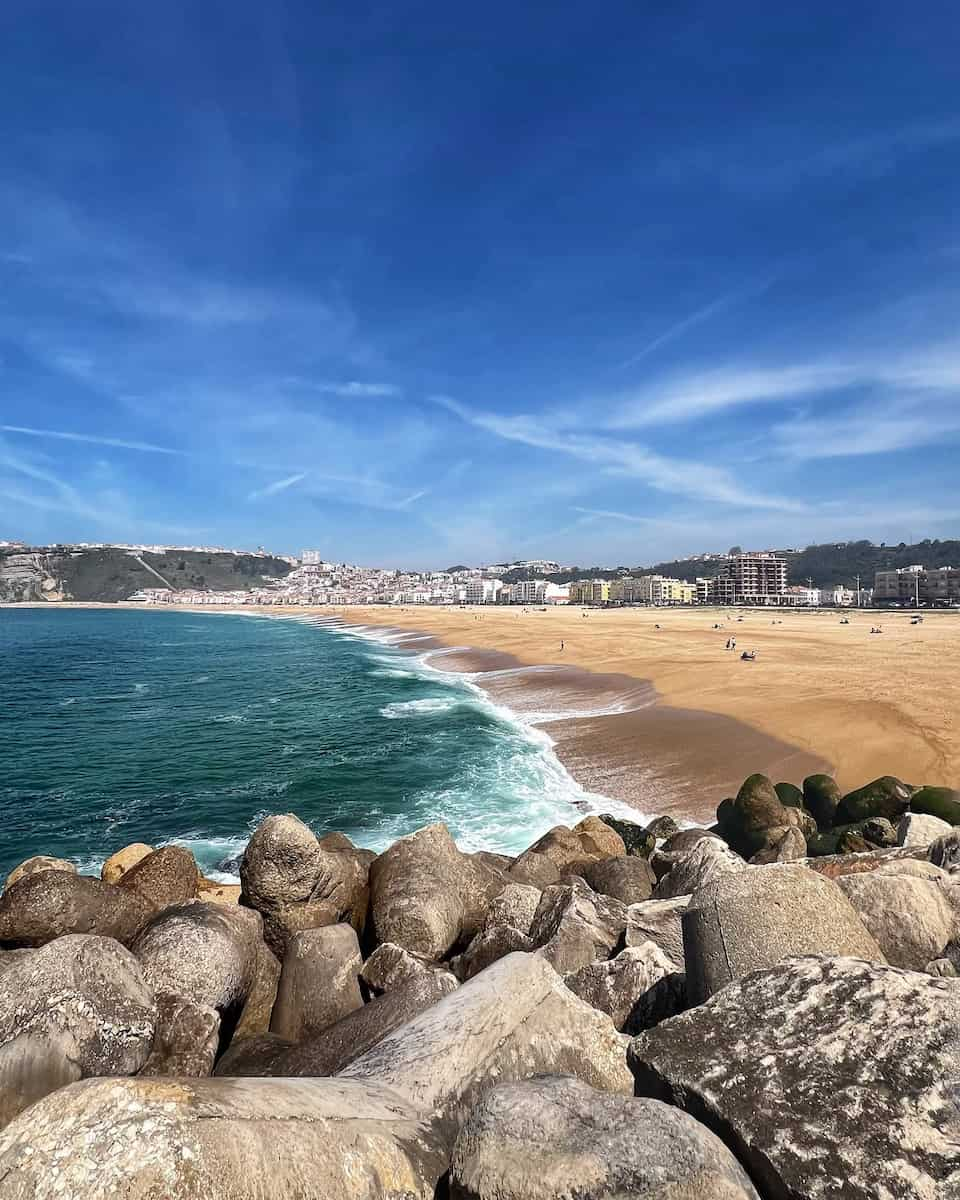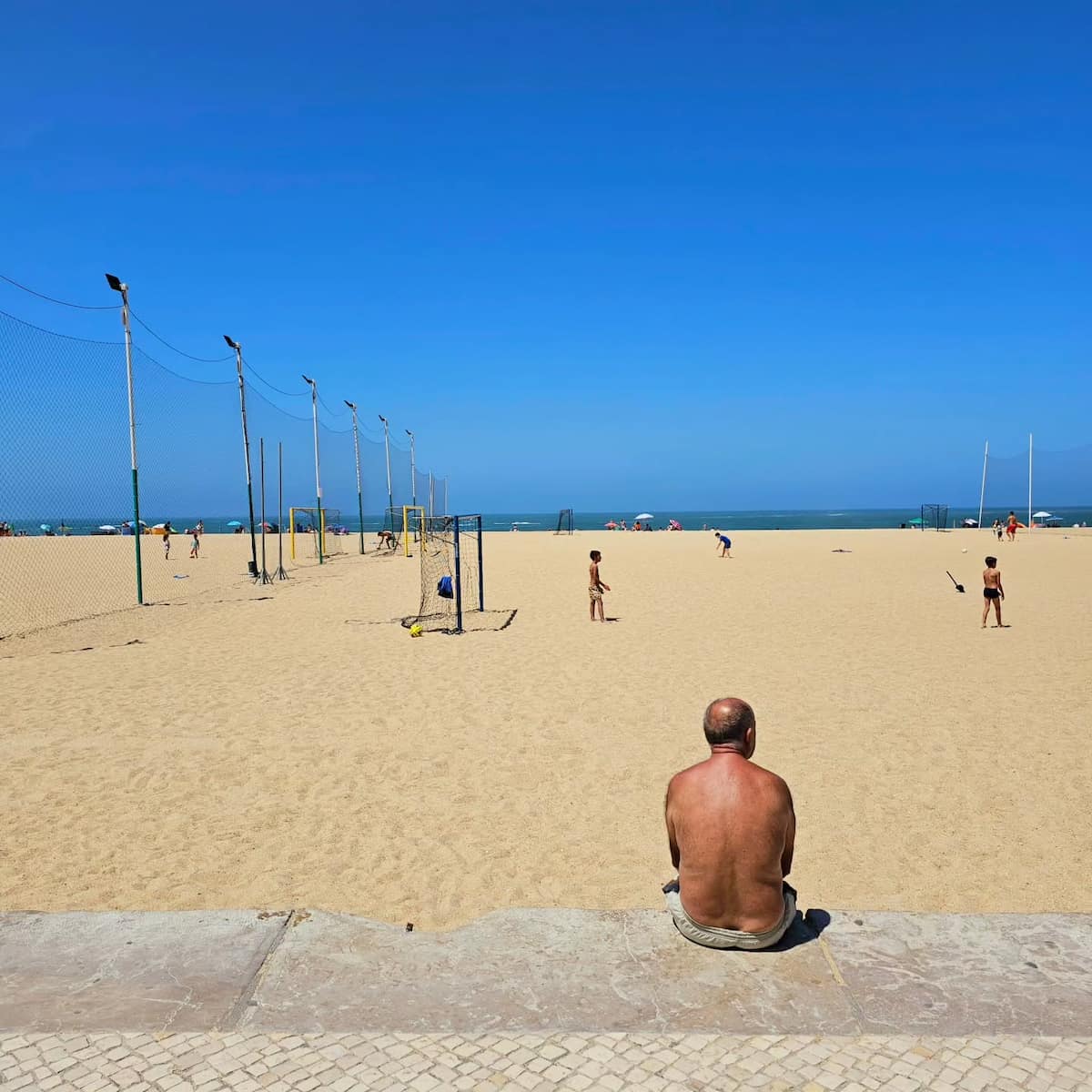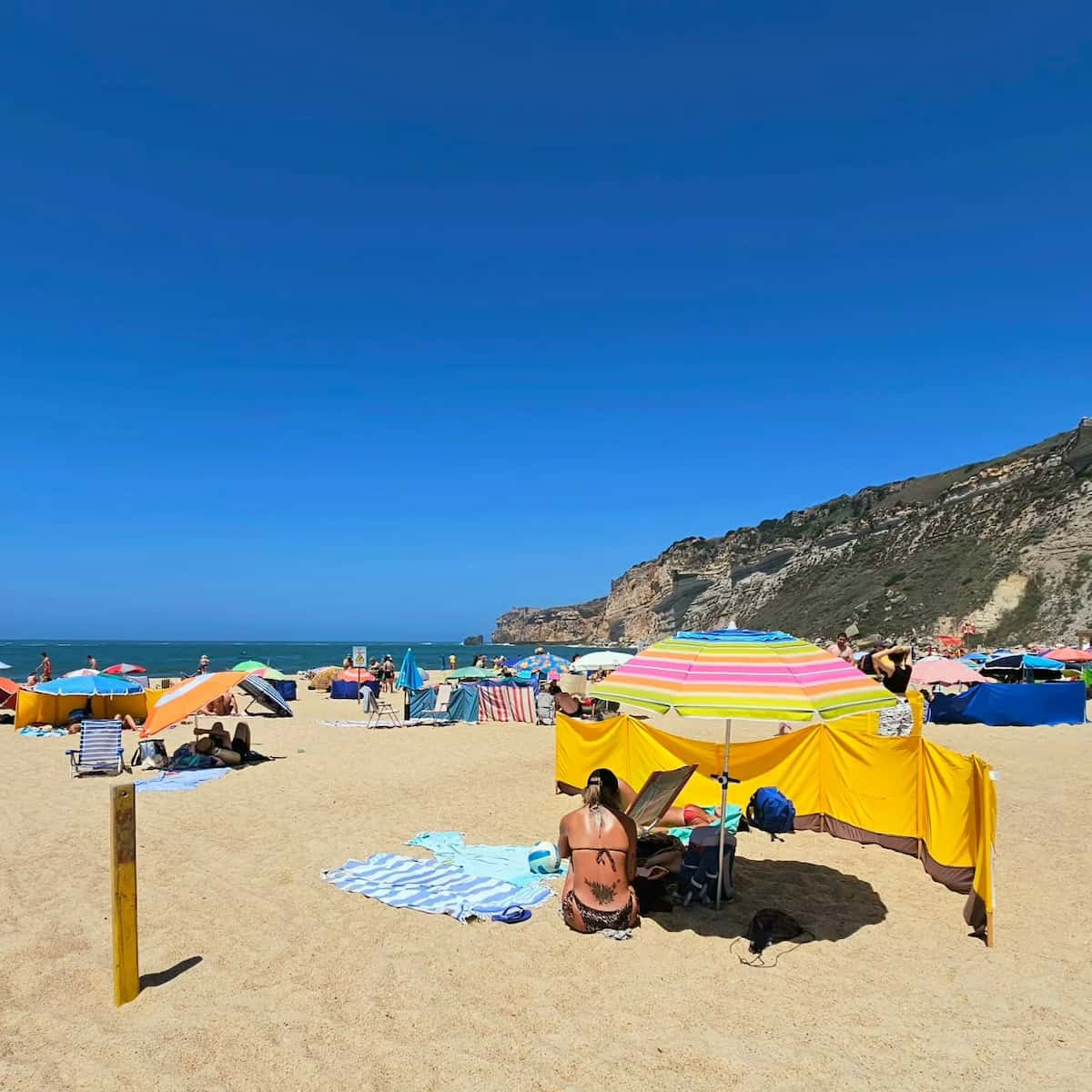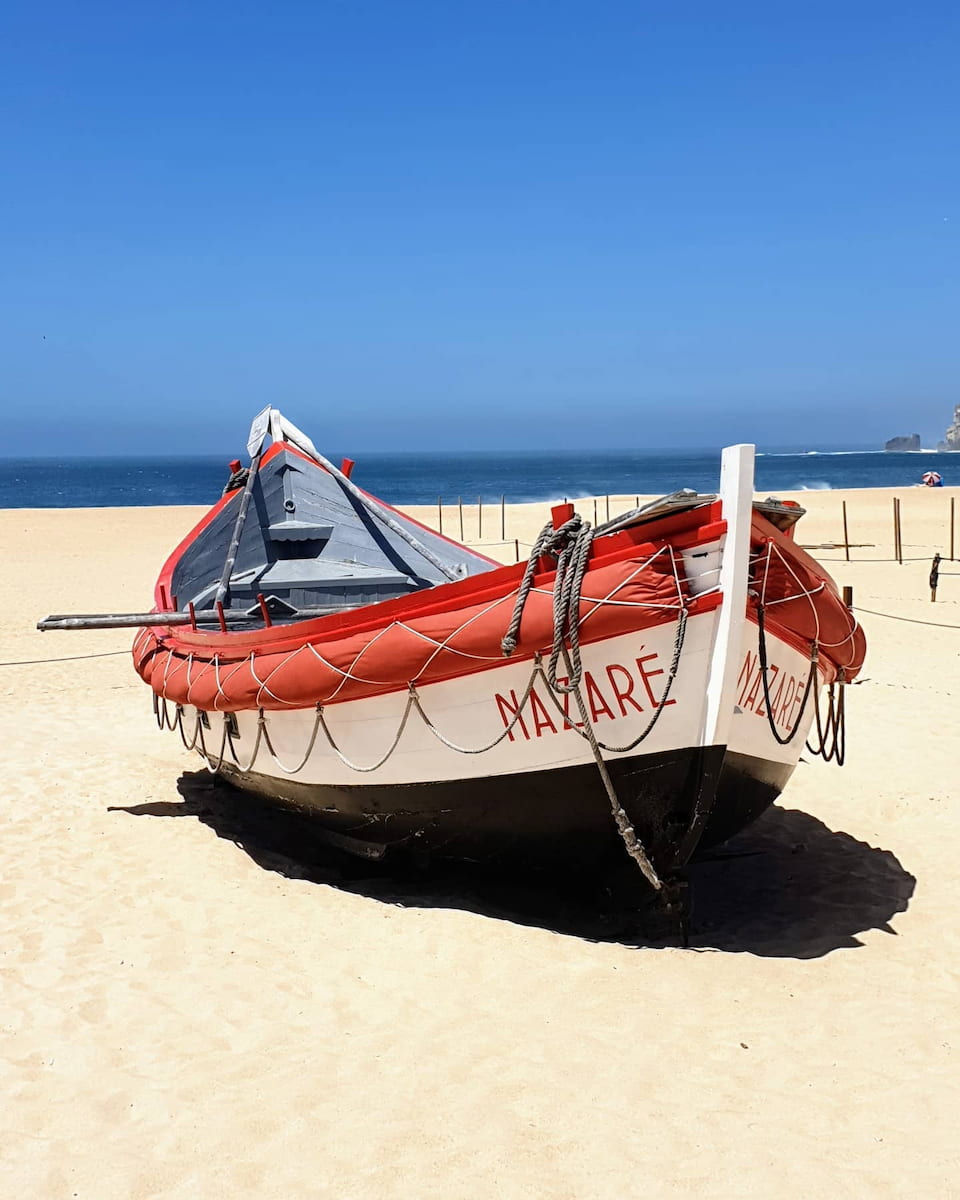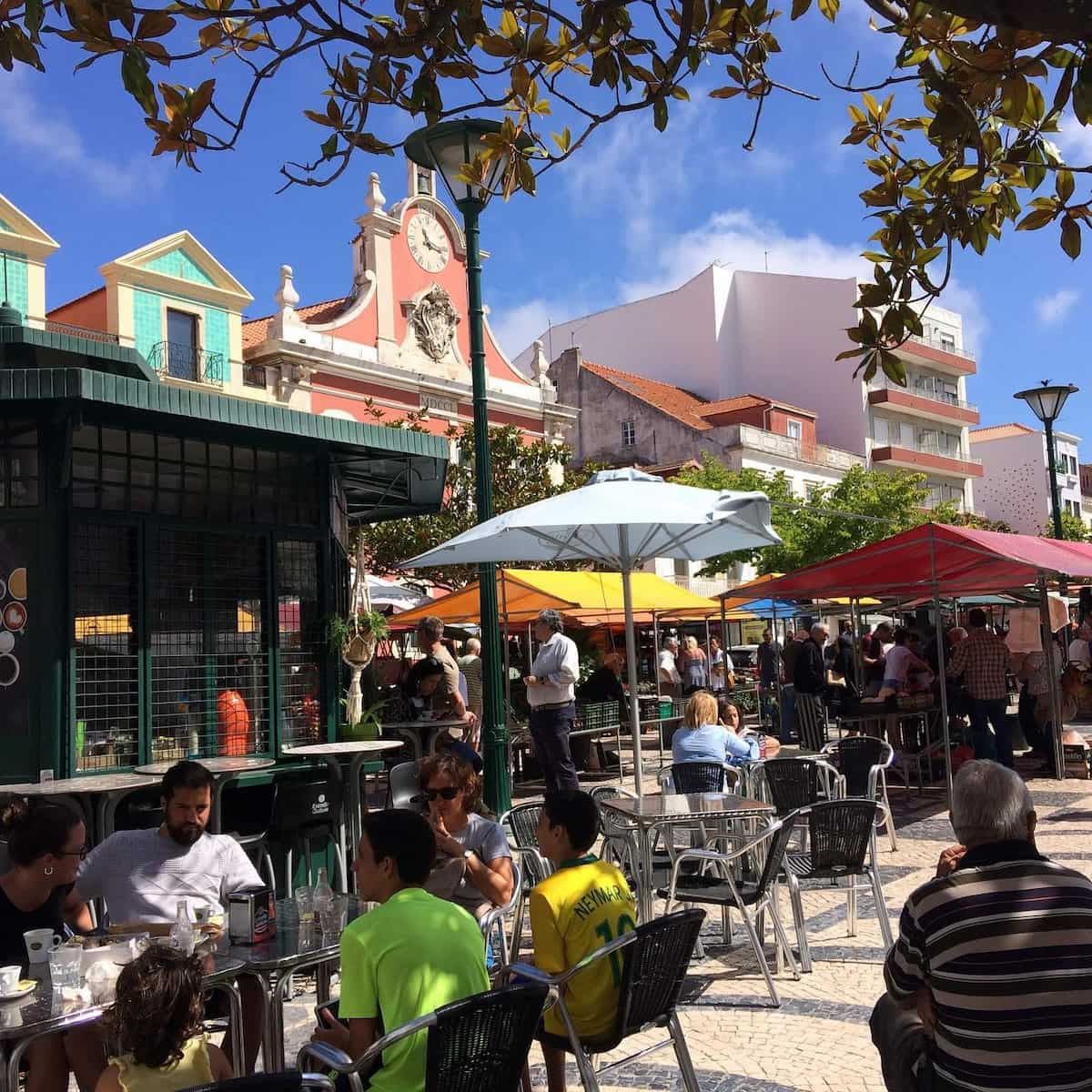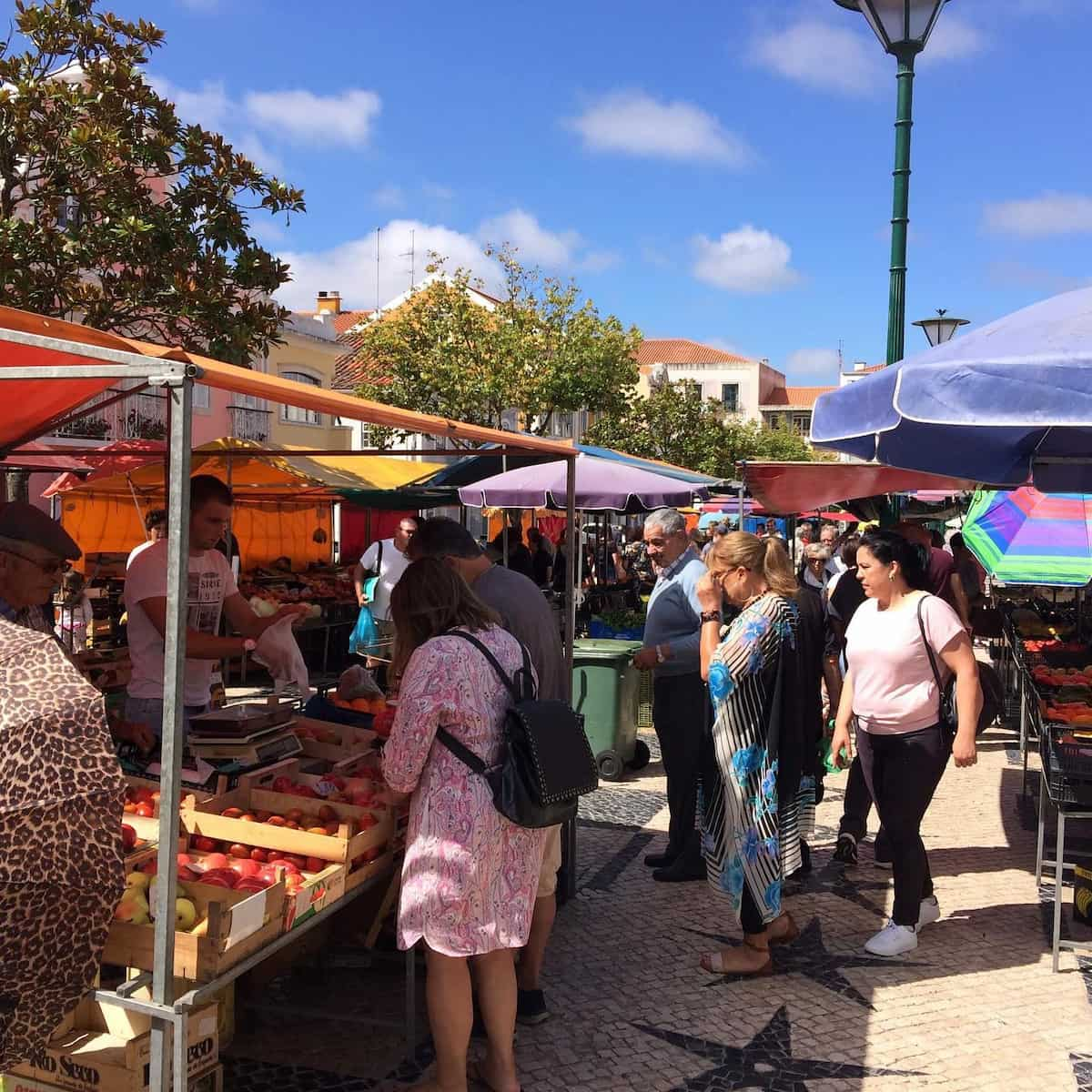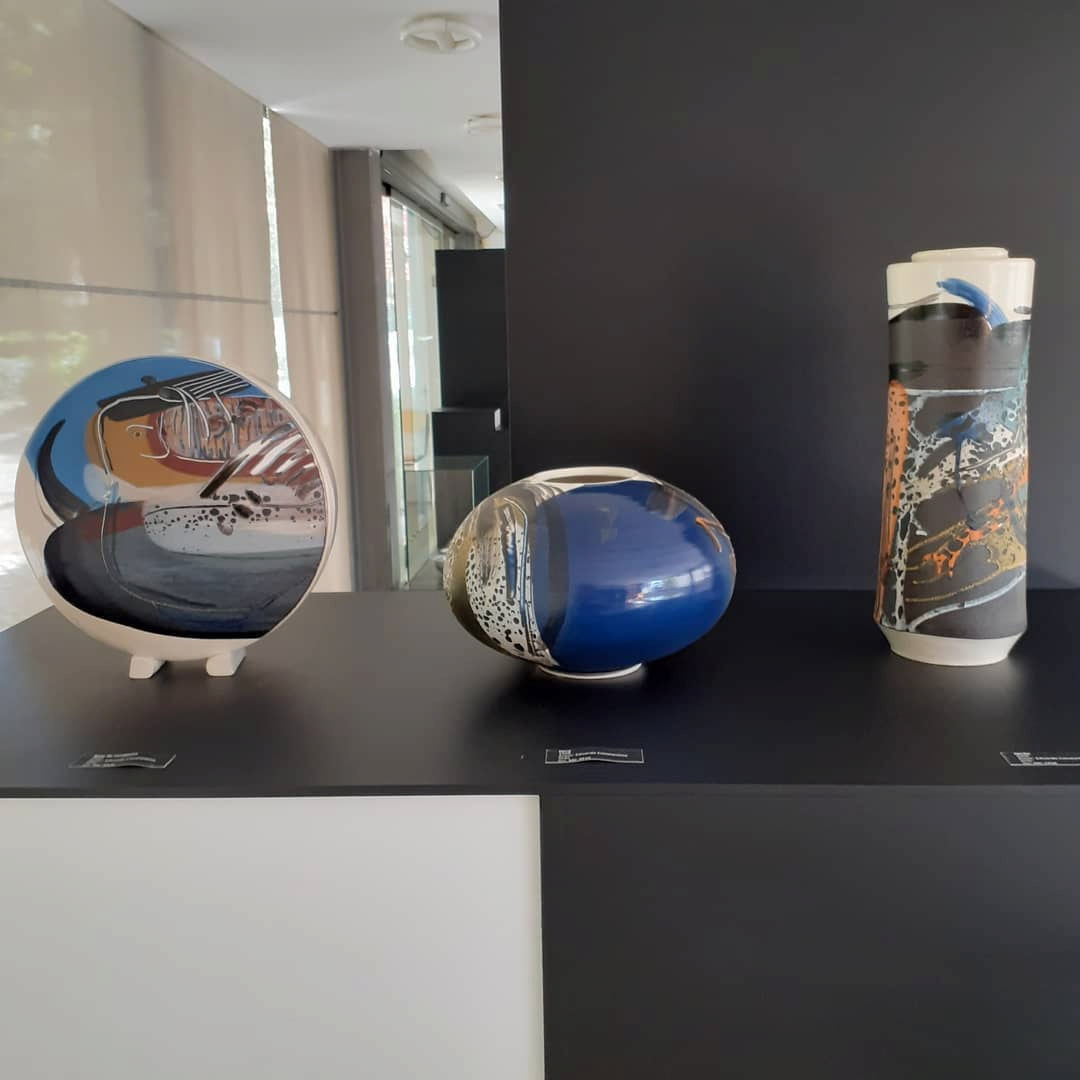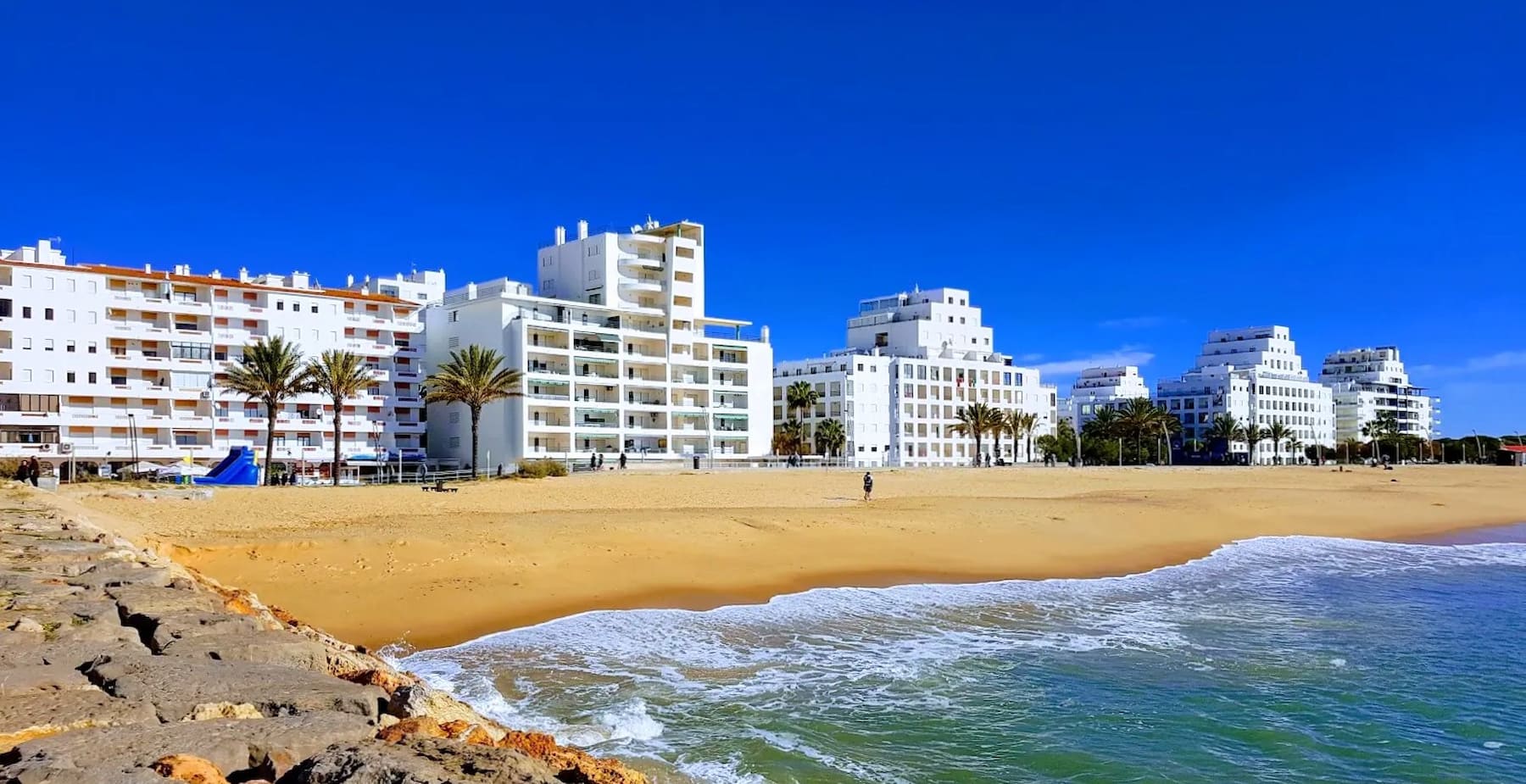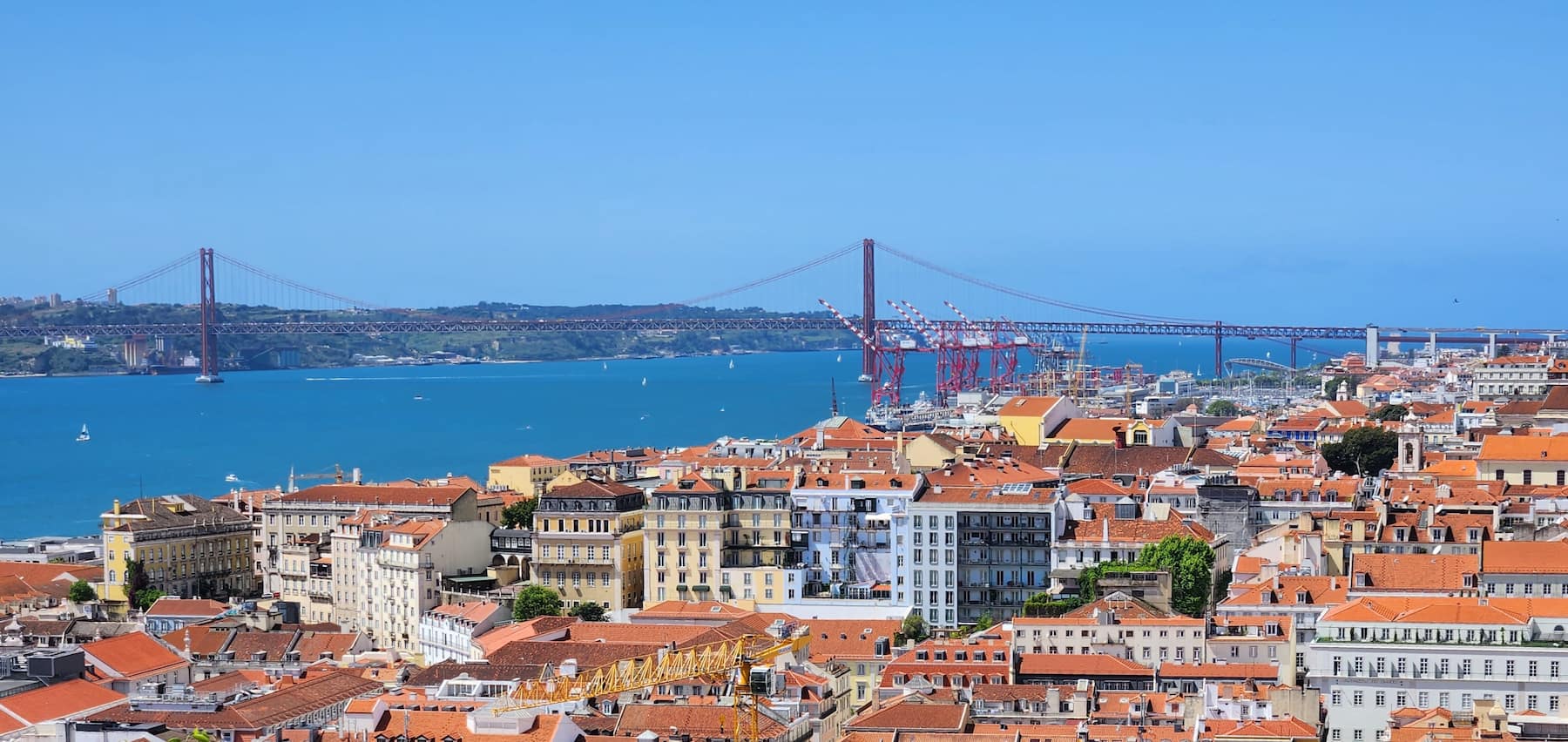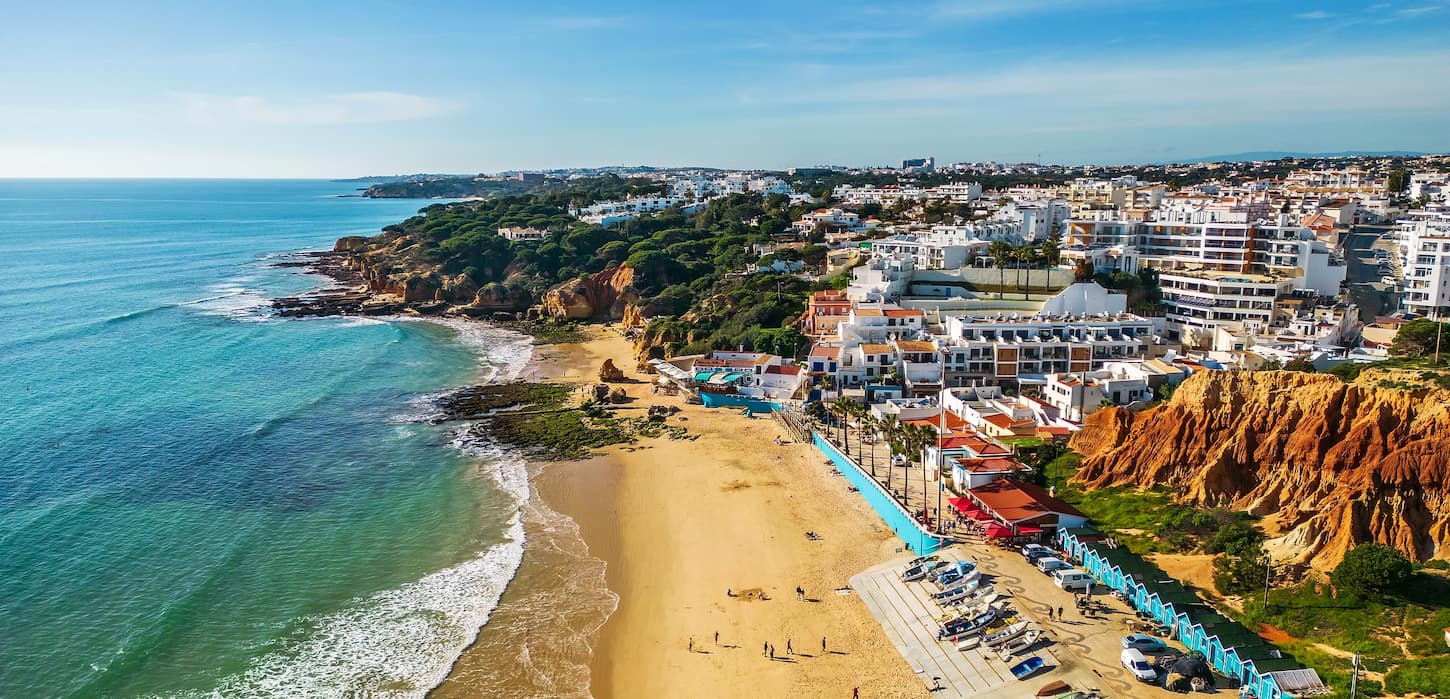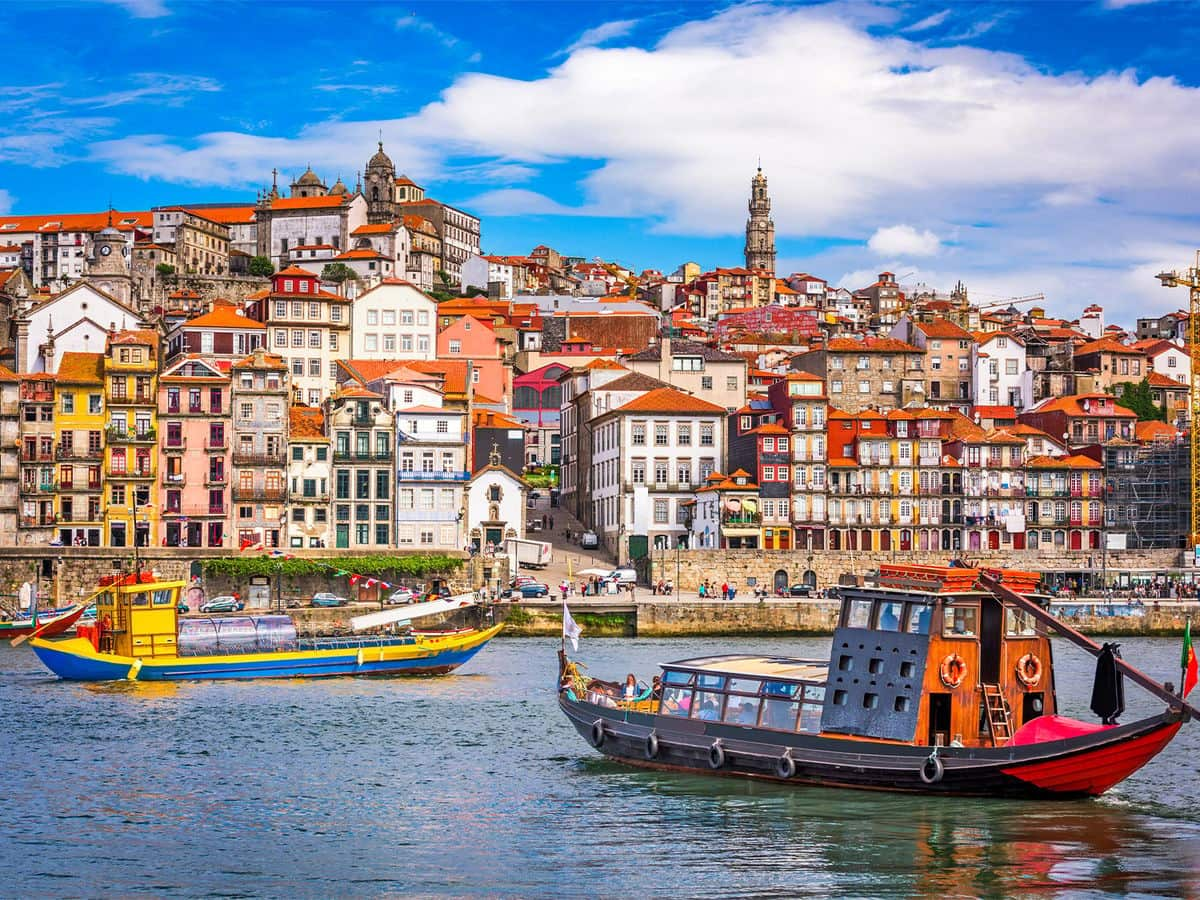Óbidos is a magical town full of history, charm, and surprises around every corner. From castles to sweet cherry drinks, there’s something for everyone here.
Whether you’re traveling with family, friends, or on your own, you’ll find many things to do in Óbidos. Read on for my favorite experiences and hidden gems you won’t want to miss!
🏠 Where to Stay in Obidos
- 💎 Luxury Hotel: The Literary Man Obidos Hotel, Obidos
- 🏨 4-Star: Hotel Vila D'Óbidos, Obidos
- 🛏️ 3-Star: Casa Picva, Obidos
- 💸 Cheap: Casa do Poço, Obidos
- 🏢 Apartment: Ana's House, Obidos
- 👨👩👧👦 For Families: Casa Do Relogio, Obidos
- 🏩 For Couples: Hotel Louro, Obidos
💁 Best Guided Tours
- Lisbon to Obidos Interactive Self-Guided Half-Day Tour from € 35 (⭐4.7/5)
- Obidos Lagoon Boat Tour from € 25 (⭐4.9/5)
- Óbidos & Nazaré Private Tour from € 120 (⭐4.8/5)
- Fátima, Nazaré, and Óbidos Private Guided Tour from € 150 (⭐4.9/5)
Best Things To Do in Óbidos, Portugal
1. Óbidos Castle
Medieval marvel. Standing proudly at the highest point of Óbidos, the castle dates back to the 8th century when it was held by the Moors until their defeat in the 12th century. I was amazed by how well-preserved this fortress is, considering it’s been guarding the town for centuries. The solid stone walls and defensive battlements create an impressive silhouette against the Portuguese sky.

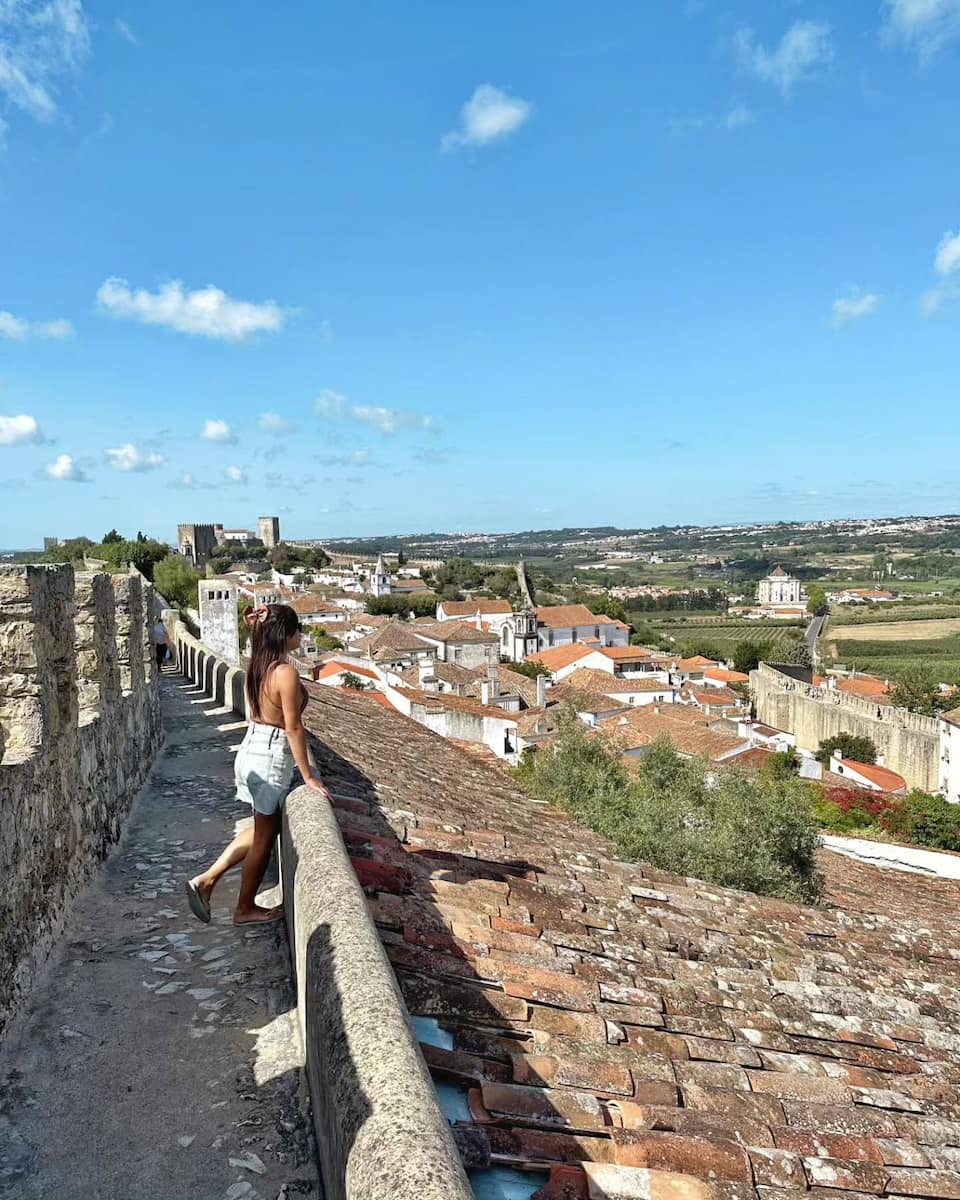

Free access. One of the best surprises about visiting Óbidos Castle is that there’s no entrance fee to explore its grounds! You can enter from two sides – I recommend approaching from the village side on foot for the full medieval experience, though there’s also access from the back side reachable by car.
Castle grounds. While wandering the castle grounds, I noticed informative plaques detailing its fascinating history. King Afonso I conquered the site in 1148, and his successor expanded it in 1210. The most interesting fact I learned was that Portuguese kings traditionally gifted Óbidos to their queens, earning it the nickname “The Town of Queens.”
Panoramic views. The absolute highlight of my visit was climbing up to walk the ramparts. From this vantage point, I captured stunning photos of both the castle itself and sweeping views of Óbidos’ whitewashed houses with their vibrant flowers and red-tiled roofs. Just be careful – there are no protective railings, and some sections are quite high!
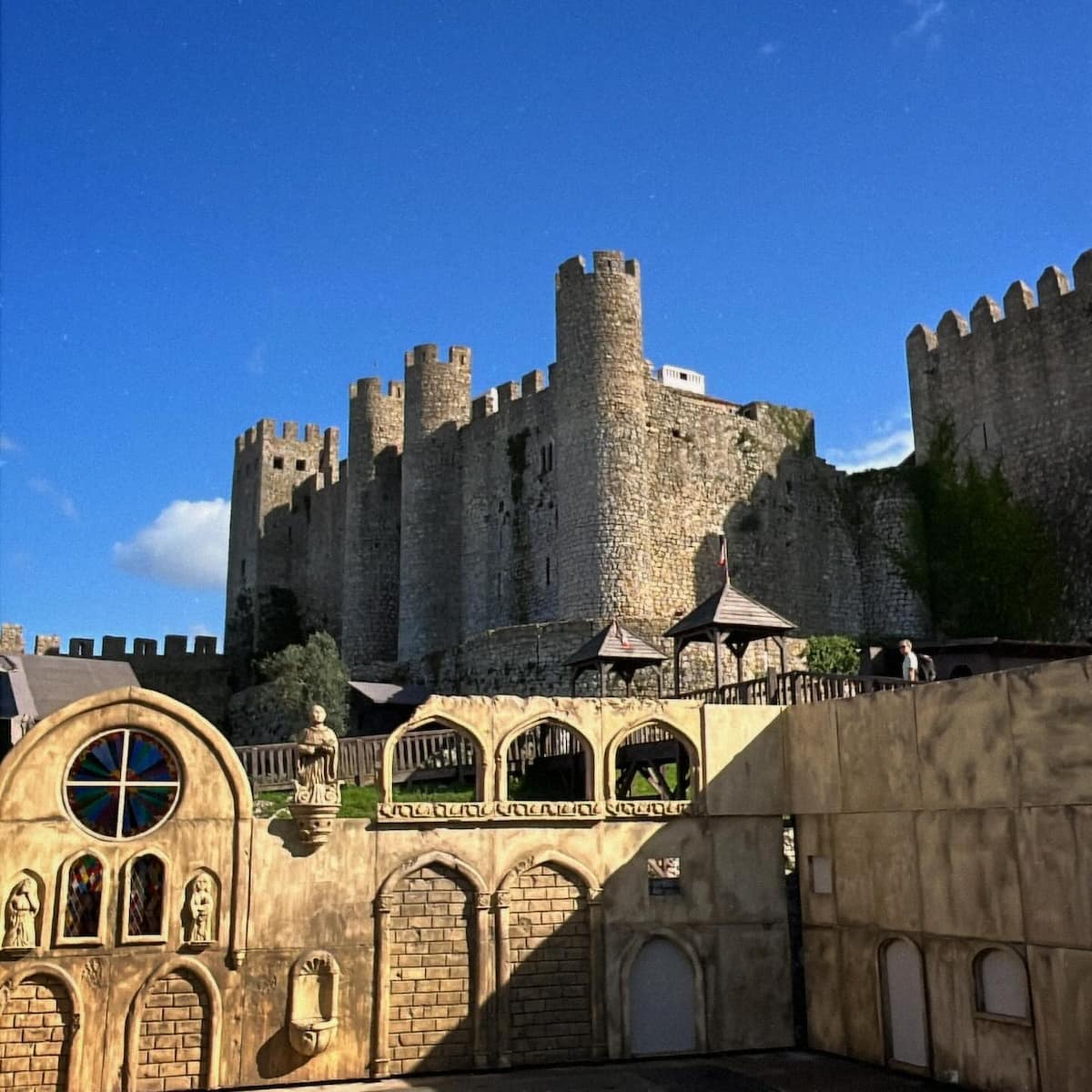
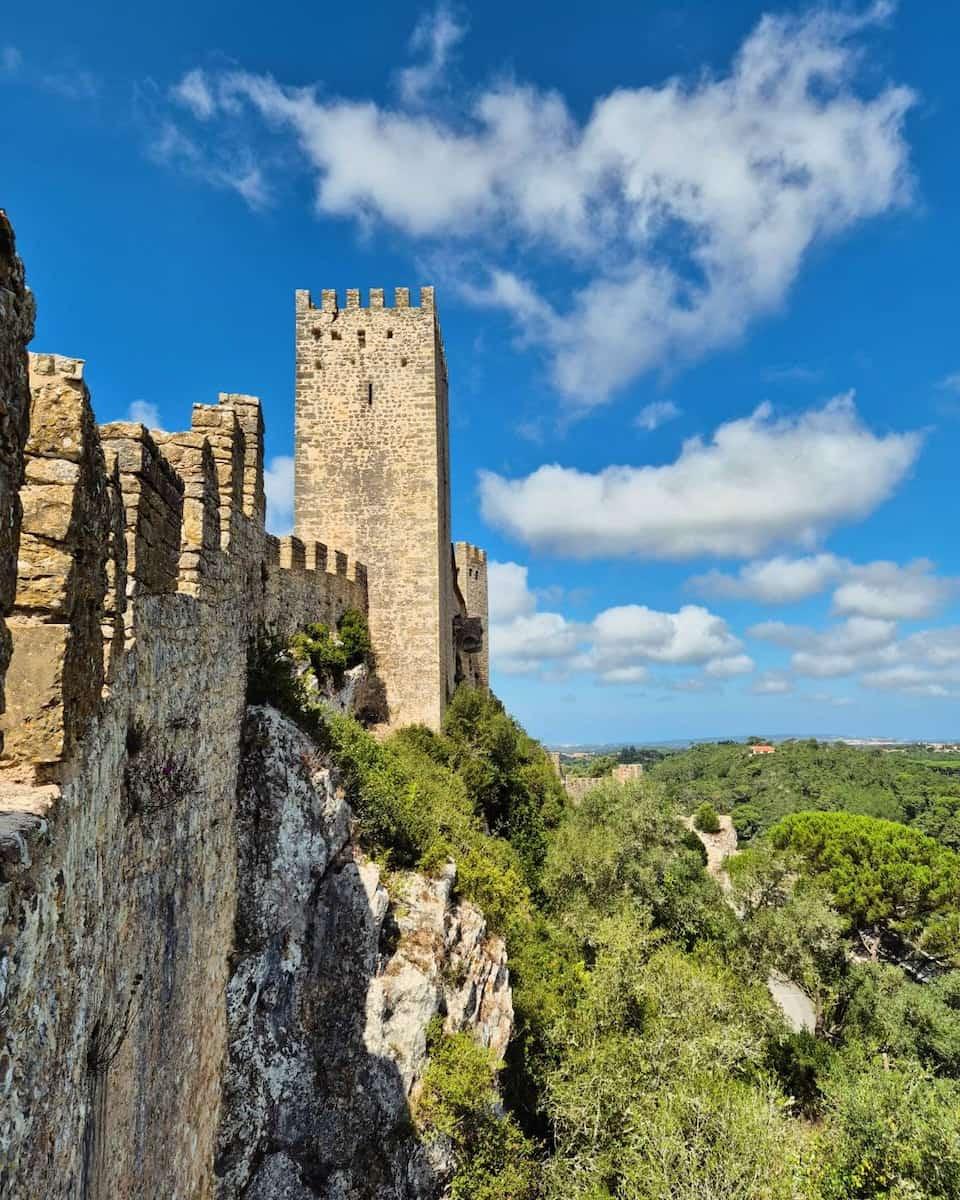
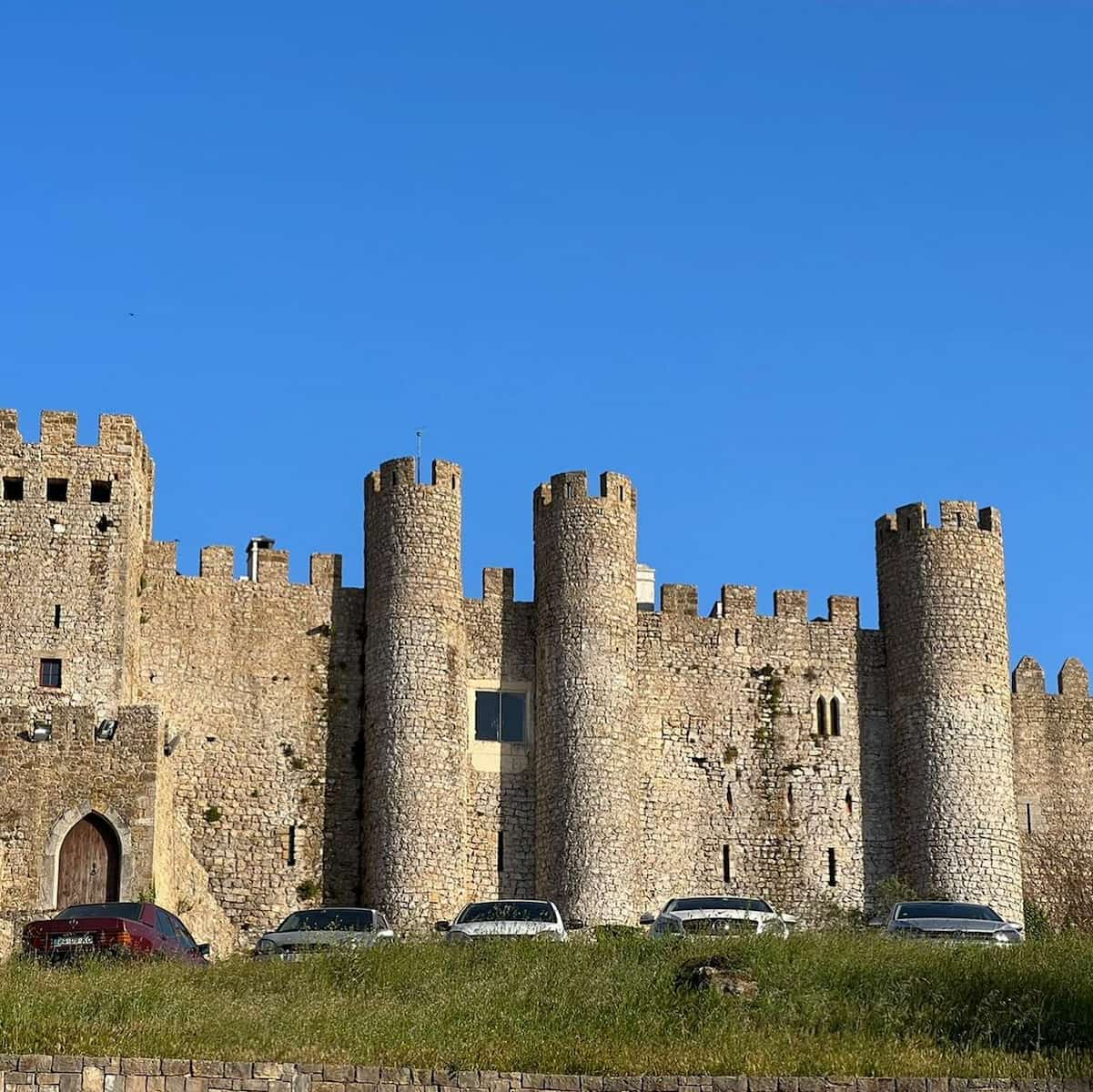
Practical tip: If you’re traveling with small children, elderly people, or anyone with mobility issues or fear of heights, I’d suggest enjoying the castle from ground level. The castle walls reach heights of 13 meters in some places with no safety barriers, making it potentially dangerous for these groups.
| Castle Feature | Details |
|---|---|
| Entry Fee | Free |
| Opening Hours | Accessible year-round |
| Walking the Walls | 1.5 km perimeter, 13m high in places |
| Special Events | Medieval Festival (July) |
| Interior Access | Limited (functions as Pousada hotel) |
⭐ Best Activities
- Óbidos: Medieval Tales, Secrets & Spots Guided Walking Tour – Discover the fascinating history and hidden corners of Óbidos on this guided walking tour. Explore the medieval town while hearing captivating stories and legends from a knowledgeable local guide.
2. Medieval Walls
Fortified beauty. Walking Óbidos’ medieval walls was the highlight of my trip to Portugal. These ancient fortifications, which date back to the 12th century when the first king of Portugal conquered the town, completely encircle the village, stretching about 1.5 kilometers around the perimeter. When you plan your trip to see the town, include these walls at the top of your list of things to experience – they’ve remarkably survived the devastating earthquake of 1755 that damaged many structures in cities in Portugal.
Stunning views. From atop the walls, I captured incredible photos of the town’s whitewashed houses with their terracotta roofs and colorful flowers. If you’re coming from Lisbon to Óbidos on a popular day trip, this view alone justifies the journey. On clear days, you can even spot the Óbidos Lagoon glimmering in the distance – a sight that has enchanted visitors since the 16th century when queens of Portugal received this town as wedding gifts from the king of Portugal.
Physical challenge. I won’t sugarcoat it – parts of this walk require good balance and a head for heights. The path is uneven, sometimes narrow, and lacks guardrails in many sections. In some places, the walls tower an impressive 13 meters high! When planning tours from Lisbon that include Óbidos, consider your physical abilities for this walk. Many travelers who stop in Óbidos during a road trip from Lisbon to Porto find this to be one of the most memorable things to see.
Morning recommendation. I started my wall walk around 9 AM and had much of it to myself. By midday, the walls were crowded with day-trippers from Lisbon, making the narrow sections more difficult to navigate. If you stay in Óbidos and spend the night, you can enjoy the walls in peaceful solitude after the crowds depart. I recommend spending at least 3-4 hours in Obidos to fully appreciate it – the town is small but packed with history.

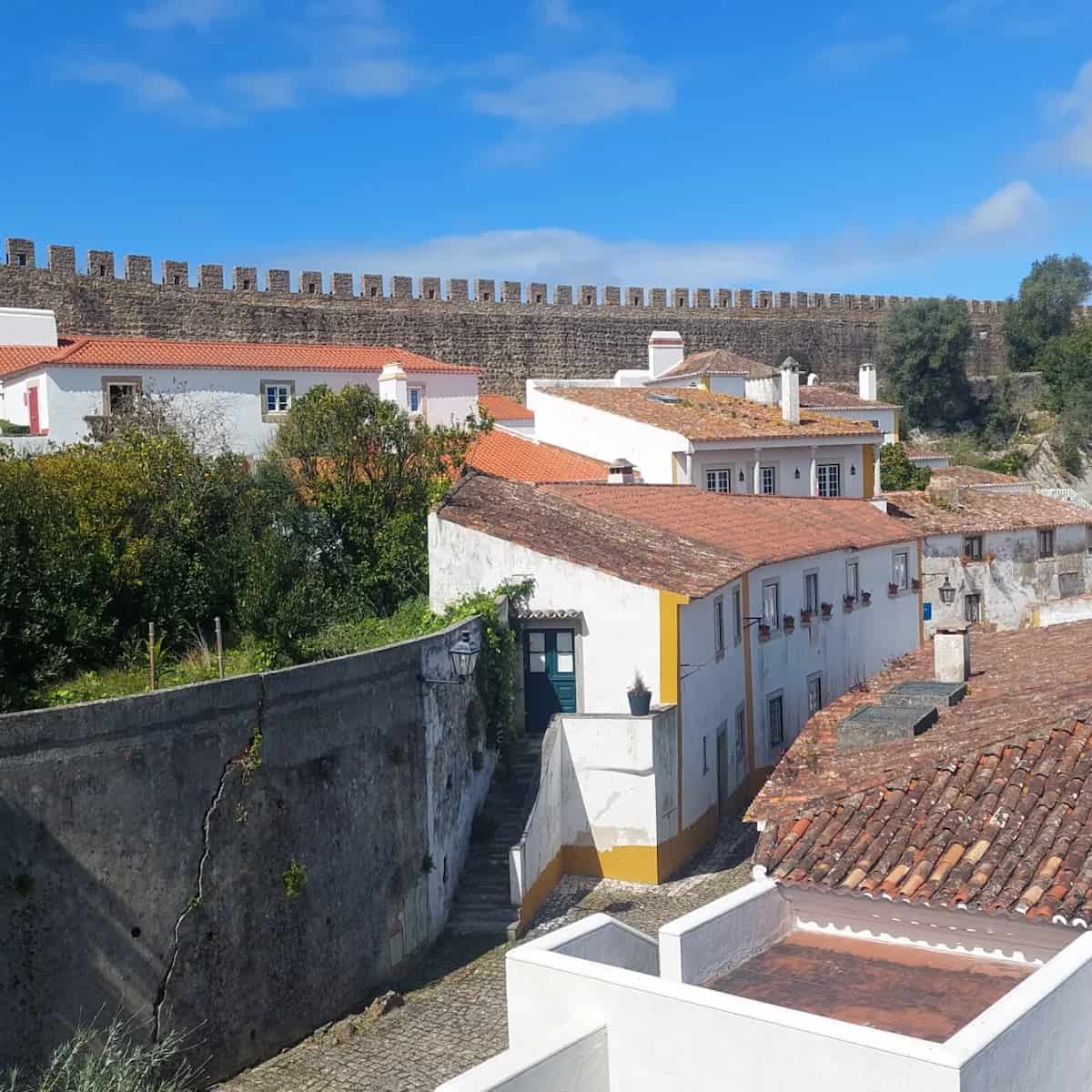
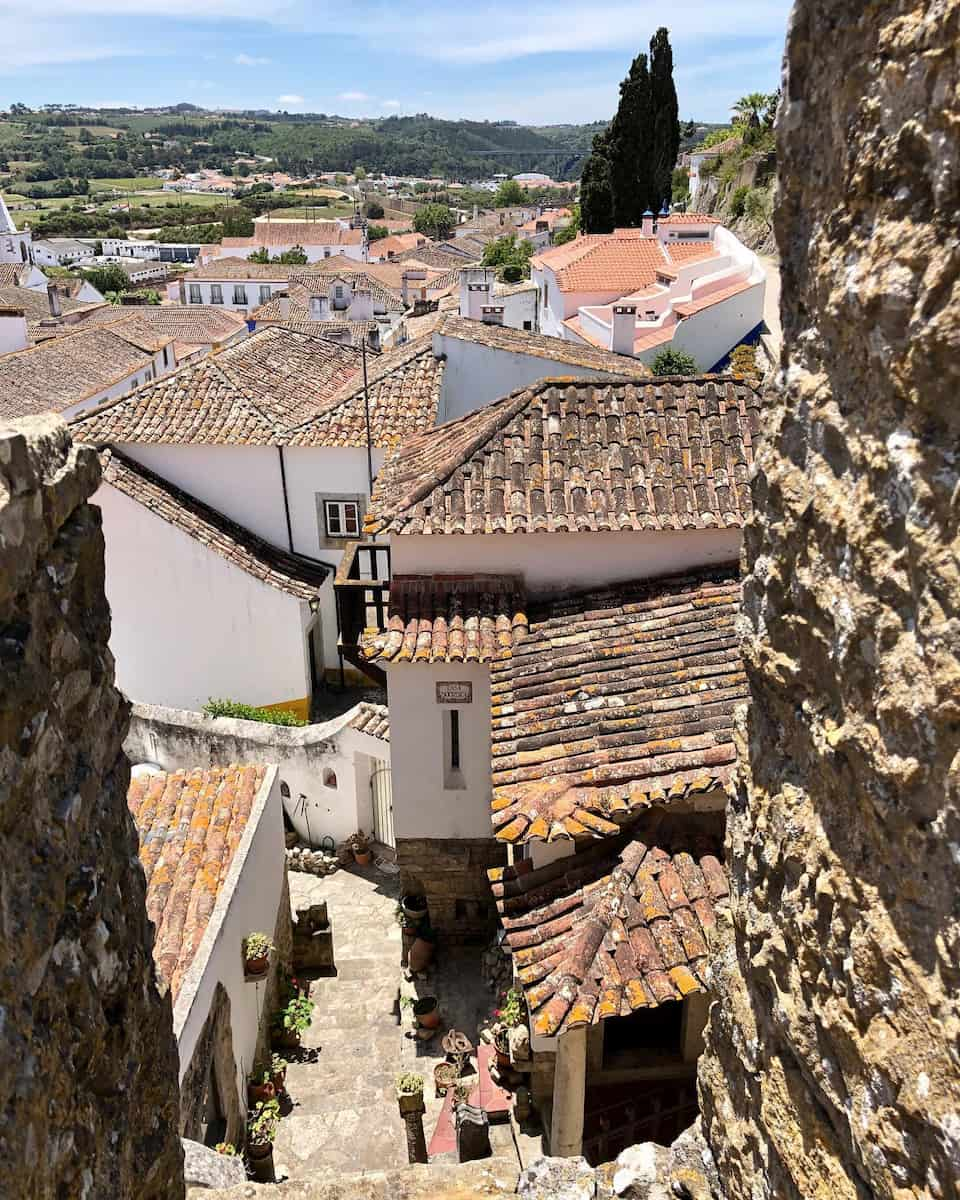
Safety first. While walking the walls near Obidos Castle (which is one of the most impressive medieval fortresses in Portugal), I noticed several spots where extra caution is needed. If your visit to Óbidos is part of an international trip, be sure to wear proper footwear with good grip – my running shoes were perfect. For those arriving via public transportation, be aware that the train station is located about 1.5km from the town center, so a map of Óbidos will help you plan your approach.
| Wall Walking Tips | Details |
|---|---|
| Best Entry Points | Near the castle de Obidos or main gate |
| Walking Time | 1-1.5 hours (complete circuit) |
| Difficulty | Moderate (uneven surfaces, heights) |
| Best Time | Early morning or if you spend the night, evening views |
| Cost | Free |
3. Porta da Vila
Grand entrance. The Porta da Vila serves as the main gateway into Óbidos’ medieval center, and what an entrance it is! I was immediately struck by its impressive double archway system – designed as a defensive measure in medieval times. The outer arch is simpler, while the inner one is more ornate and welcoming.
Azulejo masterpiece. Walking through the gate, I stopped to admire the beautiful 18th-century azulejo tiles depicting the Passion of Christ. These blue and white ceramic tiles create a small chapel-like space within the gateway itself. The detail in these hand-painted scenes is remarkable, especially considering their age.
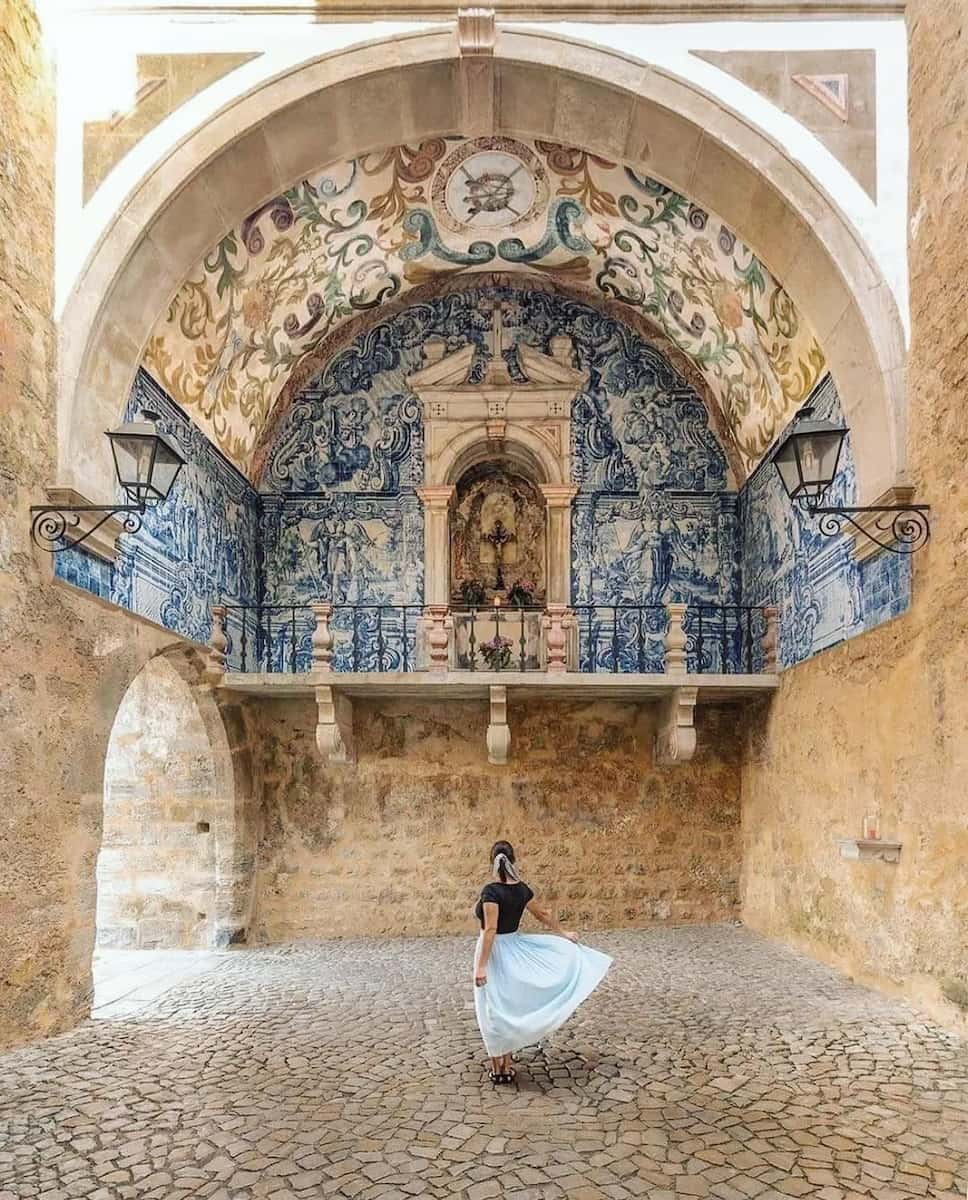

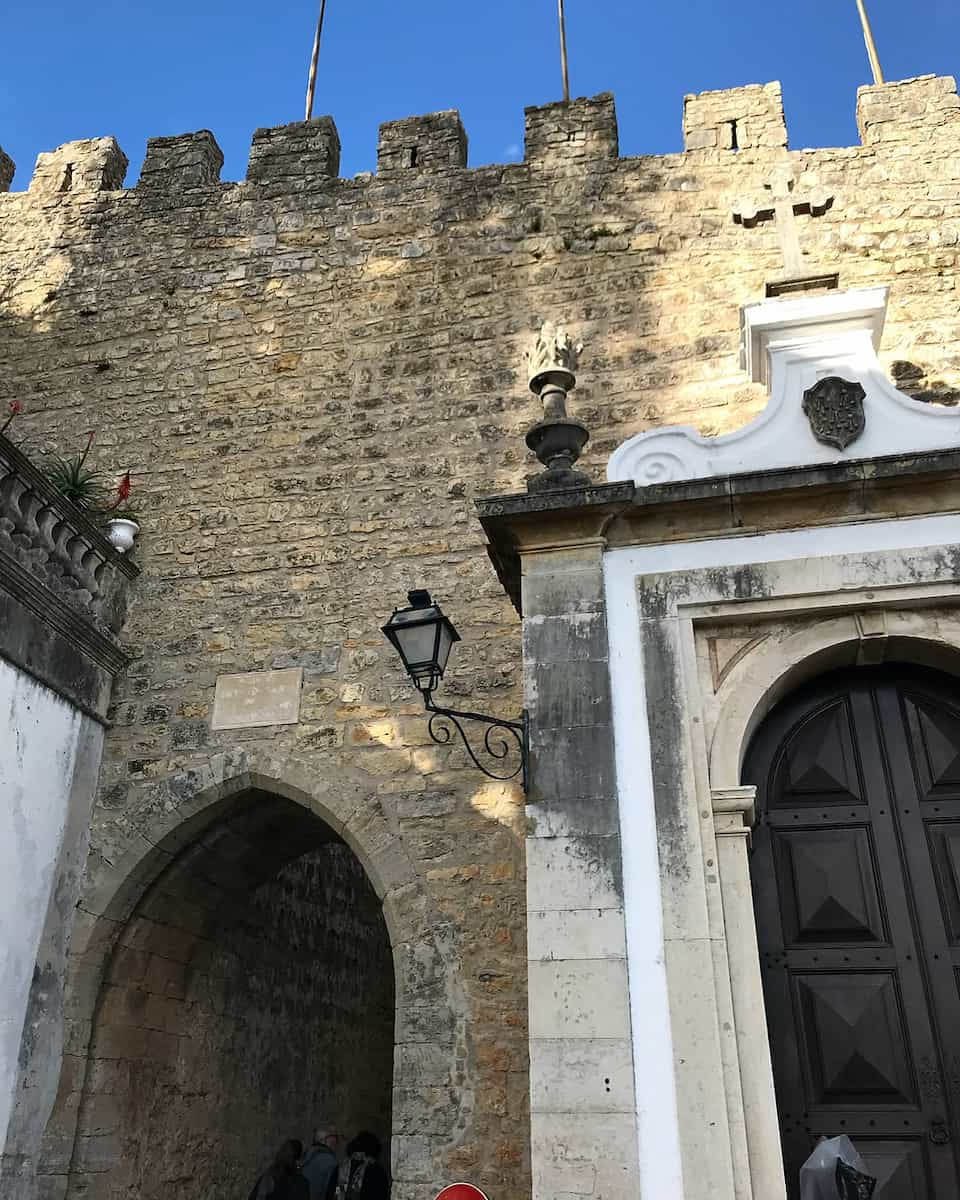
Photography spot. The Porta da Vila offers one of the most iconic photo opportunities in Óbidos. I captured a stunning shot looking through the archway toward the whitewashed buildings and cobblestone streets beyond. The framing created by the arch makes for a perfect composition.
Local tip: Just inside the gate on the right, I discovered a small, family-run shop selling hand-embroidered linens that have been made in the region for generations. The prices were reasonable – table runners from €15-25 – and made for authentic souvenirs that support local artisans.
- Best photo angles at Porta da Vila:
- From outside looking in (captures the full archway)
- From inside looking up at the azulejo tiles
- Through the arch toward Rua Direita
- From the side to capture both arches in one frame
- Looking back at the gate from 50 meters inside the town
⭐ Best Activities
- Óbidos: Explore the Queen's Jewel with a Local Guide – Join a local guide to explore Óbidos, known as the “Queen’s Jewel” of Portugal. Learn about its royal history, architectural highlights, and cultural significance on this informative walking tour.
4. Aqueduto da Usseira
Engineering marvel. The Aqueduto da Usseira stretches an impressive 6 kilometers from the mountains to Óbidos. Built in the 16th century during the reign of Queen Catherine of Austria, this aqueduct once supplied the entire town with fresh water. I was amazed by the scale of this structure, with some arches reaching heights of 30 meters.
Hidden gem. Unlike the castle and walls that attract crowds, I found the aqueduct relatively quiet. Following its path outside the town walls gave me a different perspective on Óbidos and a welcome break from the tourist-filled center. The countryside views along the way were peaceful and authentic.

Photography opportunities. The most photogenic section lies about 1 kilometer from town, where a series of tall arches creates dramatic framing against the sky. I spent about 20 minutes here capturing different angles as the light changed. The contrast between the ancient stonework and the surrounding greenery was particularly striking.
Walking route. I followed a pleasant walking path alongside portions of the aqueduct, which took about 45 minutes round-trip from the town walls. The terrain is mostly flat and accessible, though some sections become muddy after rain. I recommend wearing comfortable shoes and bringing water, especially during summer months.
Historical significance. What fascinated me most was learning how this aqueduct transformed life in medieval Óbidos. Before its construction, residents relied on cisterns and wells that often ran dry during summer. This engineering achievement brought consistent water to the town’s fountains and households for centuries.
| Aqueduct Facts | Details |
|---|---|
| Construction Period | 1573-1575 |
| Length | Approximately 6 km |
| Highest Point | 30 meters |
| Builder | Queen Catherine of Austria |
| Water Source | Springs in Usseira mountains |
5. Igreja de Santa Maria
Historical significance. Igreja de Santa Maria stands as Óbidos’ main church, with origins dating back to the 12th century. What struck me immediately was its simple yet elegant façade with Manueline doorway details. This church witnessed royal history firsthand – King Afonso V married his cousin Isabel here in 1444 when he was just 10 years old and she was 8!
Artistic treasures. Inside, I discovered an impressive collection of 17th-century azulejo tiles covering the walls. The painted ceiling and gilded altarpiece created a stark contrast to the church’s relatively plain exterior. I was particularly drawn to the Renaissance tomb of João de Noronha and his wife, with its intricate stone carving showing remarkable preservation.
Local connection. A friendly elderly woman who volunteers at the church shared that many local families still celebrate important life events here. She pointed out a baptismal font that has been in continuous use since the 16th century. These personal touches made my visit more meaningful than just checking off another tourist site.
Practical information. Entry to the church costs €2 for adults, with children under 12 free. I found it well worth the small fee to support the maintenance of this historical treasure. Photography is permitted without flash, and I recommend visiting in the morning when the light through the east windows illuminates the interior beautifully.
- Highlights
- 17th-century azulejo tile panels depicting religious scenes
- Ornate gilded altarpiece with intricate woodcarving
- Renaissance tomb of João de Noronha
- Original baptismal font from the 16th century
- Painted wooden ceiling with religious imagery
⭐ Best Activities
- Óbidos, Mafra and The Silver Coast Tour – Experience the charm of Óbidos along with the magnificent Mafra Palace and the scenic Silver Coast on this comprehensive day tour from Cascais. Perfect for history and architecture enthusiasts.
6. Igreja-Livraria de Santiago (Bookstore Church)
Literary sanctuary. Walking into the Igreja-Livraria de Santiago was like entering a bibliophile’s dream. This former 12th-century church has been transformed into one of the most unique bookstores I’ve ever visited. The contrast between ancient stone walls and carefully arranged bookshelves created an atmosphere that felt both sacred and intellectual.
Architectural blend. What impressed me most was how respectfully the conversion was done. The original Gothic arches and stone features remain intact, while wooden bookshelves have been thoughtfully integrated into the space. Sunlight streams through the original stained glass windows, casting colorful patterns across book covers and stone floors.
Book selection. I browsed through an impressive collection focusing on Portuguese literature, history, and art. Many books are available in multiple languages, including English, French, and German. The staff curates themed displays that change seasonally – during my visit, there was a beautiful collection of books about Portuguese maritime history.
Cultural significance. This bookstore-church exemplifies Óbidos’ status as a UNESCO City of Literature. The town has embraced this designation with several literary initiatives, including this unique repurposing of a historic building. I learned that the conversion was part of a larger project to establish Óbidos as a literary town.
Browsing experience. I spent nearly an hour exploring the various sections, eventually purchasing a beautifully illustrated book about Portuguese azulejos for €24. The peaceful atmosphere invited lingering, and I noticed many visitors simply sitting in quiet corners, reading or admiring the architecture.
| Bookstore Details | Information |
|---|---|
| Opening Hours | 10:00-18:00 (closed Mondays) |
| Entry Fee | Free |
| Book Languages | Portuguese, English, French, German, Spanish |
| Special Features | Original church architecture, reading nooks |
| Events | Literary readings (check schedule) |
7. Bar Ibn Errik Rex
Medieval ambiance. Stepping into Bar Ibn Errik Rex felt like traveling back several centuries. Located in a genuine medieval cellar with stone walls and arched ceilings, this tavern offers one of the most atmospheric drinking experiences in Óbidos. The flickering candlelight created dancing shadows on the ancient stonework, enhancing the historical feel.
Unique beverages. I sampled their signature medieval mead (€5), served in a traditional clay cup. The sweet honey flavor with hints of spices was unlike anything I’d tried before. They also offer a range of local wines, including the regional Oeste wines produced just kilometers away, priced between €3-6 per glass.

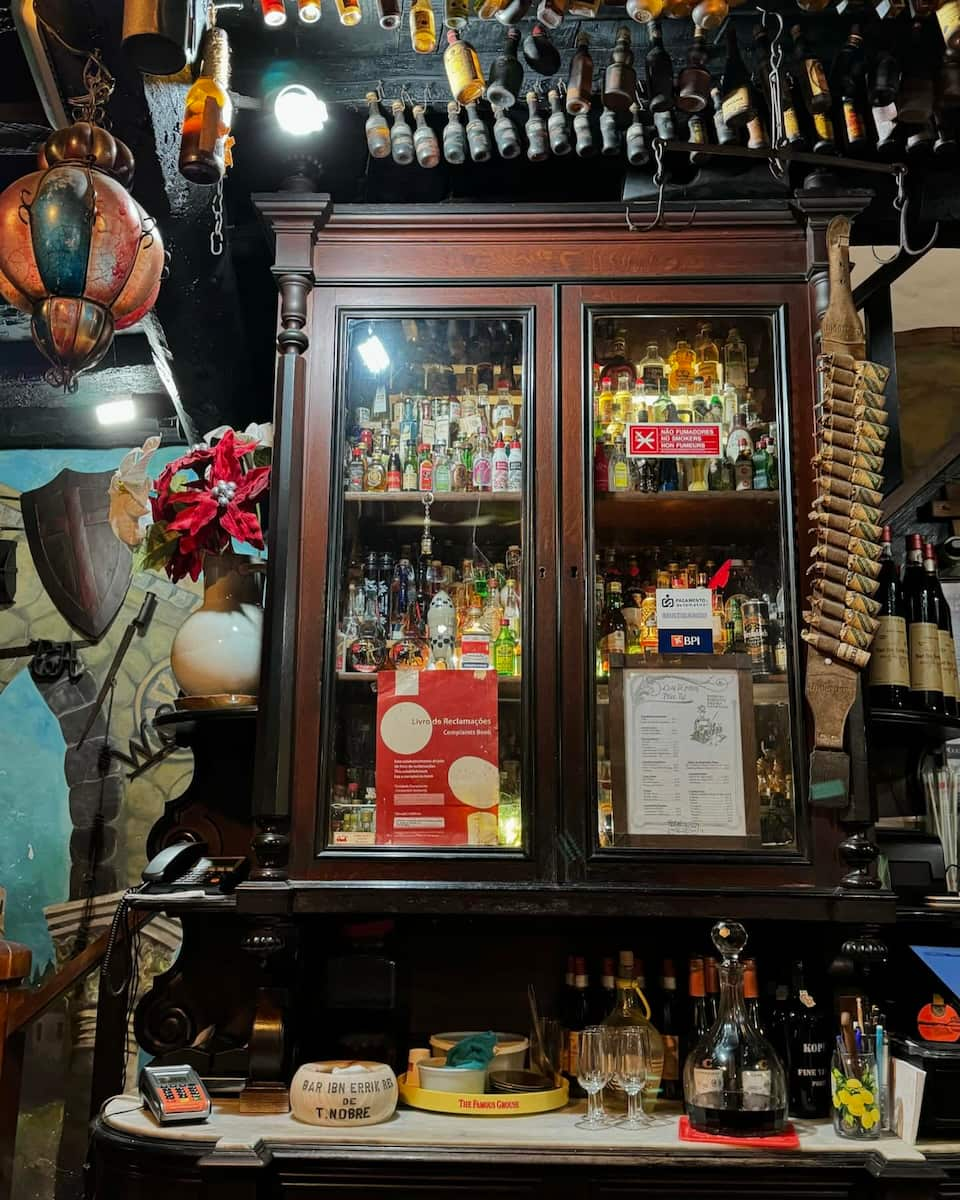
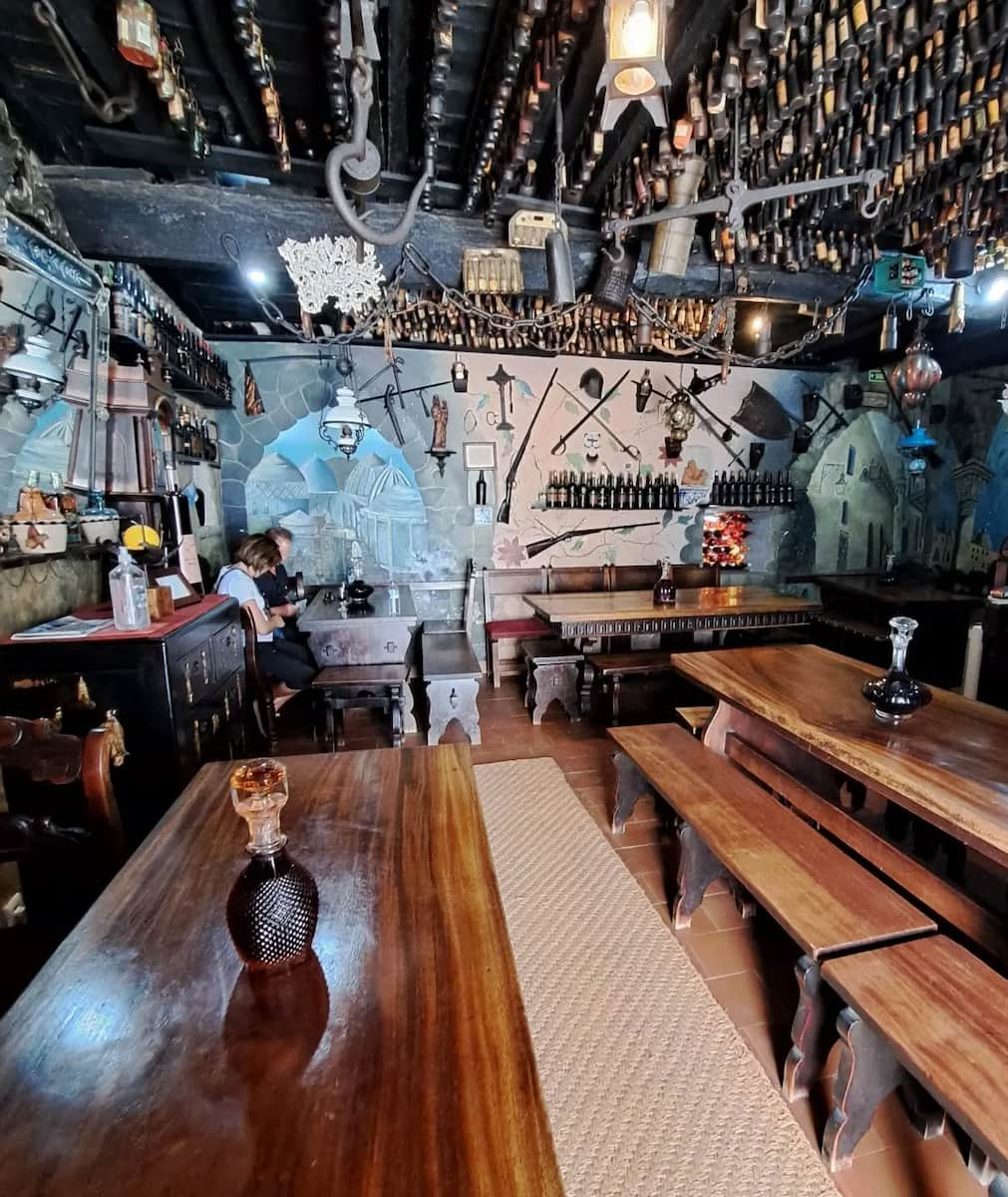
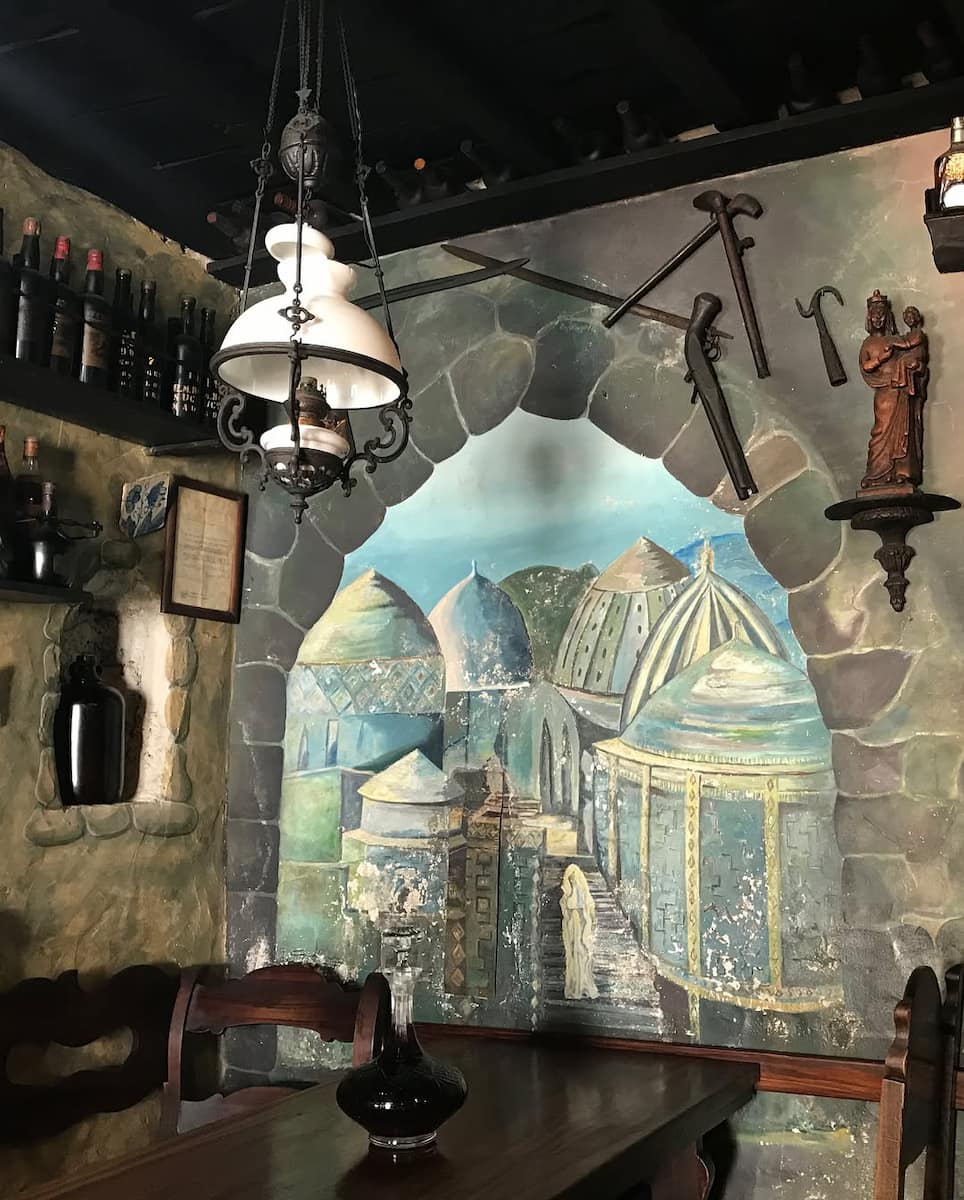
Historical connection. The bar’s name references Portugal’s first king, Henrique (Henrik), adding to its historical significance. The owner explained that many of the recipes for their drinks and small plates are based on medieval Portuguese cuisine, researched from historical documents.
Evening atmosphere. I visited around 8 PM when local musicians were playing traditional Portuguese folk music. The combination of live music, historical setting, and local drinks created a memorable evening that felt authentic rather than touristy. The cellar was comfortably cool, providing a welcome retreat from the summer heat outside.
Practical advice. This small venue fills up quickly in the evenings, especially during high season. I’d recommend arriving before 7 PM to secure a good table. Cash is preferred for smaller purchases, though they do accept cards for bills over €10. The steep stone steps leading down to the cellar require careful navigation, especially after a drink or two!
- Must-try drinks at Ibn Errik Rex:
- Traditional honey mead (€5)
- Ginja served in chocolate cups (€3.50)
- Local Oeste red wine (€4 per glass)
- Herb-infused liqueurs (€4-6)
- Medieval-inspired spiced cider (€4.50)
8. Try Ginja de Óbidos (Cherry Liqueur)
Local specialty. Ginja de Óbidos quickly became my favorite Portuguese discovery – a sweet cherry liqueur that’s been produced in this region for centuries. Made by infusing sour cherries (ginja berries) in alcohol with sugar and spices, this ruby-red drink offers the perfect balance of sweetness and tartness that lingers pleasantly on the palate.
Chocolate cup experience. The traditional way to enjoy ginja in Óbidos is served in an edible cup. I tried this delightful combination at a small shop on Rua Direita, paying €1.50 for the experience. The ritual involves sipping the liqueur slowly, then eating the chocolate cup, which by then has absorbed some of the cherry flavor – absolutely delicious!
Tasting variations. During my exploration, I discovered several varieties of ginja available throughout town. Some were sweeter, others more potent (ranging from 18-23% alcohol), and a few contained whole cherries at the bottom of the cup. My personal favorite included cinnamon notes that complemented the cherry flavor perfectly.
Shopping opportunity. I couldn’t leave without bringing some home, so I purchased a decorative bottle (200ml for €8.95) from a family-run shop that has been making ginja for four generations. They explained that their recipe includes a secret blend of spices that distinguishes their product from others in town.
Cultural significance. What fascinated me was learning how deeply ginja is woven into local culture. Traditionally offered as a welcome drink and served at celebrations, it represents Portuguese hospitality. The shopkeeper told me that many families in the region still make their own version at home using cherries from their gardens.
| Ginja Comparison | Price | Alcohol % | Special Features |
|---|---|---|---|
| Traditional | €1.50/shot | 18-20% | |
| Premium | €2.50/shot | 21-23% | With whole cherries |
| Artisanal | €3.00/shot | 19-22% | Spiced variations |
| Bottled (200ml) | €8-12 | 18-23% | Souvenir option |
| Homemade | €15/500ml | Varies | From local producers |
⭐ Best Activities
- Batalha, Alcobaça, Nazaré and Óbidos Private Tour from Fátima – Discover four of Portugal’s most captivating destinations on this private tour from Fátima, including the medieval town of Óbidos, the stunning monasteries of Batalha and Alcobaça, and the coastal beauty of Nazaré.
9. Municipal Museum
Historical collection. Housed in a former manor house, Óbidos’ Municipal Museum surprised me with its diverse collection spanning from Roman artifacts to contemporary art. The building itself, with its traditional Portuguese architecture and central courtyard, adds to the experience of exploring the region’s rich history.

Artistic highlights. I was particularly impressed by the collection of religious art from the 16th-18th centuries. The detailed wooden sculptures of saints and intricately painted panels showed remarkable craftsmanship. One standout piece was a 17th-century painting depicting Queen Santa Isabel, who received Óbidos as a wedding gift from King Dinis.
Archaeological finds. The ground floor exhibits feature archaeological discoveries from the region, including Roman pottery and Moorish ceramics. I found the display of coins spanning different periods of Portuguese history fascinating – they provided a tangible connection to the various civilizations that have influenced this area.
Intimate setting. Unlike larger, overwhelming museums, this one can be thoroughly enjoyed in about 45 minutes. Each room contains just enough items to be interesting without causing museum fatigue. The staff was knowledgeable and eager to share additional information about specific pieces that caught my interest.
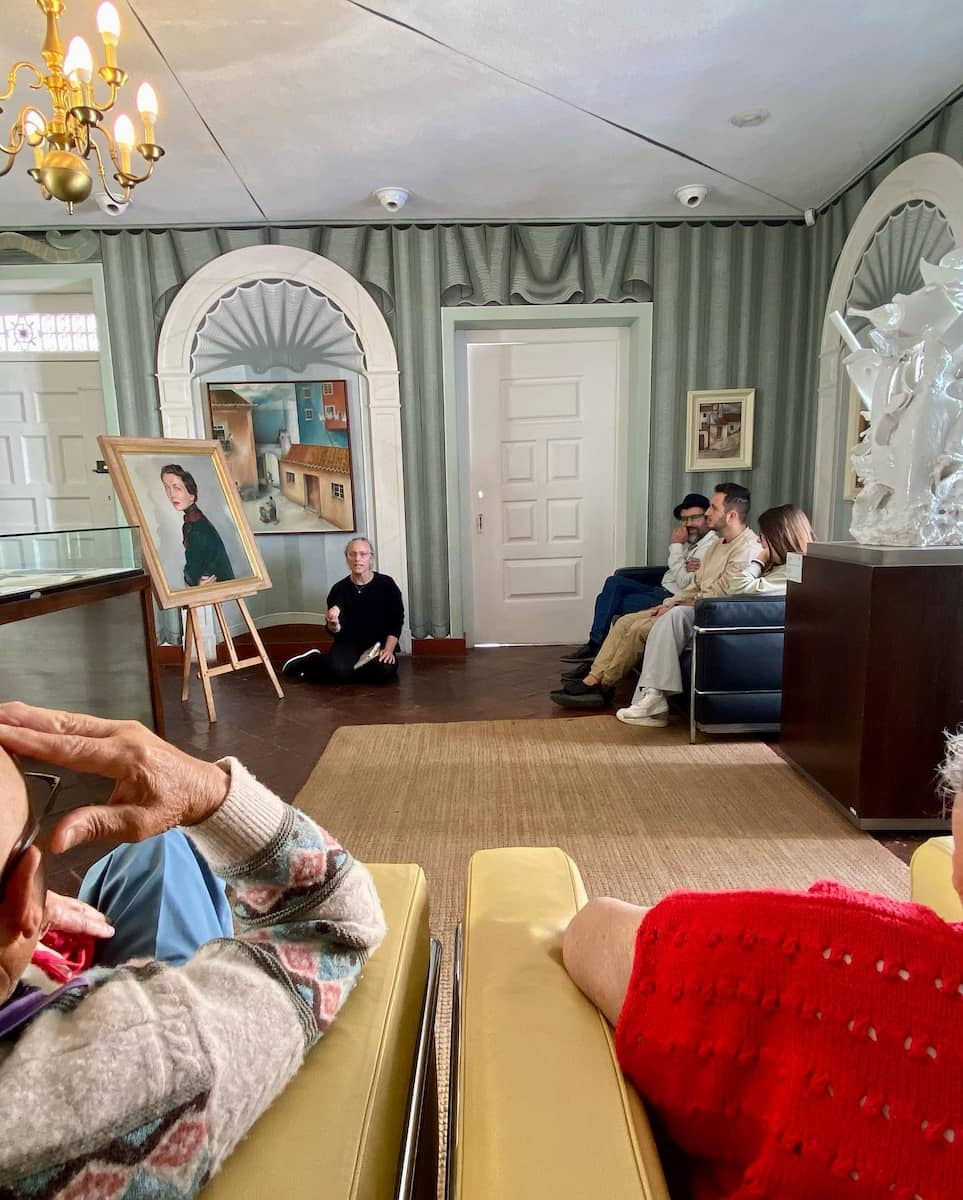
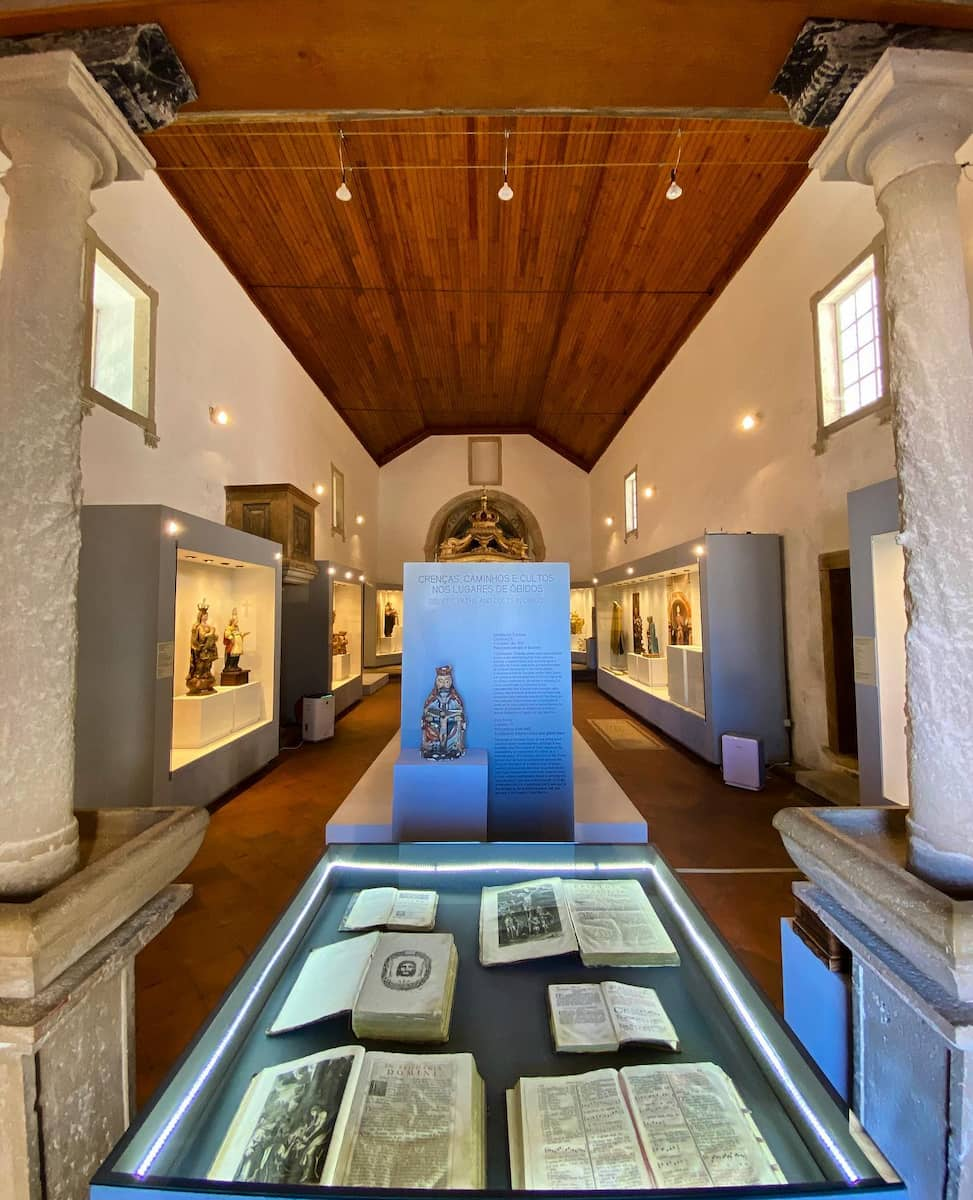
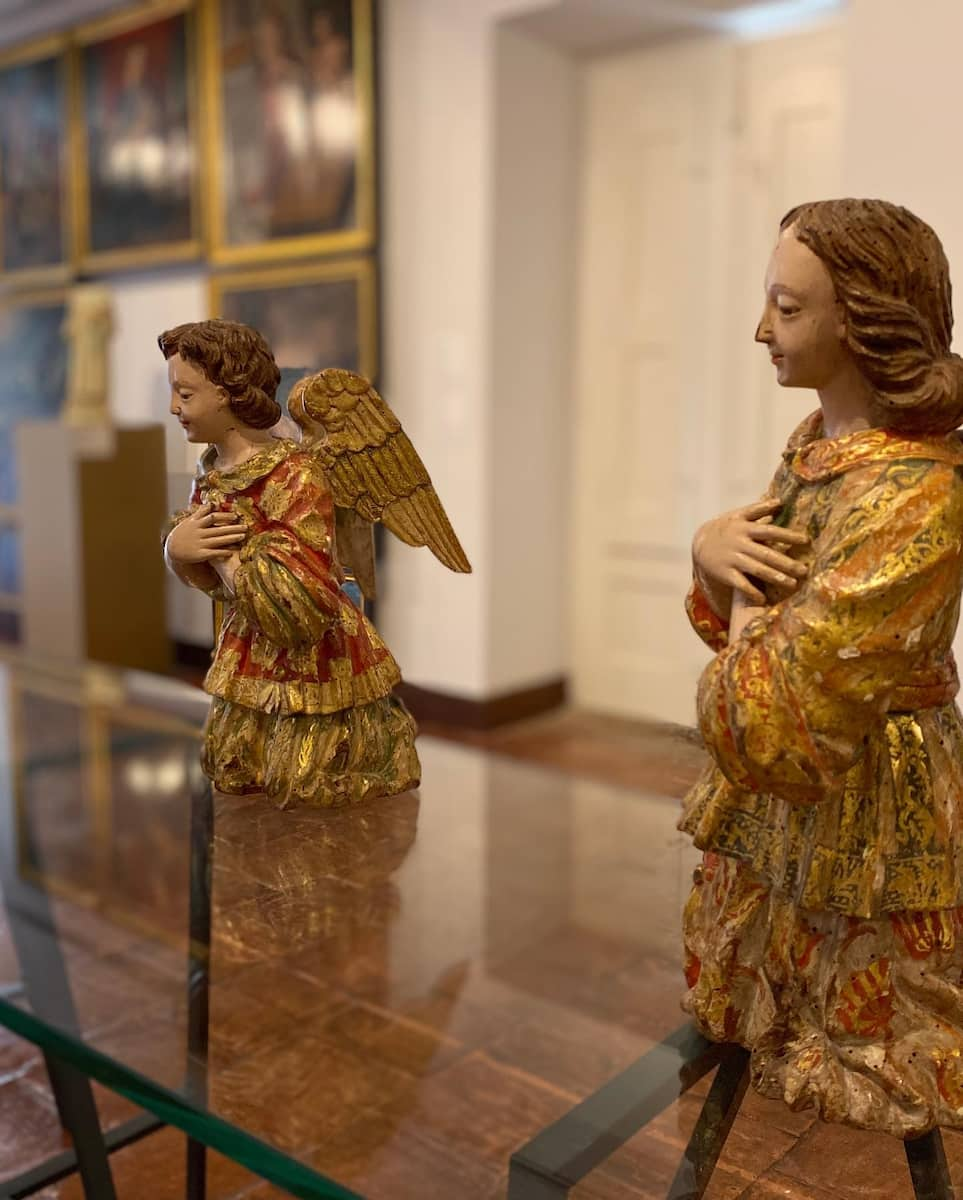
Value for money. Entry costs €3 for adults and €1.50 for students and seniors, making it an affordable cultural experience. I appreciated the free information sheets available in English, Portuguese, Spanish, and French, which provided context for the main exhibits without requiring an audio guide rental.
- Museum Highlights by Section:
- Roman artifacts (pottery, tools, coins)
- Moorish influence (ceramics, architectural elements)
- Medieval religious art (sculptures, paintings)
- Traditional costumes and textiles
- Contemporary local artists’ gallery
⭐ Best Activities
- Óbidos: Flexible Walking Tour in Medieval Town – Enjoy a customizable walking tour of Óbidos that adapts to your interests and pace. Explore the medieval streets, walls, and landmarks with a flexible itinerary designed to maximize your experience.
10. Casa do Arco da Cadeia
Historical significance. Casa do Arco da Cadeia served as Óbidos’ former town prison, dating back to the 16th century. Walking through its stone archway, I felt a tangible connection to the town’s past. The building’s name literally translates to “House of the Arch of the Jail,” referencing both its architectural feature and former function.
Architectural details. What caught my eye immediately was the impressive stone arch that spans the narrow street, creating a tunnel-like passage beneath the building. The structure combines elements of medieval and Renaissance architecture, with sturdy stone walls contrasting against delicate ironwork on the windows and balconies.
Current purpose. Today, this historical building houses a small gallery featuring rotating exhibitions of local artists. During my visit, I enjoyed a collection of contemporary paintings inspired by Óbidos’ medieval architecture. The transformation from prison to art space represents a beautiful evolution of purpose.
Photography spot. The arch creates one of the most photogenic frames in town. I captured stunning images looking through the stone passage toward the whitewashed buildings beyond. The play of light and shadow throughout the day makes this spot worth visiting at different times.
Local insight. A resident artist working in the gallery shared fascinating stories about the building’s history, including tales of notorious prisoners and escape attempts. She explained that the thick walls and small windows were designed not just for security but to keep the interior cool during hot Portuguese summers – a feature still appreciated today.
| Casa do Arco Features | Details |
|---|---|
| Construction Period | 16th century |
| Architectural Style | Medieval/Renaissance fusion |
| Former Use | Town prison |
| Current Use | Art gallery and cultural space |
| Entry Fee | Free (donations appreciated) |
Top Things to Do in Óbidos with Kids
1. Vila Natal (Christmas Village)
Winter wonderland. Vila Natal transforms Óbidos into a magical Christmas destination from early December through early January. I visited with my niece and nephew last December and was amazed by how the entire medieval town embraces the holiday spirit. The castle grounds become the centerpiece of festivities, filled with lights, decorations, and activities designed specifically for children.
Festive activities. The kids were thrilled by the ice skating rink (€5 for 30 minutes including skate rental) set up near the castle entrance. They also loved the Christmas train ride (€3) that circled the town walls, offering festive music and views of the decorated streets. The face painting booth (€4-8 depending on design) was another hit, with holiday-themed options.
Santa’s workshop. The highlight for my niece was visiting Santa’s house, where each child receives personal attention and a small gift (included in entry fee). The elves running the workshop engaged the children in a short storytelling session before meeting Santa, making the experience feel special rather than rushed.
Family entertainment. Throughout the day, we enjoyed various shows including puppet performances, Christmas carol concerts, and a surprisingly good acrobatic display with a holiday theme. The schedule changes daily, so I recommend checking the program upon arrival to plan your visit accordingly.
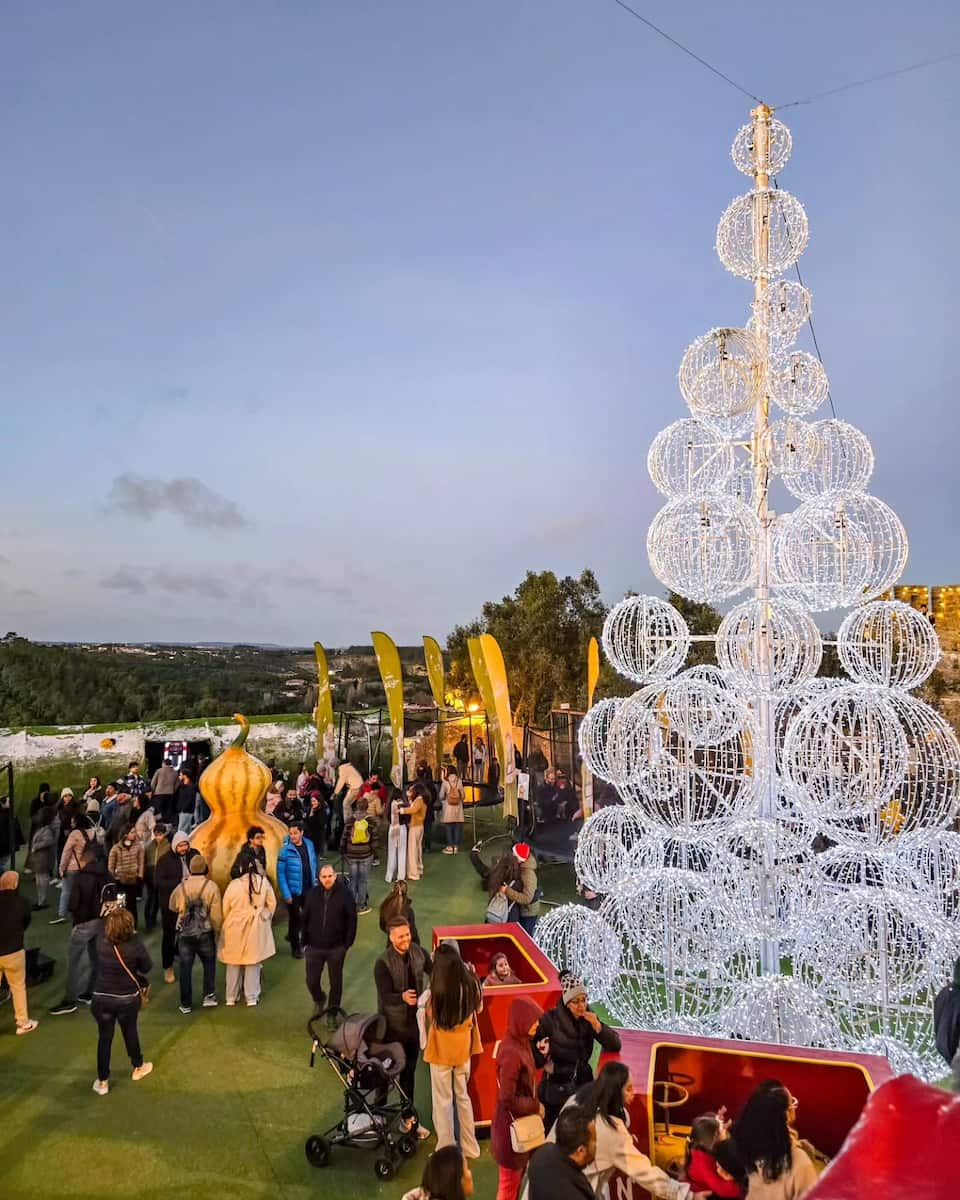


Practical information. Entry to Vila Natal costs €7 for adults and €5 for children (ages 3-11), with family packages available (€20 for 2 adults + 2 children). The village operates from 10 AM to 7 PM on weekdays and until 8 PM on weekends. I found weekday visits much less crowded, allowing the children more time at each activity without long queues.
| Vila Natal Activities | Price | Duration | Age Recommendation |
|---|---|---|---|
| Ice Skating | €5 | 30 minutes | 4+ years |
| Christmas Train | €3 | 15 minutes | All ages |
| Santa’s Workshop | Included in entry | 15-20 minutes | 2-10 years |
| Face Painting | €4-8 | 10 minutes | 3+ years |
| Christmas Shows | Included in entry | 20-30 minutes | All ages |
2. Medieval Festival Activities
Historical immersion. Óbidos’ Medieval Market (held annually in July) offers an incredible opportunity for children to experience history in an engaging way. My friend’s kids were completely captivated by the transformation of the town into a living medieval village, complete with costumed characters, traditional crafts, and period entertainment.
Interactive experiences. What makes this festival particularly child-friendly are the hands-on activities. Children can try archery (€3 for 5 arrows), learn simple medieval crafts like candle-making (€4), or participate in knight training sessions (€5) where they learn basic sword techniques using foam weapons. These activities create memorable experiences while sneaking in historical education.
Costume fun. One of the biggest hits with kids is the costume rental stands near the entrance. For €10-15 (depending on size and complexity), children can dress as knights, princesses, jesters, or peasants for the day. Watching the kids’ confidence grow as they role-played in their medieval attire was worth every euro.
Entertaining shows. Throughout the day, various performances cater specifically to younger audiences. The falconry demonstrations were particularly popular, with handlers explaining how these birds were used in medieval times. The jousting tournament, held twice daily in a field just outside the walls, had the children cheering enthusiastically for their chosen knights.
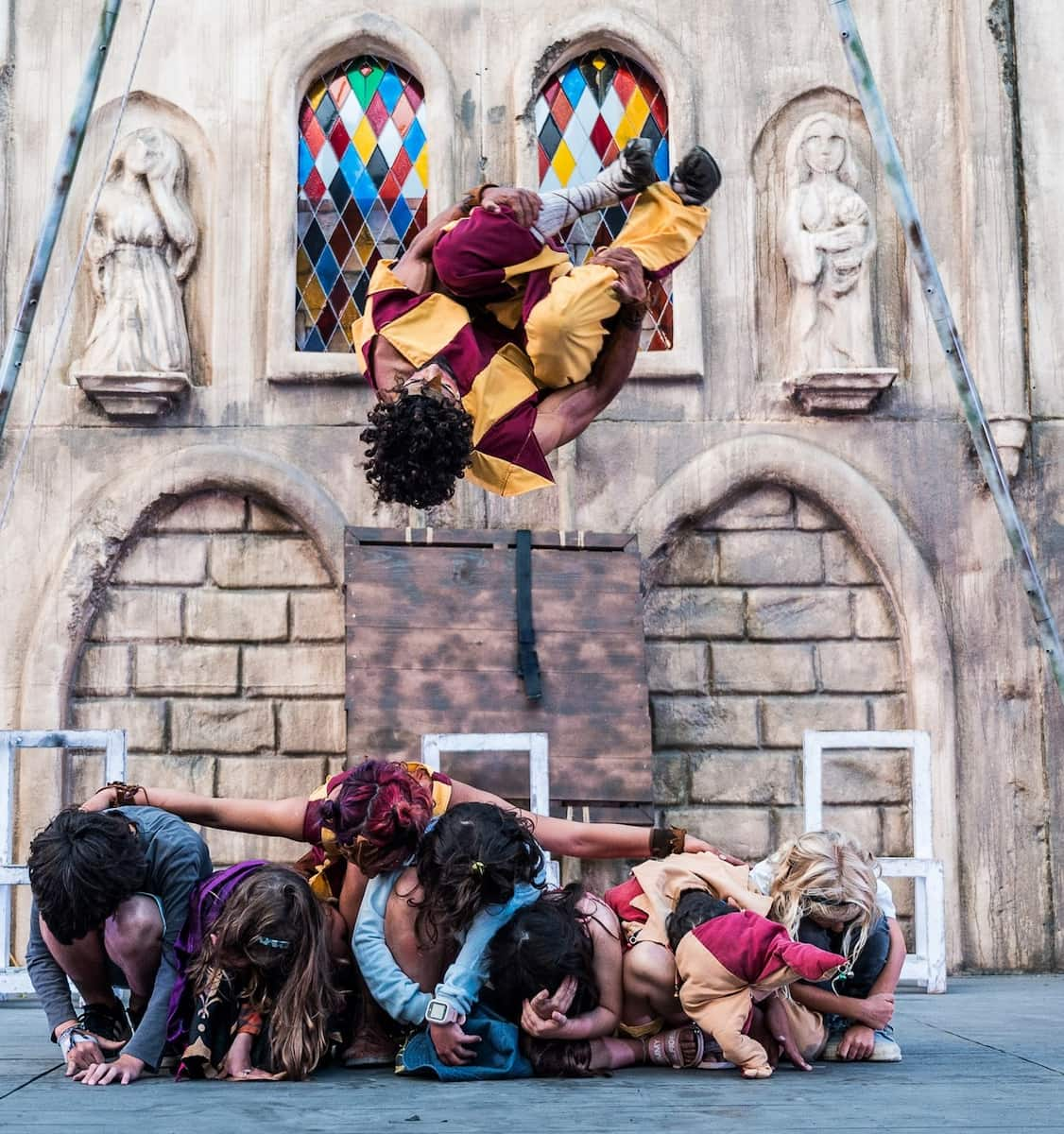
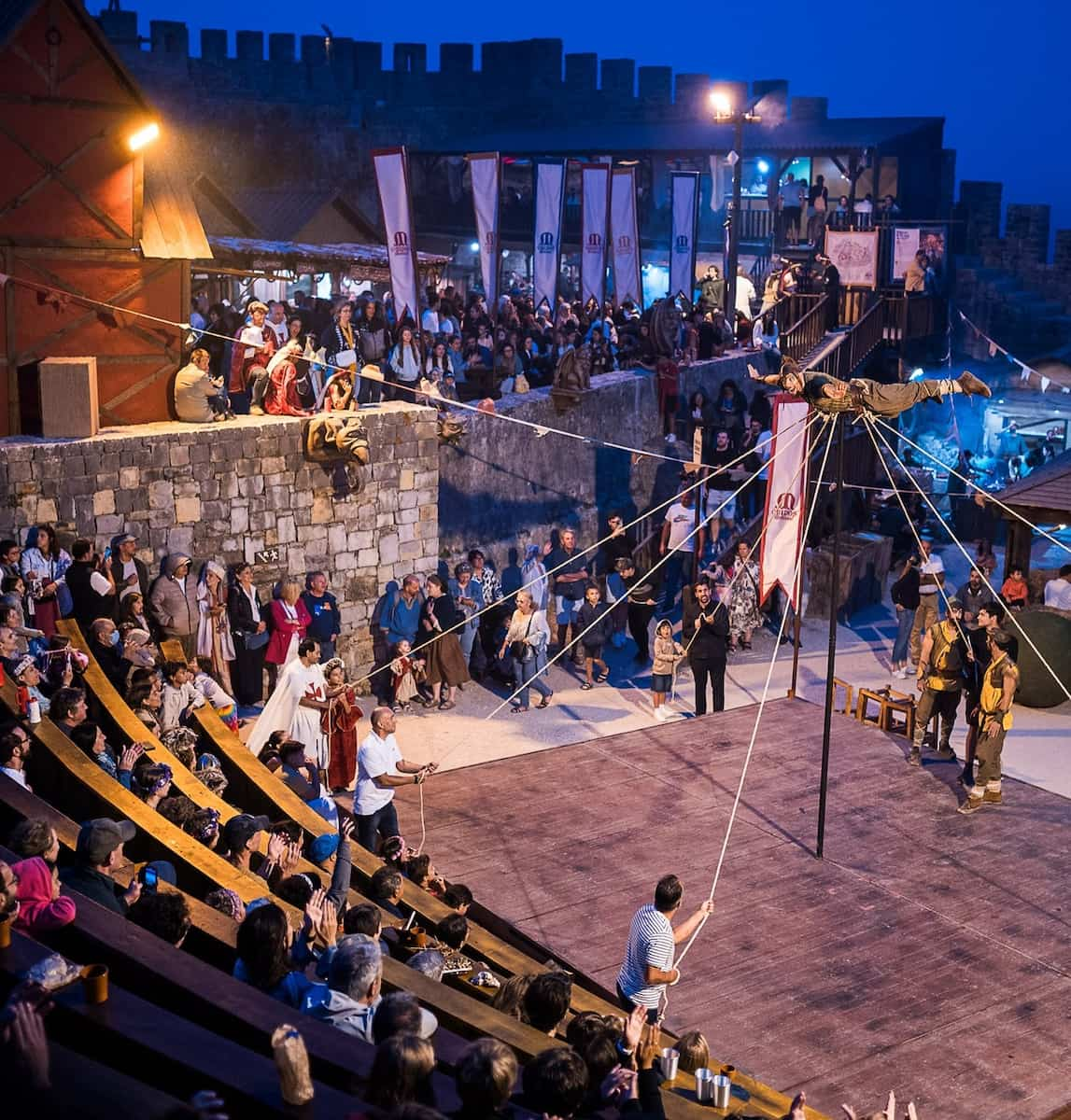

Family-friendly food. The festival features food stalls serving medieval-inspired dishes in child-friendly portions. My young companions particularly enjoyed eating roasted chicken legs (€4) and sweet honey cakes (€2) while sitting on hay bales. Many stalls offer simplified versions of medieval fare specifically designed to appeal to younger palates.
- Best Kid-Friendly Activities at the Medieval Festival:
- Costume rental and photo opportunities
- Mini knight training sessions
- Simplified archery for young archers
- Puppet shows with medieval themes
- Animal petting area with farm animals
- Craft workshops (candle making, simple weaving)
- Face painting with medieval designs
- Storytelling sessions about knights and dragons
3. Lagoa de Óbidos (Lagoon Activities)
Natural playground. Just a 10-minute drive from Óbidos’ medieval center lies the stunning Lagoa de Óbidos, Portugal’s largest coastal lagoon. This natural wonder offers a perfect contrast to the historical sightseeing in town, giving kids space to run, play, and explore nature. My sister’s children spent hours here collecting shells and spotting birds after feeling “castled out.”
Water adventures. The shallow, calm waters make this lagoon ideal for families with children of all ages. Kayak rentals cost €10 per hour for single kayaks and €15 for doubles, with child-sized life jackets available. The rental shops provide simple maps showing kid-friendly routes that avoid stronger currents while maximizing wildlife spotting opportunities.
Beach time. Several small beaches around the lagoon offer safe swimming areas with gentle slopes into the water. Praia do Bom Sucesso was my favorite, with clean sand, bathroom facilities, and a small café selling ice cream (€1.50-2.50) and snacks. The water temperature is several degrees warmer than the nearby Atlantic beaches, making it more comfortable for children.
Wildlife watching. The lagoon is home to numerous bird species, making it an excellent spot for introducing children to birdwatching. We rented binoculars (€3 for two hours) and picked up a simple identification chart (€2) from the environmental center. The kids were thrilled to spot flamingos, herons, and various ducks using their “special spy glasses.”
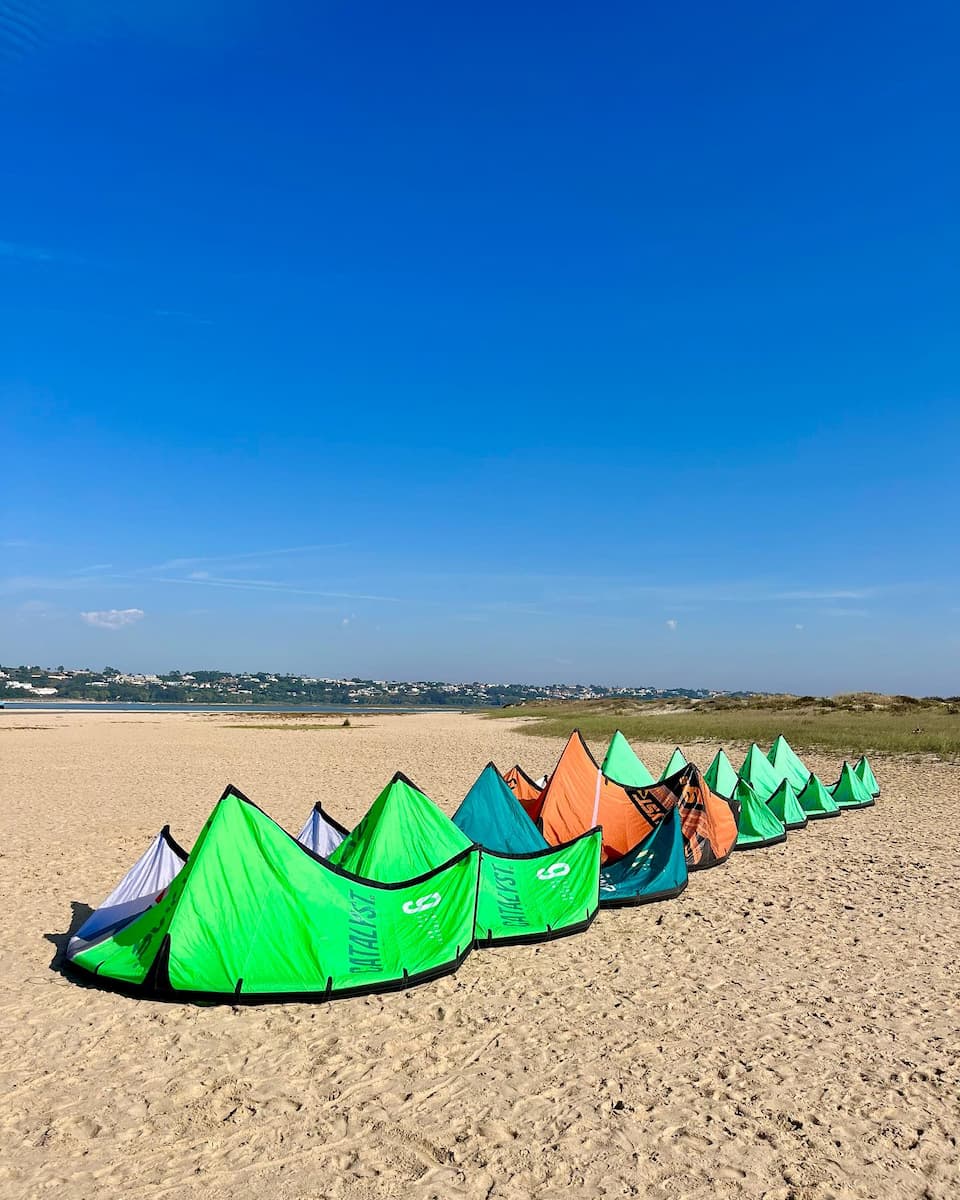
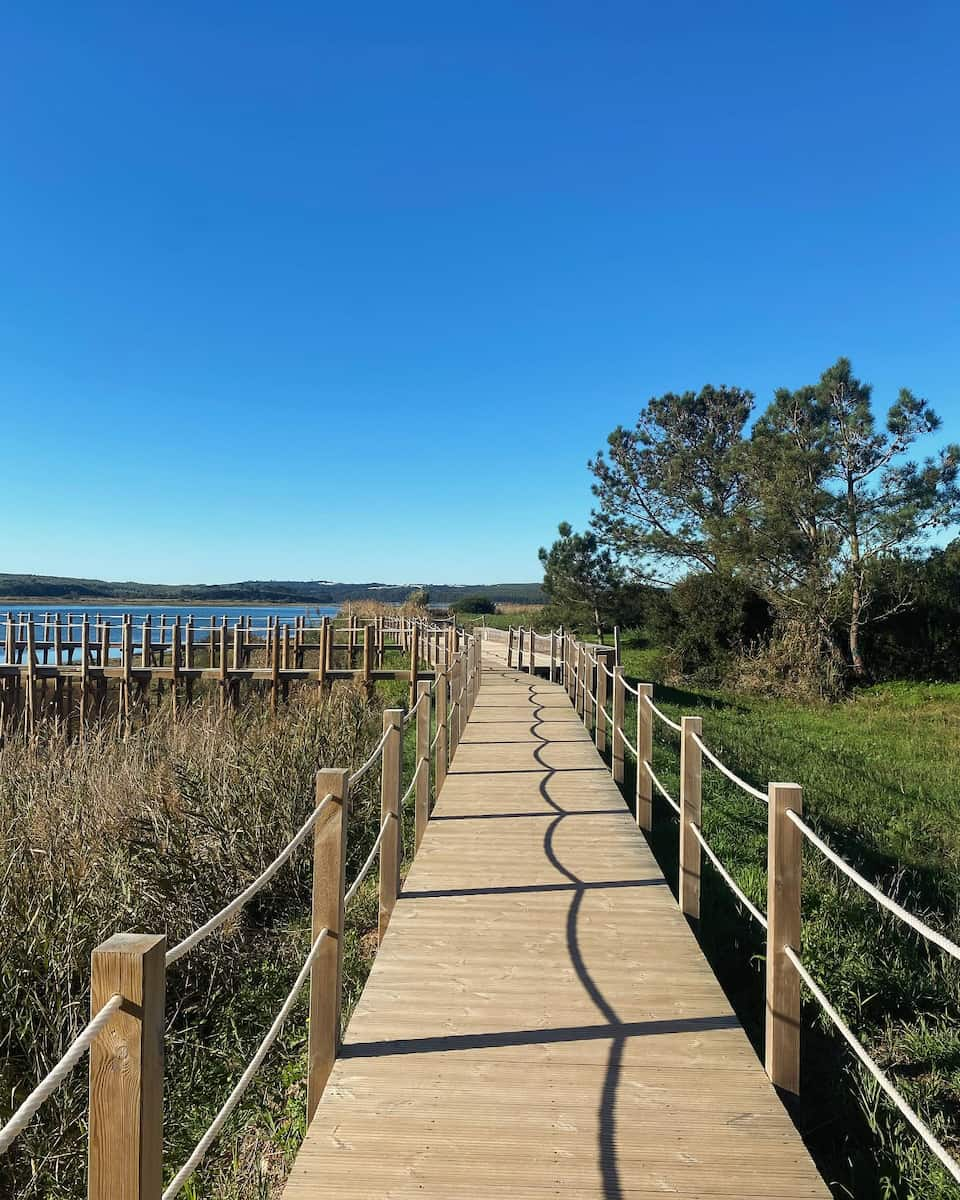
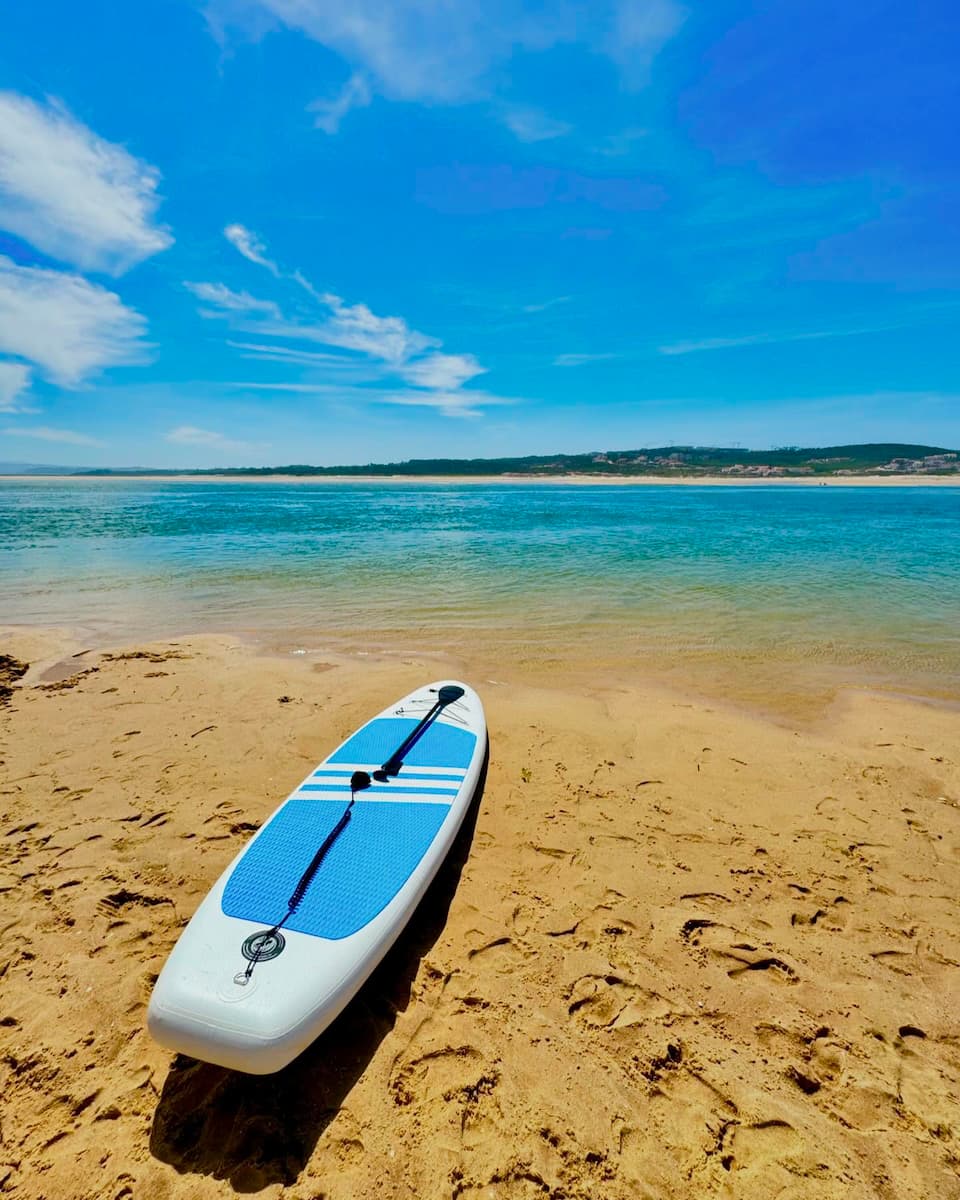

Cycling adventure. The Ecovia da Lagoa offers a flat, safe cycling path around portions of the lagoon. Bike rentals are available for €5 per hour for children’s bikes and €8 for adults, with baby seats and helmets included. The path is well-maintained and separate from road traffic, making it suitable even for children just learning to ride.
| Lagoon Activity | Price | Duration | Best Time |
|---|---|---|---|
| Kayak Rental | €10-15/hour | 1-2 hours | Morning (calmer waters) |
| Beach Time | Free | Half-day | Afternoon |
| Birdwatching | €3 binocular rental | 1-2 hours | Early morning/sunset |
| Cycling | €5-8/hour | 1-3 hours | Avoid midday heat |
| Nature Center Visit | €2 adults, free for children | 45 minutes | Anytime |
Free Things to Do in Obidos
1. Rua Direita
Shopping street. Rua Direita forms the main artery through Óbidos, running from the main gate (Porta da Vila) to the castle. Despite the name meaning “Straight Street,” I found it charmingly winding and narrow, lined with whitewashed buildings adorned with vibrant bougainvillea and traditional blue trim around the windows and doors.
Window shopping. While many shops sell souvenirs, I enjoyed browsing without spending a euro. The street features numerous artisan workshops where you can watch craftspeople creating traditional Portuguese ceramics, embroidery, and leather goods. Several shops offer free samples of local products like honey, olive oil, and the famous ginja liqueur.
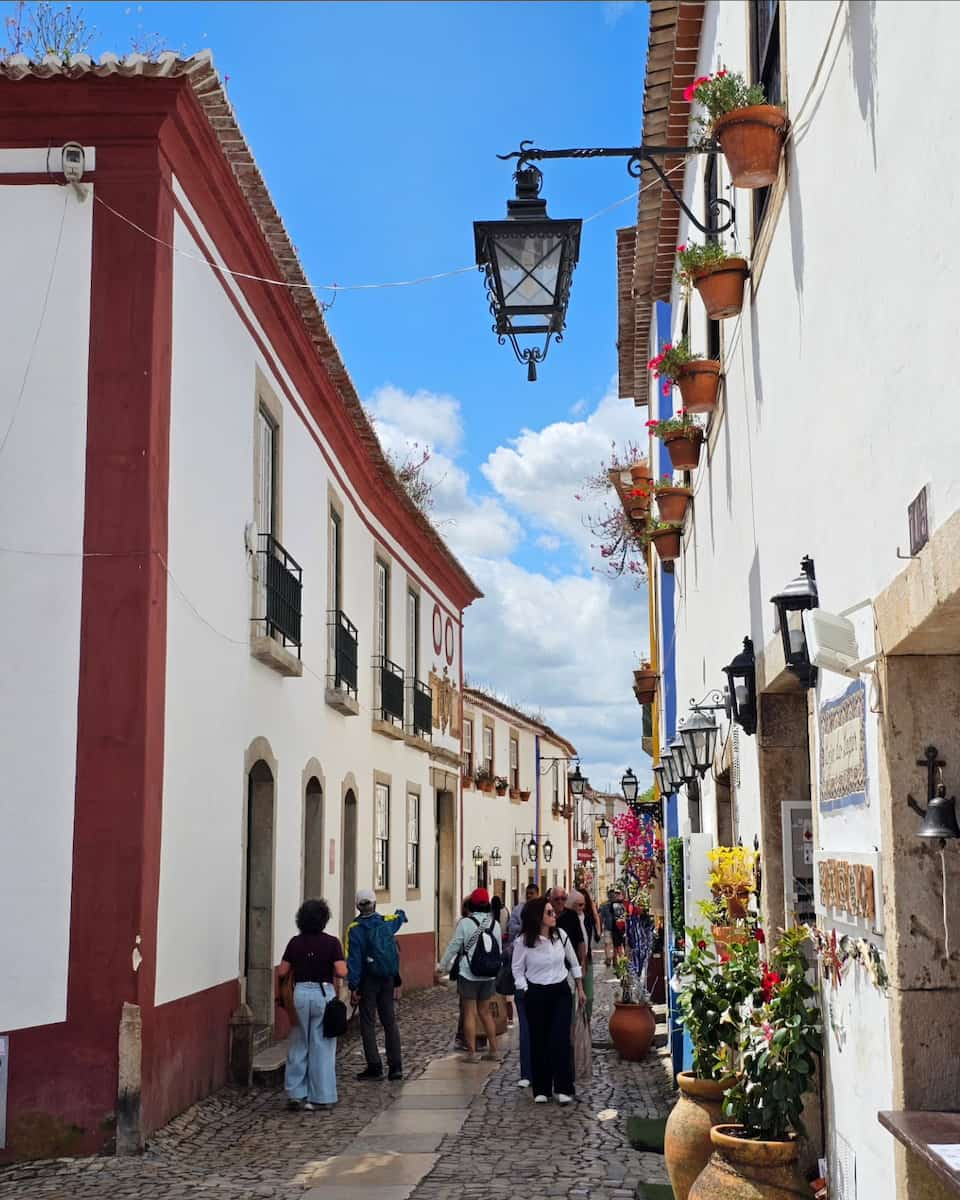
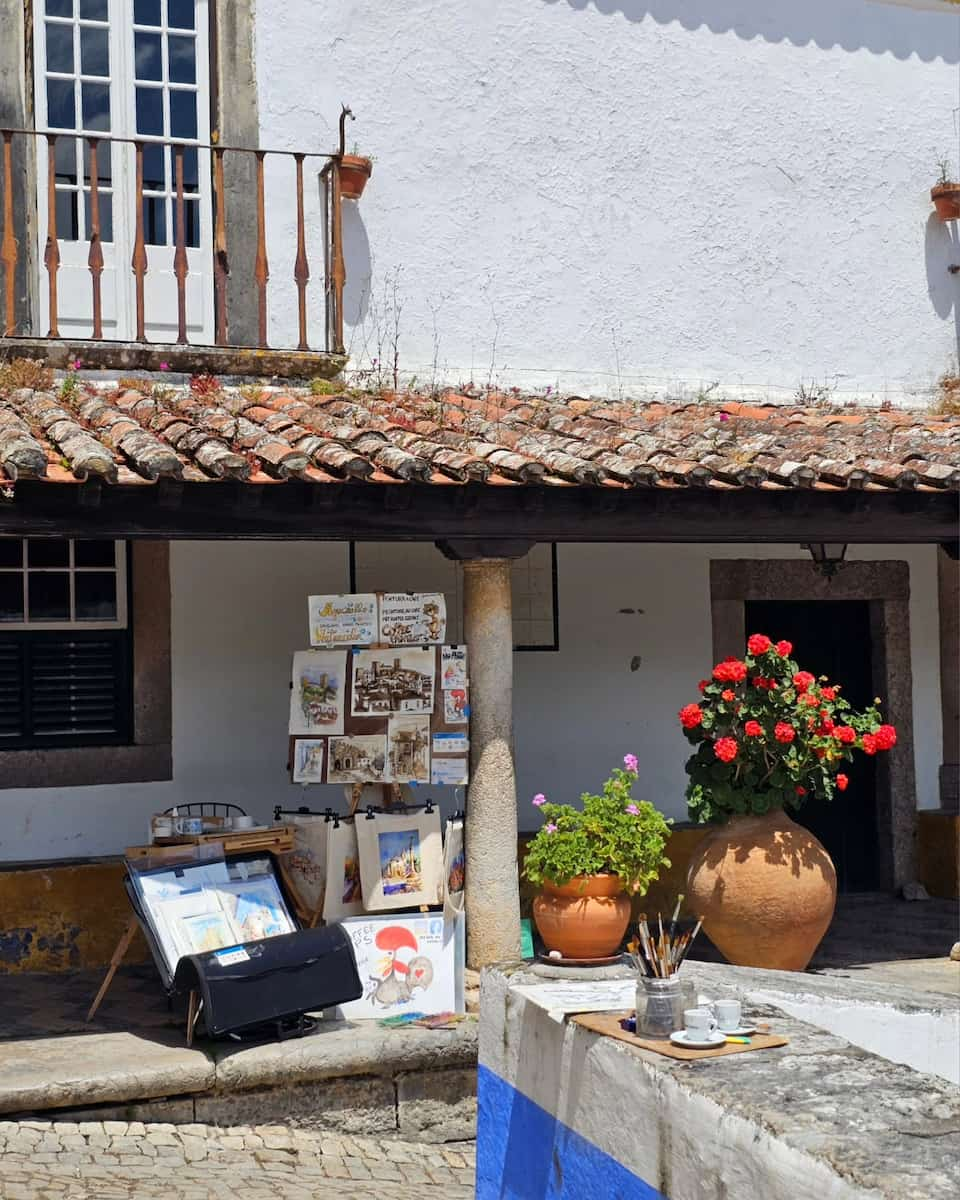
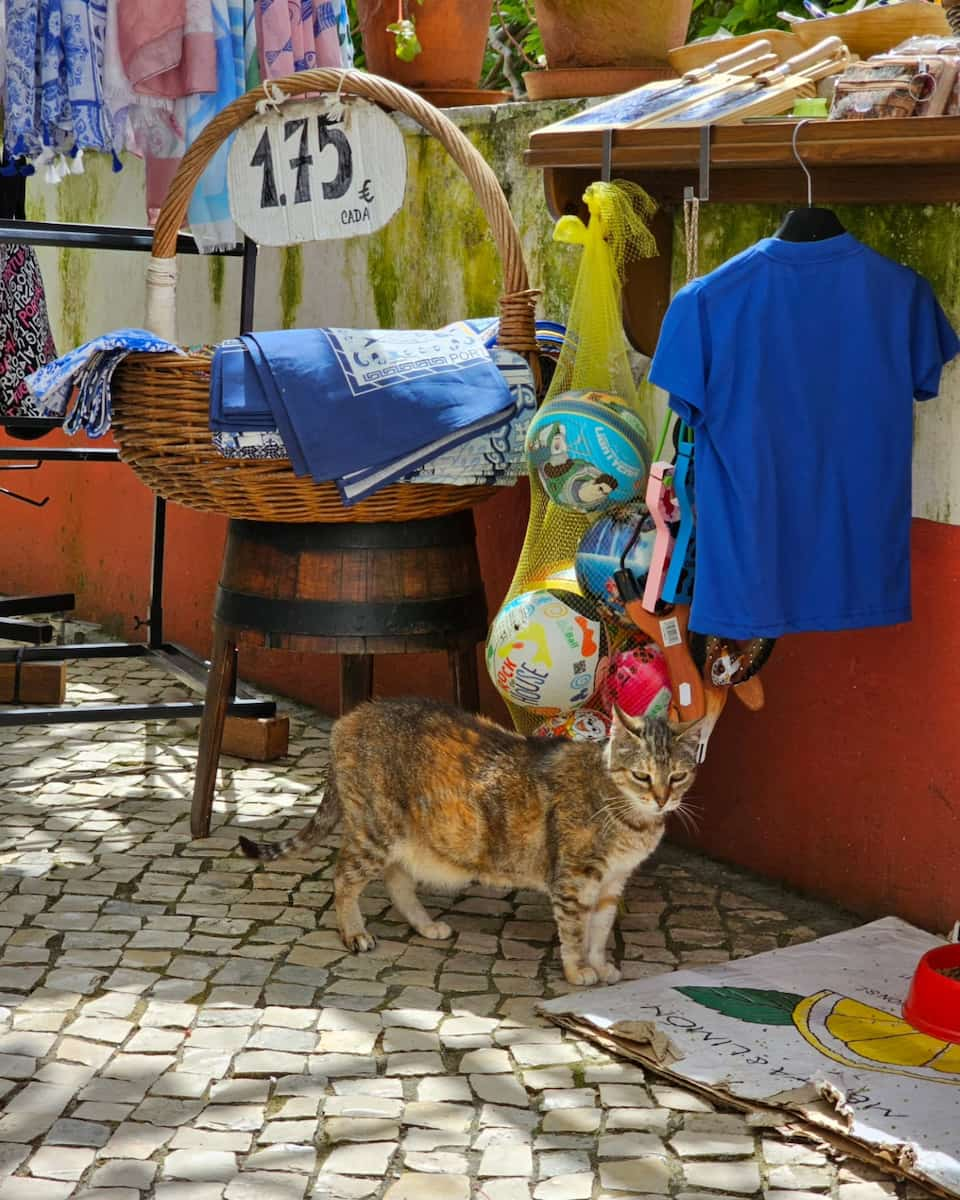
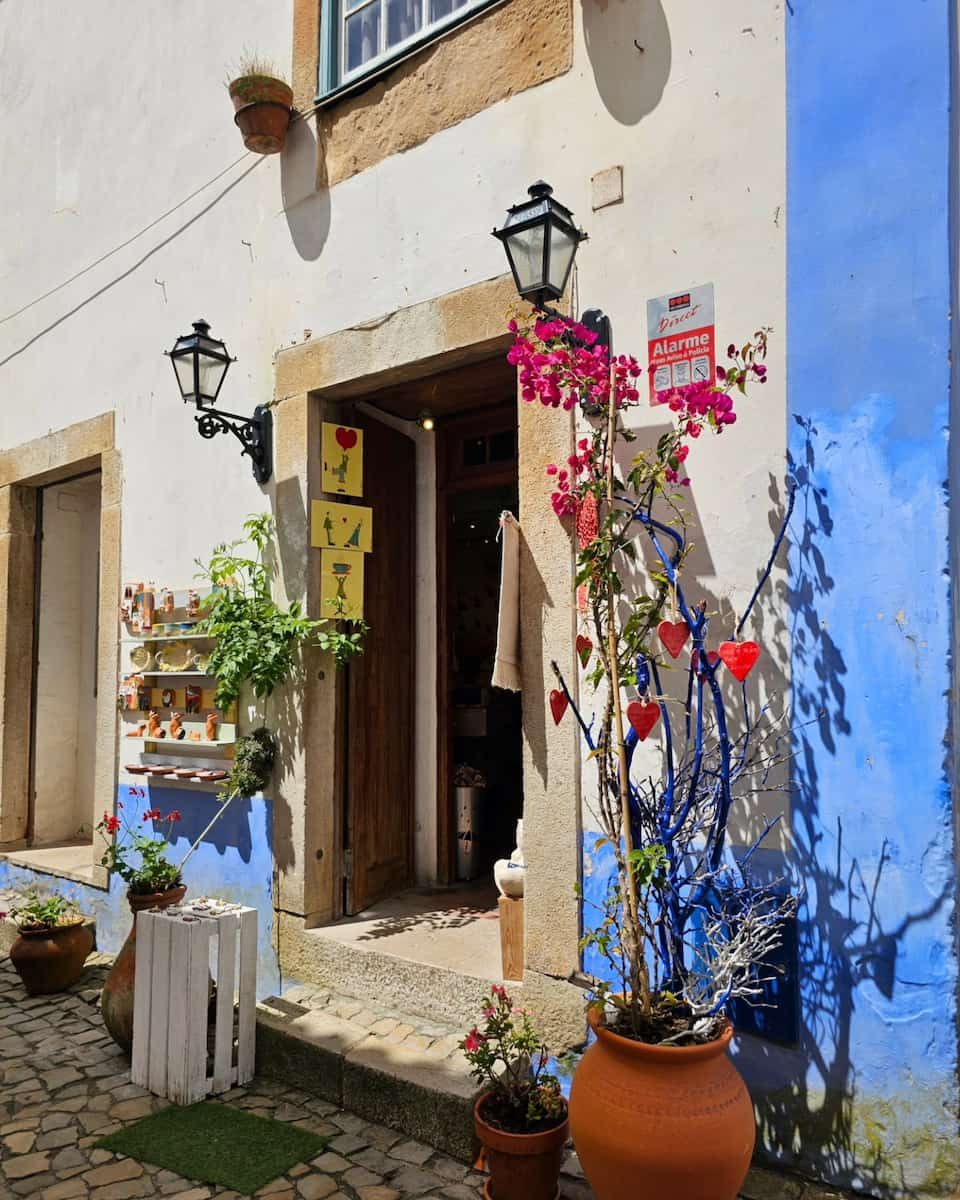
Architectural details. Walking slowly along Rua Direita, I discovered fascinating architectural elements that tell the town’s story. I spotted ancient stone doorways, decorative tiles, and wrought-iron balconies that have witnessed centuries of history. Many buildings feature carved stone emblems indicating their former purposes or the status of their original owners.
Photography paradise. This picturesque street offers countless photo opportunities that won’t cost you anything. I particularly loved capturing the contrast between whitewashed walls and colorful flowers, the play of light and shadow on the cobblestones, and the occasional glimpses of the castle through narrow side alleys.
Local interaction. Some of my most memorable moments came from conversations with shopkeepers and residents along Rua Direita. An elderly woman tending to her flowers shared stories about growing up in Óbidos, while a local artist explained traditional techniques used in his paintings. These authentic interactions added depth to my understanding of the town.
- Best Free Experiences on Rua Direita:
- Photographing the flower-draped buildings
- Watching artisans at work in open workshops
- Sampling local products (small tastes often offered freely)
- Discovering hidden architectural details
- Chatting with local residents
- Listening to occasional street musicians
- Exploring the small side alleys branching off the main street
2. Visit Churches
Architectural variety. Óbidos houses several beautiful churches that can be visited free of charge. Beyond the main Igreja de Santa Maria (which charges a small fee), I discovered that Igreja de São Pedro, Igreja do Senhor Jesus da Pedra, and Capela de São Martinho all welcome visitors without an entrance fee. Each showcases different architectural styles, from Gothic to Baroque.
Peaceful reflection. These sacred spaces offered welcome moments of tranquility during my exploration of Óbidos. I particularly appreciated the cool, quiet interior of Igreja do Senhor Jesus da Pedra during the afternoon heat. The hexagonal design of this church makes it architecturally unique in Portugal and worth seeking out.
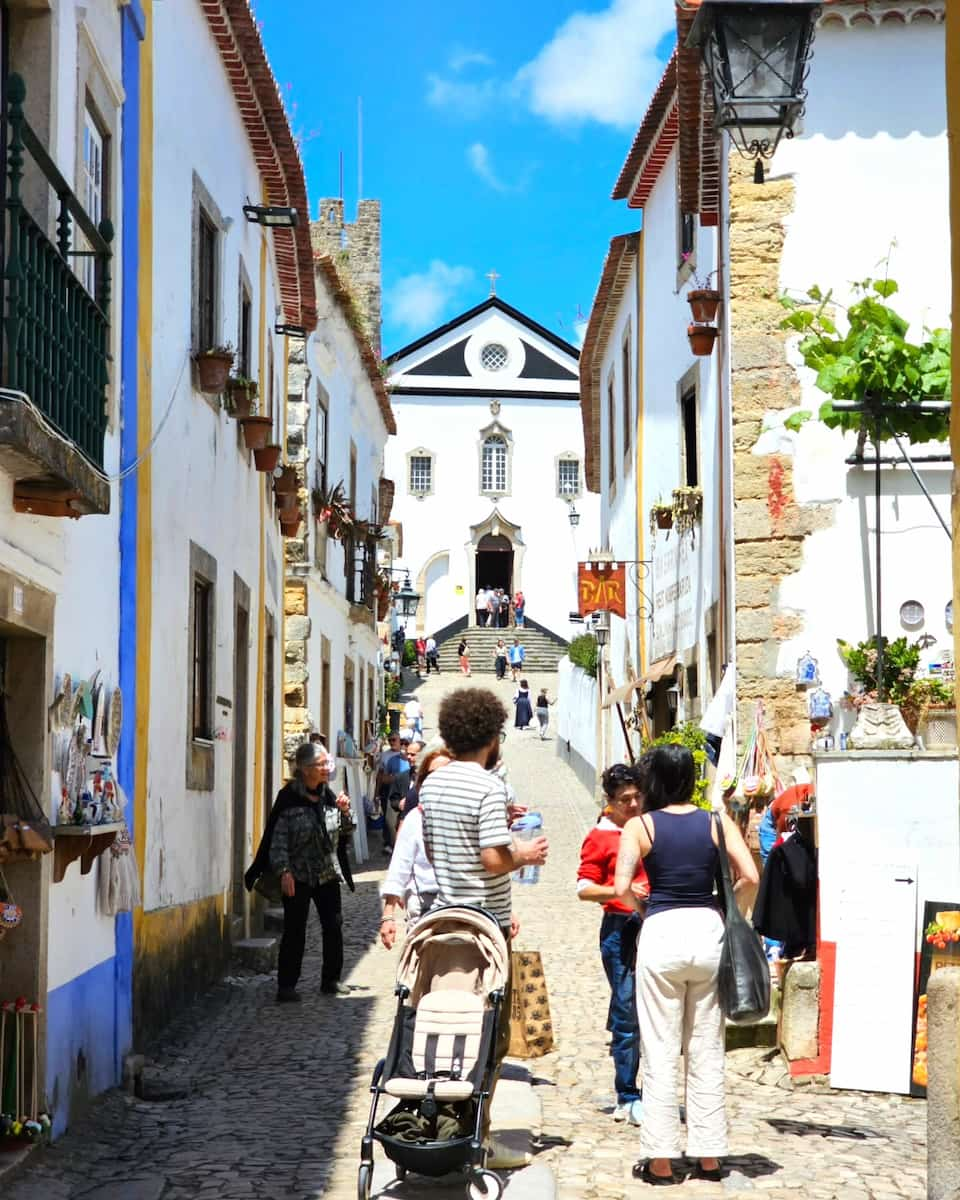


Cultural insight. Visiting these churches provided deeper understanding of Portuguese religious traditions and history. I noticed many local residents stopping for brief prayers throughout the day, demonstrating how these spaces remain active parts of community life rather than mere tourist attractions.
Photography opportunities. While being respectful during services, I captured beautiful images of architectural details, stained glass windows, and ornate altars. The lighting inside these churches creates dramatic effects, especially in the late afternoon when sunlight streams through the windows at low angles.
| Church | Architectural Style | Special Features | Opening Hours |
|---|---|---|---|
| Igreja de São Pedro | Gothic/Manueline | Azulejo panels, bell tower | 9:00-12:30, 14:00-17:00 |
| Igreja do Senhor Jesus da Pedra | Baroque | Unique hexagonal design | 10:00-13:00, 15:00-18:00 |
| Capela de São Martinho | Romanesque/Gothic | Wooden altarpiece | 10:00-16:00 (closed Mondays) |
| Capela da Ordem Terceira | Rococo | Gilded woodwork | 9:30-12:00, 14:30-17:00 |
3. Enjoy Lookout Points
Panoramic vistas. Óbidos is blessed with several spectacular viewpoints that cost nothing to enjoy. I discovered that the best views aren’t always from the obvious spots on the walls. Some of my favorite panoramas came from lesser-known corners of town, like the small terrace behind Igreja de Santa Maria and the quiet square near Porta do Vale.
Photography heaven. Each lookout point offers unique photographic opportunities throughout the day. I found the morning light perfect for capturing the eastern side of town from the western walls, while sunset created a golden glow over the terracotta rooftops when viewed from the castle area. The changing light transformed the same views dramatically at different times.
Peaceful moments. Away from the main tourist flow, these viewpoints provided tranquil spaces for reflection. I spent a peaceful half-hour at a small bench near Porta da Traição, enjoying the sweeping views of the countryside while listening to church bells echoing across the valley. These quiet moments became some of my most cherished memories of Óbidos.
Local perspective. At several lookout points, I encountered residents who pointed out features I might have missed – a distant monastery, the route of the ancient aqueduct, or the best spot to watch flamingos at the lagoon. These impromptu conversations added depth to my appreciation of the landscape.
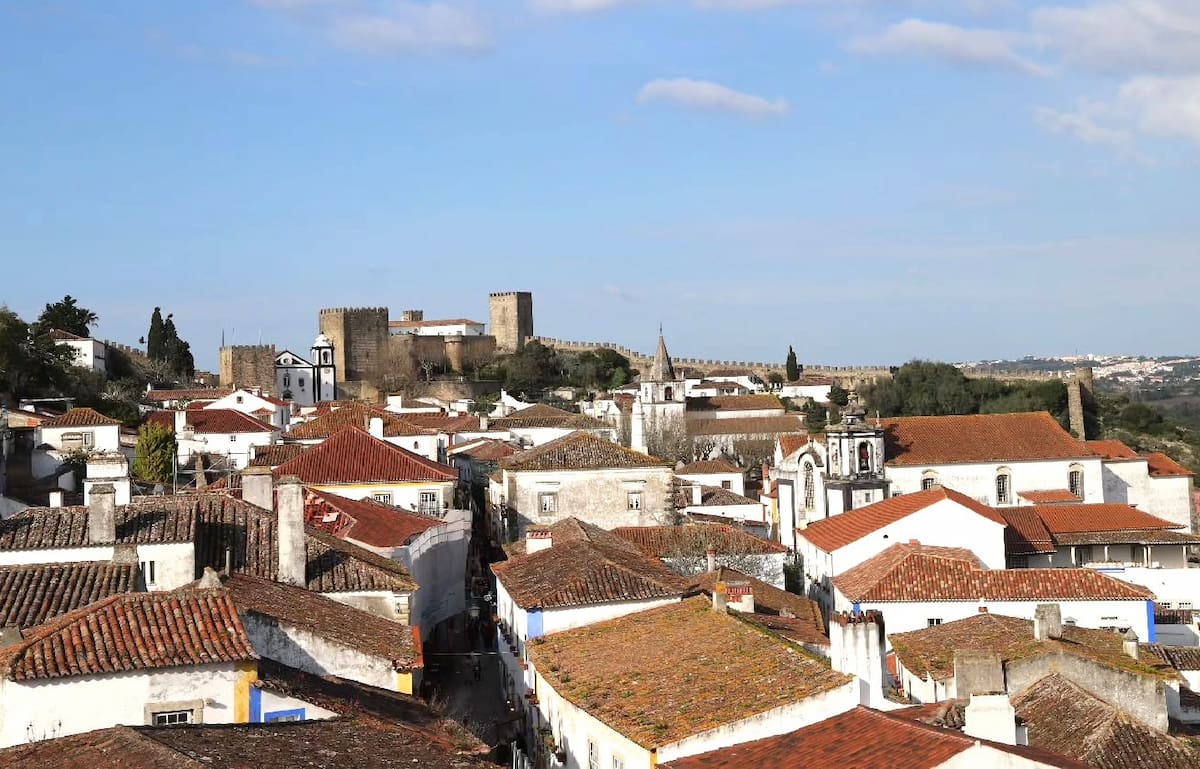
Seasonal changes. The views from these lookout points transform with the seasons. During my spring visit, the surrounding countryside was carpeted with wildflowers, while friends who visited in autumn described the rich golden hues of vineyards and olive groves. Even in winter, the views remain spectacular, especially on clear days when you can see all the way to the Atlantic.
- Best Free Lookout Points in Óbidos:
- Northeast corner of the walls (views toward the aqueduct)
- Small square near Porta do Vale (countryside views)
- Castle grounds entrance area (western views)
- Porta da Traição area (southern panorama)
- Northern walls (views of the lagoon on clear days)
- Miradouro near the Municipal Library (eastern vistas)
Seasonal Activities in Óbidos
Christmas in Óbidos (Vila Natal, December)
Festive transformation. From early December through January 6, Óbidos transforms into a Christmas wonderland that captured my heart completely. The medieval setting provides a perfect backdrop for holiday celebrations, with thousands of twinkling lights draped across ancient stone walls and along cobblestone streets.
Vila Natal highlights. The Christmas Village centers around the castle grounds, featuring an ice skating rink, Santa’s house, and numerous holiday-themed activities. I was impressed by how the medieval architecture blends with festive decorations – imagine Christmas trees set against 12th-century stonework and carols echoing off ancient walls.
Seasonal treats. The aroma of seasonal foods fills the air throughout December. I sampled traditional Portuguese Christmas treats like Bolo Rei (King Cake) for €2.50 a slice and roasted chestnuts (€3 for a small bag) from street vendors. The hot chocolate with a splash of ginja liqueur (€3.50) became my favorite evening warmer.
Shopping opportunities. The Christmas market features artisans selling handcrafted gifts not found in regular shops. I purchased beautiful hand-painted ceramic ornaments (€5-15) and traditional embroidered linens (€10-30) that make meaningful souvenirs. The market stalls are open daily from 10 AM to 7 PM throughout the season.
| Christmas Event | Dates | Cost | Highlights |
|---|---|---|---|
| Vila Natal | Dec 1-Jan 6 | €7 adults, €5 children | Ice skating, Santa’s house, shows |
| Christmas Market | Dec 1-Dec 24 | Free entry | Artisan crafts, food stalls |
| Concert Series | Weekends in December | Free-€5 | Traditional and classical music |
| Nativity Scene Exhibition | Dec 1-Jan 6 | Free | Artistic nativity displays throughout town |
| New Year’s Celebration | Dec 31 | Free | Midnight fireworks, music |
Spring Blooms in Royal Parks
Floral explosion. Visiting Óbidos in spring (March-May) rewards you with an extraordinary display of colors as flowers burst into bloom throughout the town and surrounding areas. I was mesmerized by the contrast between ancient stone walls and the vibrant flowers that seem to grow from every available space.
Royal Gardens. The gardens near the castle, originally designed for Portuguese royalty, showcase carefully maintained flowerbeds featuring traditional Portuguese plant varieties. In April, I found these gardens at their peak, with formal arrangements of tulips, roses, and native Portuguese flowers creating a kaleidoscope of colors.
Wildflower walks. Just outside the town walls, walking paths wind through fields covered in wildflowers during spring. I followed a marked trail that circles the town (approximately 3km), offering both beautiful floral displays and spectacular views of Óbidos from different angles. The path is relatively flat and suitable for most fitness levels.
Photography opportunities. Spring provides the most photogenic season in Óbidos, with perfect lighting and colors. I captured stunning images of flowers framing medieval doorways, bougainvillea cascading over ancient walls, and window boxes overflowing with geraniums. Early morning light created magical effects as it illuminated the dewy blossoms.
Seasonal events. The town celebrates spring with several flower-related events, including a small flower market in the main square (weekends in April) where local growers sell plants and cut flowers. The Spring Equinox celebration (March 20-21) features floral decorations throughout town and special menus at restaurants highlighting edible flowers and spring produce.
| Spring Bloom Locations | Best Viewing Time | Special Features |
|---|---|---|
| Castle Gardens | April-May | Formal arrangements, royal history |
| Town Walls | March-June | Wildflowers against stone backdrop |
| Rua Direita | April-June | Window boxes and climbing vines |
| Countryside Paths | March-May | Natural wildflower meadows |
| Church Courtyards | April-May | Peaceful gardens with religious statuary |
Autumn Foliage Walks and Wine Harvest
Golden landscapes. Autumn (September-November) transforms Óbidos and its surroundings into a tapestry of warm colors. I discovered that this less-visited season offers unique charm as the vineyards, olive groves, and deciduous trees change to gold, amber, and russet hues. The crowds thin considerably, allowing for a more peaceful experience of the medieval town.
Vineyard experiences. The wine harvest (typically September) brings special activities to the vineyards surrounding Óbidos. I visited Quinta do Sanguinhal, just 15 minutes from town, where visitors can observe the harvest and participate in grape stomping on weekends (€15 including wine tasting). The vineyard’s trees and surrounding landscape showcase beautiful autumn colors.
Walking routes. Several marked trails around Óbidos are particularly beautiful in autumn. I followed the “Rota dos Vinhedos” (Vineyard Route), a 7km circular path that winds through vineyards, olive groves, and woodland areas. The tourist office provides free maps of this and other seasonal walking routes.
Seasonal cuisine. Autumn brings a shift in local menus, featuring hearty dishes perfect for cooler weather. I enjoyed roasted chestnuts sold by street vendors (€3 for a small bag) and seasonal mushroom dishes in local restaurants. The new wine (vinho novo) becomes available in late September, celebrated with special tasting events in local taverns.

Photography conditions. The autumn light creates perfect conditions for photography, with golden hour lasting longer and creating warm tones across the landscape. I found the contrast between the autumn colors and Óbidos’ whitewashed buildings particularly striking. Morning mist often adds a mystical quality to landscape photos taken from the town walls.
| Autumn Activity | Best Period | Location | Cost |
|---|---|---|---|
| Wine Harvest Events | Early-mid September | Local vineyards | €10-20 |
| Vineyard Route Walk | September-November | Surrounding countryside | Free |
| Olive Harvest Observation | Late October-November | Local olive groves | Free-€5 |
| Mushroom Foraging Tours | October-November | Nearby forests | €25 |
| Autumn Food Festival | Second weekend of October | Town center | Free entry, pay for food |
Day Trip from Óbidos
1. Peniche and Berlengas Islands
Coastal charm. Just 25 kilometers west of Óbidos lies Peniche, a working fishing town with a dramatically different atmosphere from medieval Óbidos. I reached it easily by local bus (€3.50 one-way, 30 minutes) and immediately felt the refreshing sea breeze and more relaxed coastal vibe. The town’s fortress, built in the 16th-17th centuries, offers spectacular ocean views.
Berlengas adventure. The highlight of visiting Peniche is taking a boat trip to the Berlengas Islands, a UNESCO Biosphere Reserve. I booked my round-trip ferry ticket (€22) at the harbor office and departed on the 10:30 AM boat. The crossing takes about 45 minutes and can be rough – I recommend taking motion sickness medication if you’re sensitive.
Island exploration. Once on Berlenga Grande (the main island), I hiked well-marked trails that revealed stunning viewpoints of dramatic cliffs and crystal-clear waters. The most popular route circles the island in about 2 hours. The contrast between the pink-hued granite cliffs and the turquoise water created some of the most beautiful natural scenery I’ve seen in Portugal.
Fort São João Baptista. This 17th-century fortress built on a small islet connected to Berlenga Grande by a stone bridge was a highlight of my visit. Entry costs €3, and exploring its walls and rooms provides fascinating insights into the island’s strategic importance throughout history. The views from the fortress walls are simply spectacular.
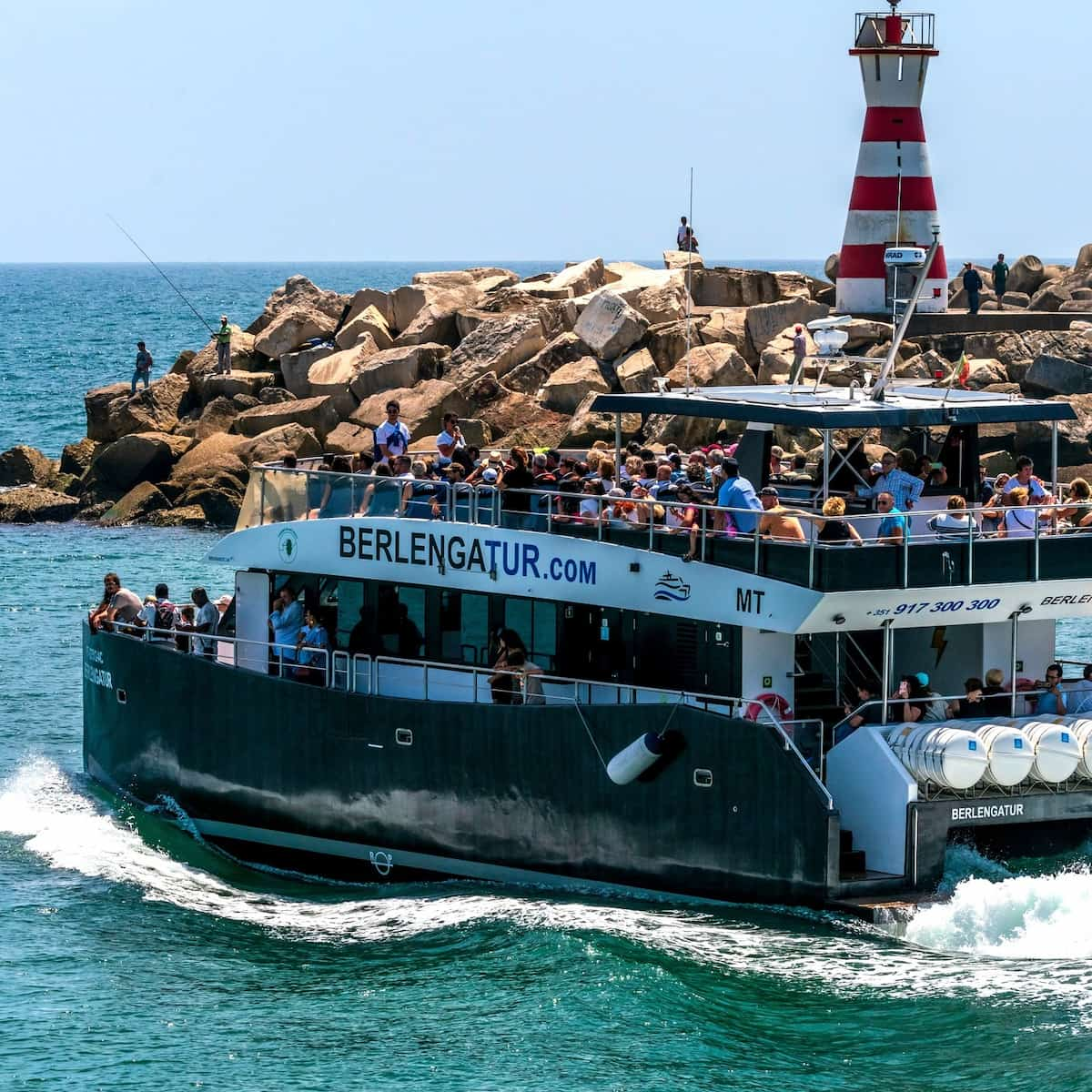
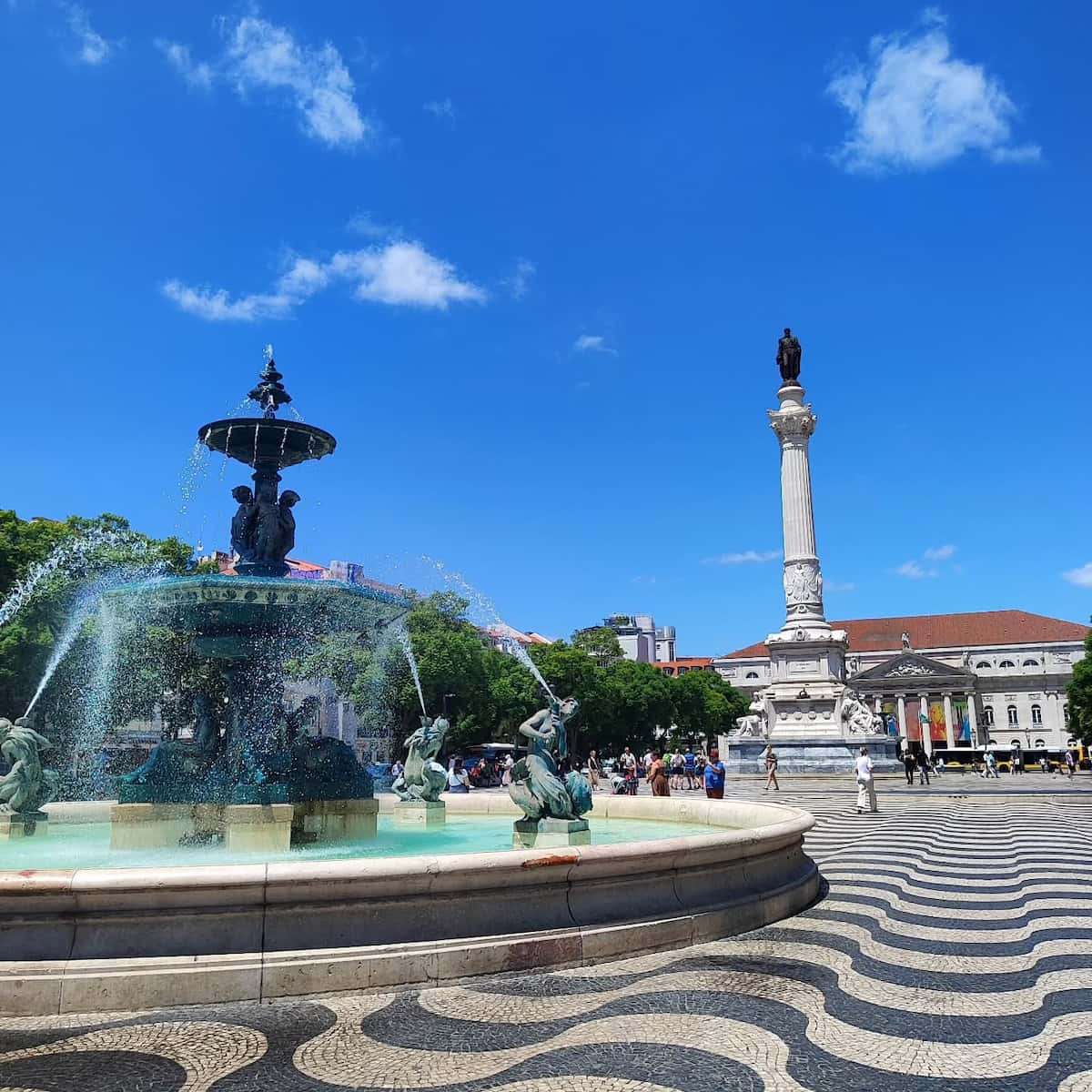

Wildlife watching. The islands are home to numerous seabird species, including the rare Cory’s shearwater. I spotted several different birds during my visit, and the clear waters around the island revealed colorful fish even without snorkeling equipment. For those interested in marine life, snorkeling tours are available (€15) from operators on the island.
| Berlengas Trip Details | Information |
|---|---|
| Ferry Schedule | May-September, daily departures at 10:00, 11:30, 14:00 |
| Round-trip Cost | €22 adults, €15 children (4-10) |
| Time Needed | Full day (5-7 hours on island) |
| Facilities | Basic restaurant, toilets, limited fresh water |
| Best For | Nature lovers, hikers, photography enthusiasts |
⭐ Best Activities
- Peniche: Berlenga Island Trip and Cave Tour – Take a boat trip from Peniche to the stunning Berlenga Island, where you’ll explore sea caves, enjoy swimming opportunities, and discover the unique ecosystem of this UNESCO Biosphere Reserve near Óbidos.
2. Nazaré (Big Waves and Beach)
Surf spectacle. Just 30 kilometers north of Óbidos, Nazaré offers a completely different coastal experience. I took a local bus (€4.50 one-way, 40 minutes) to witness the town famous for the world’s biggest surfable waves. Even during my summer visit when the truly massive waves weren’t present, the power of the ocean at Praia do Norte was impressive.
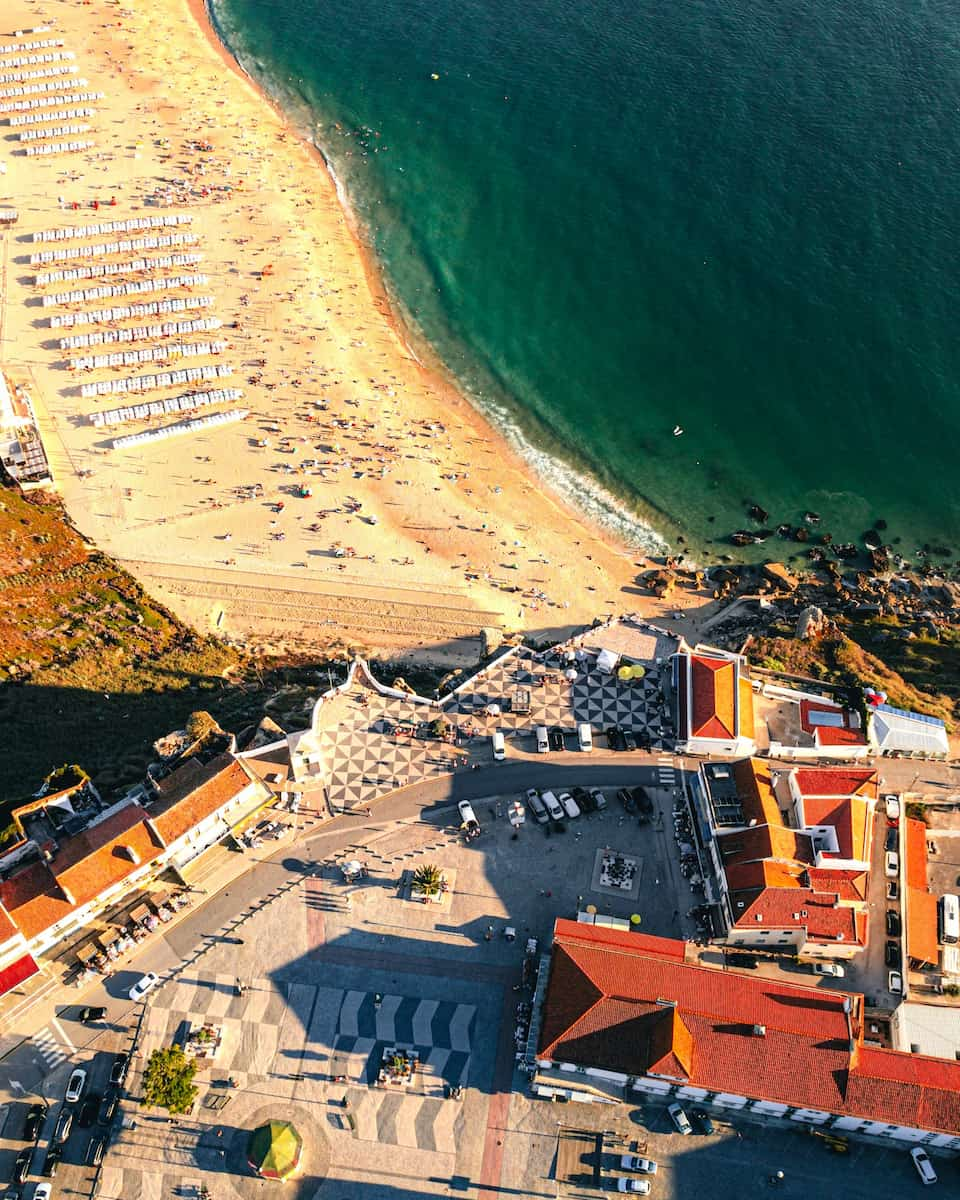
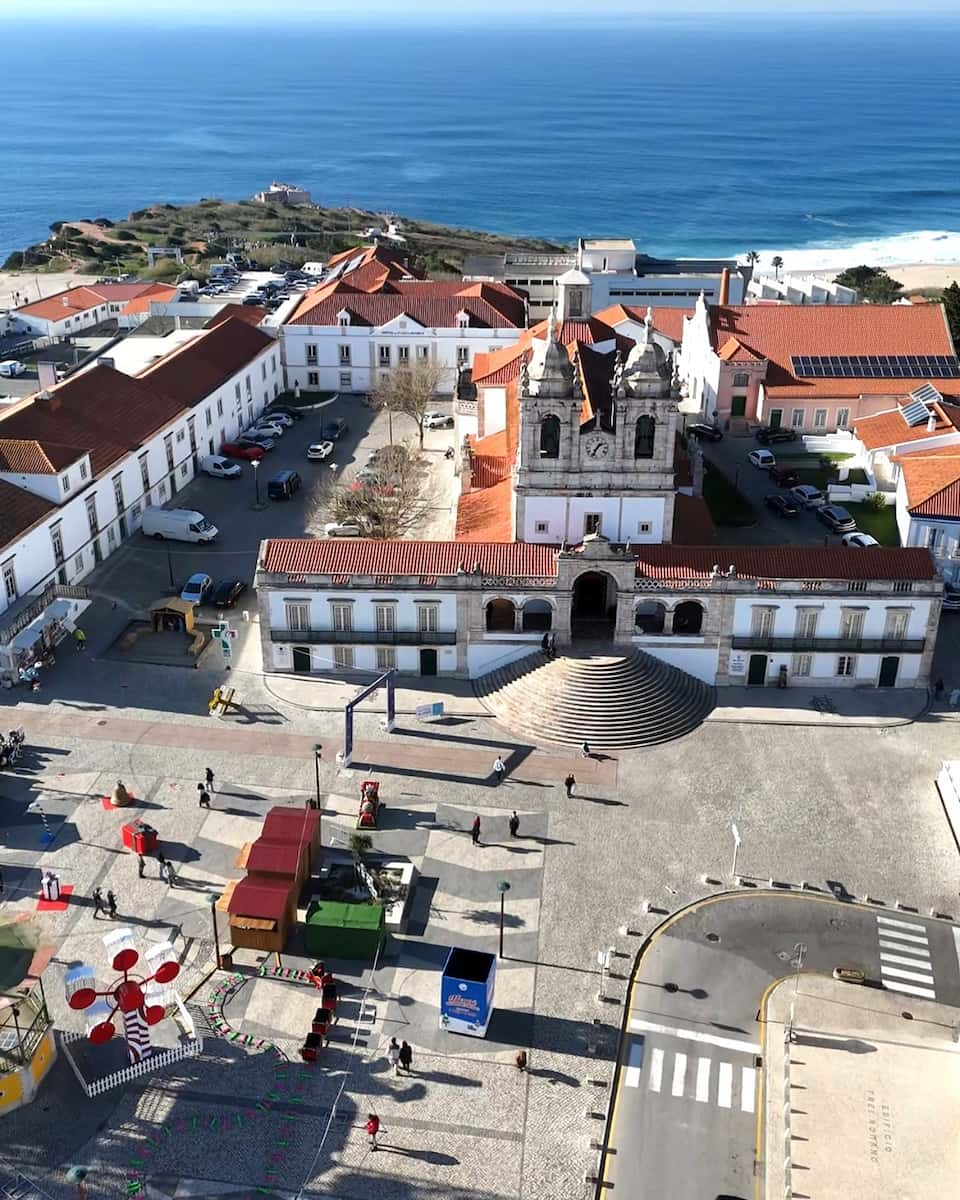

Two-level town. What fascinated me about Nazaré was its unique geography – divided between the lower town (Praia) with its beautiful beach and the upper town (Sítio) perched on a cliff 110 meters above. I rode the funicular (€1.50 one-way) between the two sections, though there’s also a challenging stairway for the energetic.
Beach experience. Nazaré’s main beach is a stunning 1.5km stretch of golden sand. Unlike the wild Praia do Norte where the giant waves hit, this beach is perfect for swimming and sunbathing. I rented a sunbed and umbrella (€10 for the day) and enjoyed watching the colorful fishing boats and traditional beach life. The water was refreshingly cool even in summer.
Cultural traditions. Walking through Nazaré, I noticed women wearing the traditional seven-layered skirts that are unique to this fishing community. At the daily morning fish market near the beach, I watched as catch was auctioned and sold, a tradition that has continued for centuries. The dried fish hanging on racks along the beachfront is another distinctive local custom.
Viewpoints and history. From Sítio, the views over the coastline are breathtaking. I visited the small chapel of Nossa Senhora da Nazaré, built to commemorate a famous 12th-century miracle that supposedly occurred on these cliffs. Nearby, the Nazaré Lighthouse houses a surf museum (€1 entry) documenting the massive waves and surfing records set here.
- Nazaré Highlights:
- Praia do Norte (big wave viewing platform)
- Main beach (Praia da Nazaré)
- Funicular ride between lower and upper town
- Miradouro do Suberco (panoramic viewpoint)
- Nossa Senhora da Nazaré chapel
- Nazaré Lighthouse and Surf Museum
- Fresh seafood restaurants along the beachfront
- Traditional fish market (mornings only)
⭐ Best Activities
- Nazaré Jeep Safari – Embark on an exciting jeep safari adventure in Nazaré, exploring the rugged landscapes, hidden beaches, and panoramic viewpoints of this famous coastal area near Óbidos.
3. Caldas da Rainha (Ceramics and Spa)
Artistic heritage. Just 15 kilometers east of Óbidos, Caldas da Rainha makes for an easy half-day trip by local bus (€2.50 one-way, 20 minutes). I discovered a town with deep artistic roots, particularly famous for its distinctive ceramics tradition started by Rafael Bordallo Pinheiro in the late 19th century. His whimsical, nature-inspired designs remain iconic in Portuguese culture.
Ceramics museum. The highlight of my visit was the Museu da Cerâmica, housed in a beautiful 19th-century mansion. For just €3 entry, I explored an impressive collection spanning centuries of Portuguese ceramic art. The Bordallo Pinheiro pieces – especially the cabbage-shaped tableware and comical figurines – were particularly charming and uniquely Portuguese.
Factory visit. I continued my ceramics exploration at the Bordallo Pinheiro Factory, where visitors can watch artisans at work creating these distinctive pieces. The factory tour (€5) showed the entire production process from clay preparation to final glazing. The factory shop offers seconds at significantly discounted prices – I purchased a small cabbage-shaped bowl for €12 instead of the usual €25.
Thermal spa history. Caldas da Rainha (literally “Queen’s Hot Springs”) was founded around thermal waters discovered in the 15th century. While the historic hospital built by Queen Leonor is now closed for renovation, I visited the small museum in the park (€2 entry) that explains the town’s development as Portugal’s first purpose-built spa town.
Daily market. The town’s central square hosts a vibrant daily fruit and vegetable market that has operated continuously since the 15th century. I wandered through the colorful stalls, sampling local cheeses and seasonal fruits. The market vendors were friendly and eager to offer tastes of their produce, creating a genuinely local experience away from tourist crowds.
| Caldas da Rainha Attraction | Entry Fee | Opening Hours | Highlights |
|---|---|---|---|
| Museu da Cerâmica | €3 | 10:00-18:00 (closed Mondays) | Bordallo Pinheiro collection |
| Bordallo Pinheiro Factory | €5 tour | 10:30, 14:30 tours (weekdays) | Working production, factory shop |
| Thermal Hospital Museum | €2 | 10:00-13:00, 14:00-17:00 | Medical history, thermal waters |
| Parque D. Carlos I | Free | Always open | Beautiful gardens, lake, pavilions |
| Daily Market | Free | 07:00-14:00 | Fresh produce, local interaction |
⭐ Best Activities
- By the Hot Springs of Caldas da Rainha – Discover the therapeutic hot springs and rich ceramic heritage of Caldas da Rainha on this specialized tour from Lisbon, which can be combined with a visit to nearby Óbidos for a complete cultural experience.
FAQ about Visiting Obidos
How do I get to Óbidos from Lisbon?
You can reach Óbidos from Lisbon by bus, which takes about one hour and departs regularly from Campo Grande station. Driving from Lisbon is also easy, with the town located just north along the A8 expressway.
What are the best things to do near Óbidos?
Popular things to do near Óbidos include visiting the Buddha Eden Garden, exploring the beaches at Foz do Arelho, and taking a day trip to Peniche or Nazaré. These spots are easily reached by car and make great additions to your Portugal itinerary.
Is Óbidos a good stop on a Portugal road trip?
Óbidos is one of the best places to stop on a Portugal road trip, especially when traveling between Lisbon and Porto. The medieval town of Óbidos offers unique sights, local cuisine, and is well worth a visit for a few hours or an overnight stay.
Can you walk the castle walls in Óbidos?
Yes, you can walk the entire circuit of the castle walls, which surround the town for about 1.5 kilometers. The walk offers stunning views but is not suitable for those with a fear of heights, as the walls are unguarded in many places.
What should I see inside the castle of Óbidos?
The castle of Óbidos, known as Castelo de Óbidos, is now a hotel (Pousada Castelo de Óbidos) but you can explore its exterior and the surrounding city walls. Walking the ramparts and enjoying the panoramic views is one of the best things to do in Óbidos.
What is the Óbidos Municipal Museum known for?
The Óbidos Municipal Museum houses collections of Roman artifacts, religious art, and works by Josefa de Óbidos, one of the most prolific Baroque artists in Portugal. It offers a great introduction to the town’s rich history and culture.
Is Óbidos a UNESCO Creative City of Literature?
Yes, Óbidos is recognized as a UNESCO Creative City of Literature, celebrating its literary festivals, bookshops, and cultural events. This status makes it a special place to visit for book lovers and culture seekers.
How long should I spend in Óbidos?
Many visitors spend a half-day to one day in Óbidos as part of a day trip from Lisbon, but staying overnight lets you enjoy the town after the crowds leave. You can see the main sights in a few hours, but the evening atmosphere is especially charming.
What are the best things to do in Óbidos for families?
Families will enjoy walking the castle walls, tasting Ginja de Óbidos (with chocolate cups for adults), and visiting festivals like the Medieval Market or Christmas Village. The town is small and walkable, making it easy to explore with children.
Is Óbidos worth visiting as part of a Portugal itinerary?
Óbidos is well worth including in any Portugal travel plan, thanks to its medieval charm, history, and location just an hour from Lisbon. Whether as a day trip, a stop on a road trip, or an overnight stay, it’s one of the wonders of Portugal.

